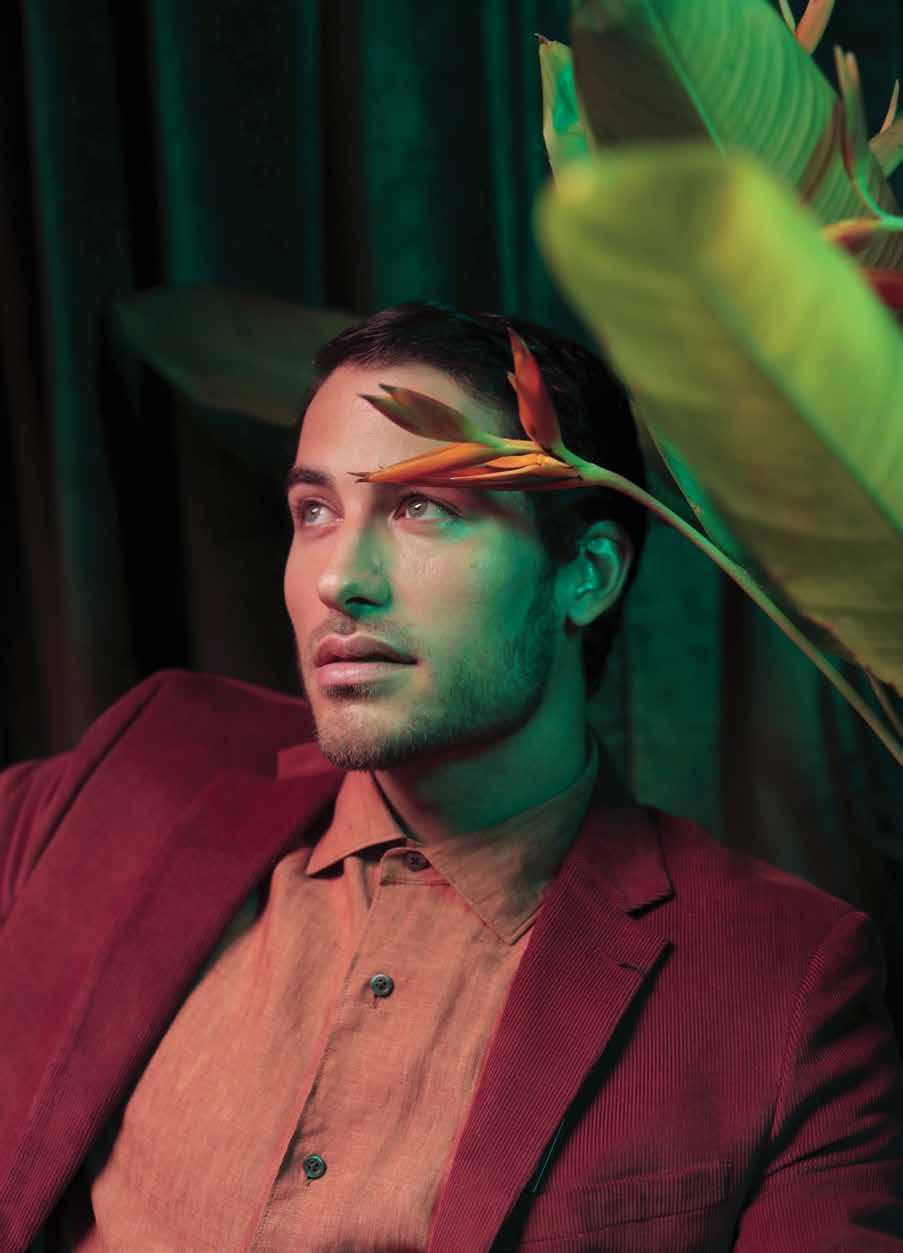

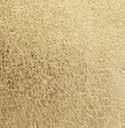
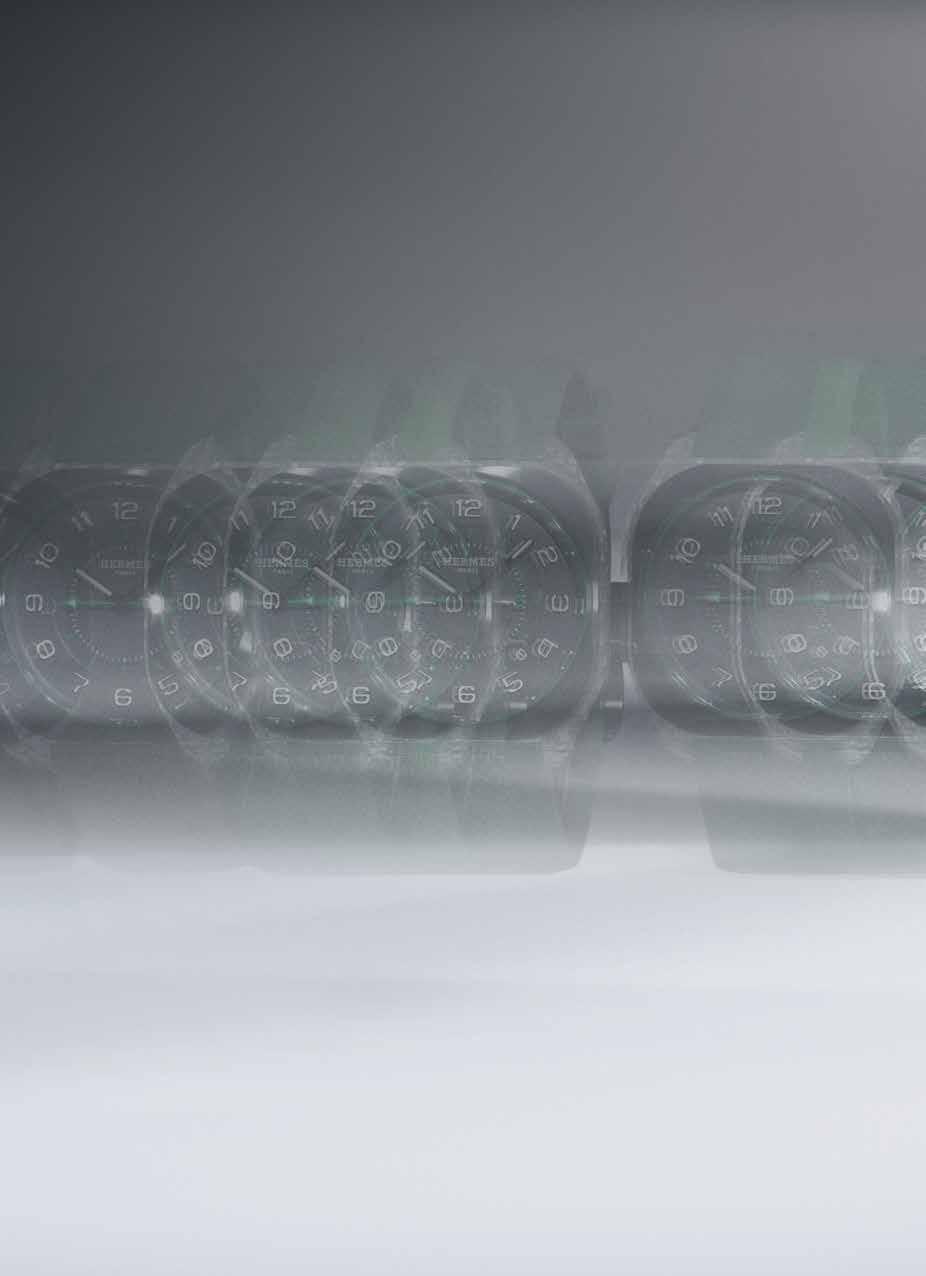
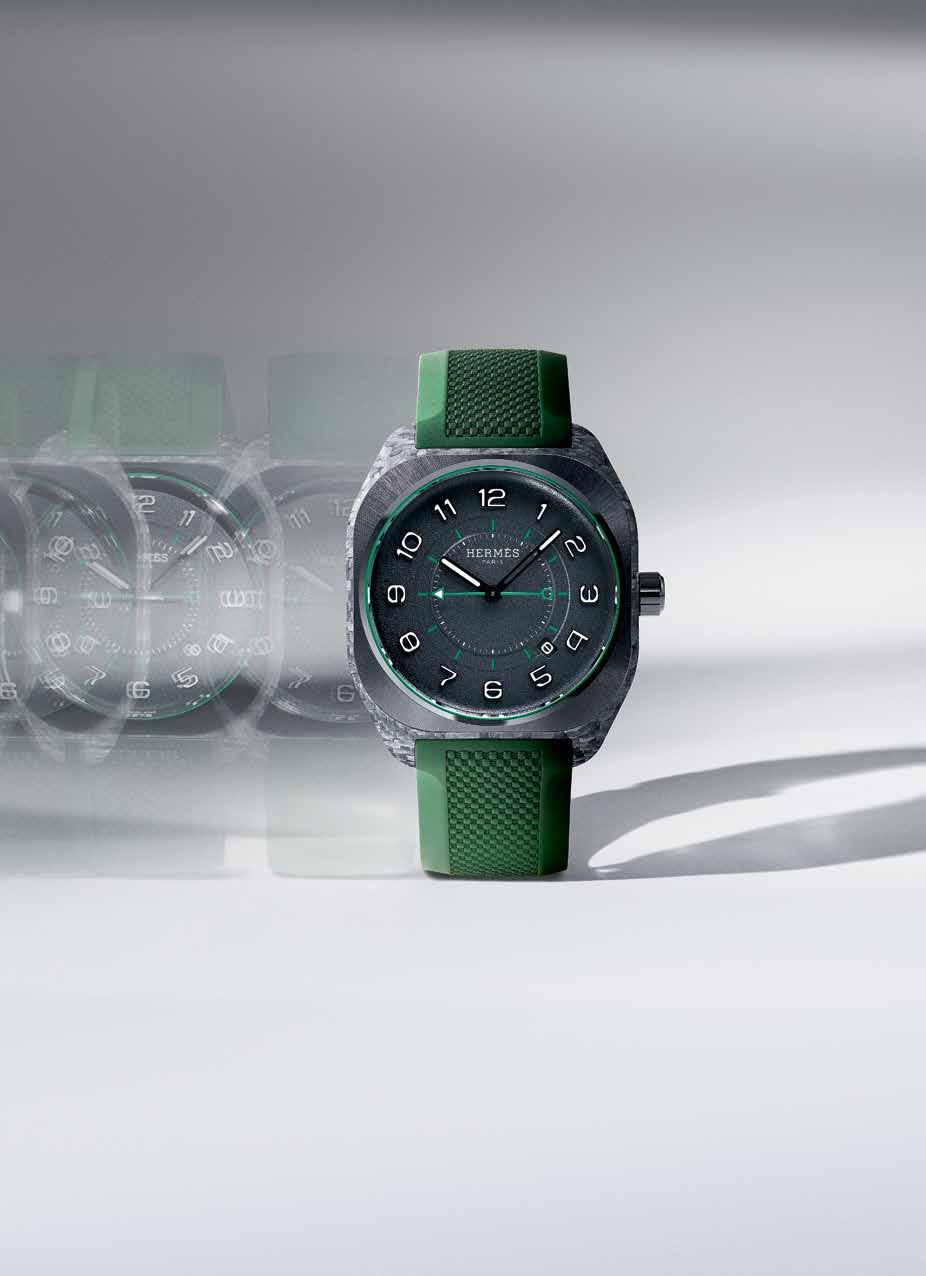
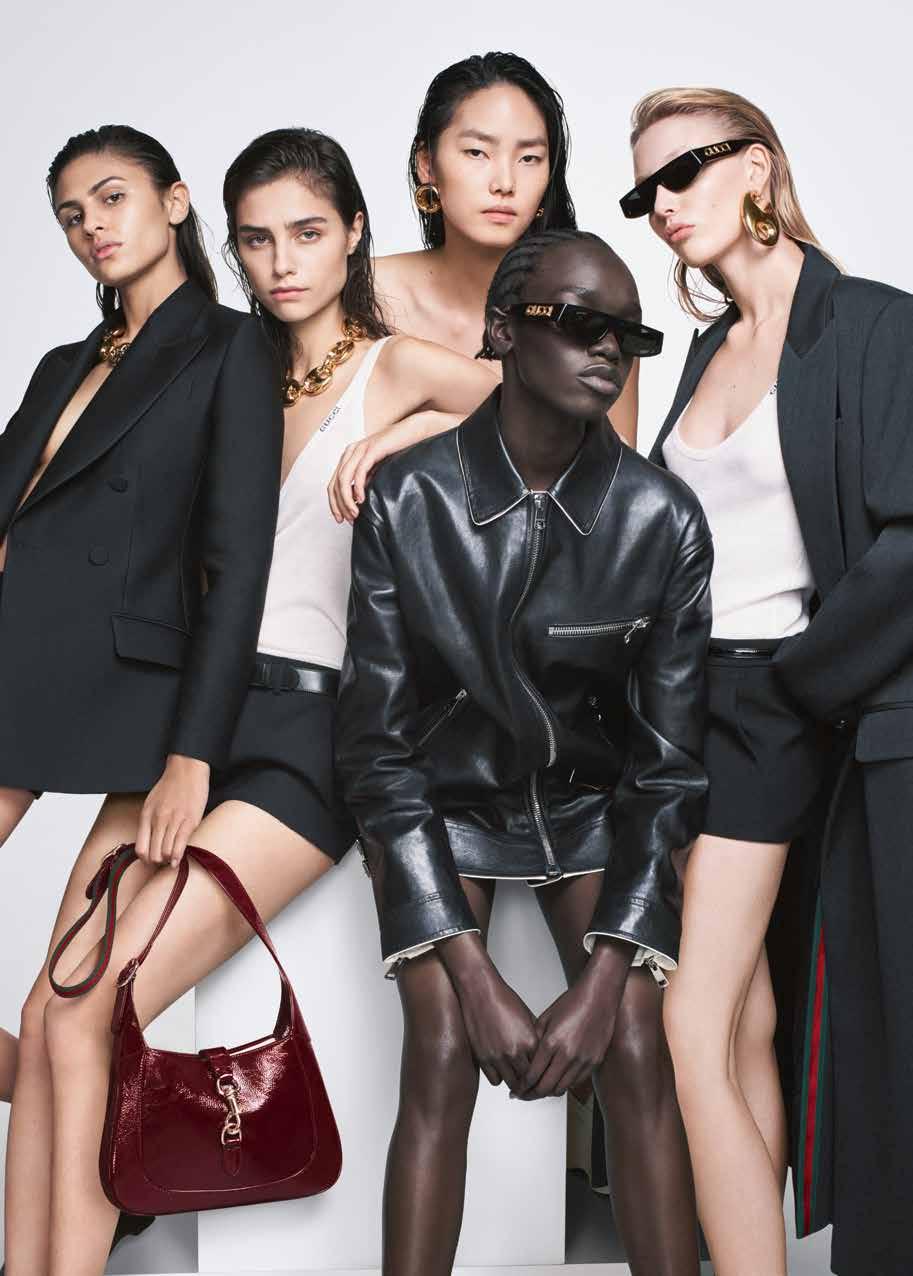




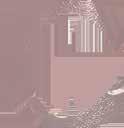


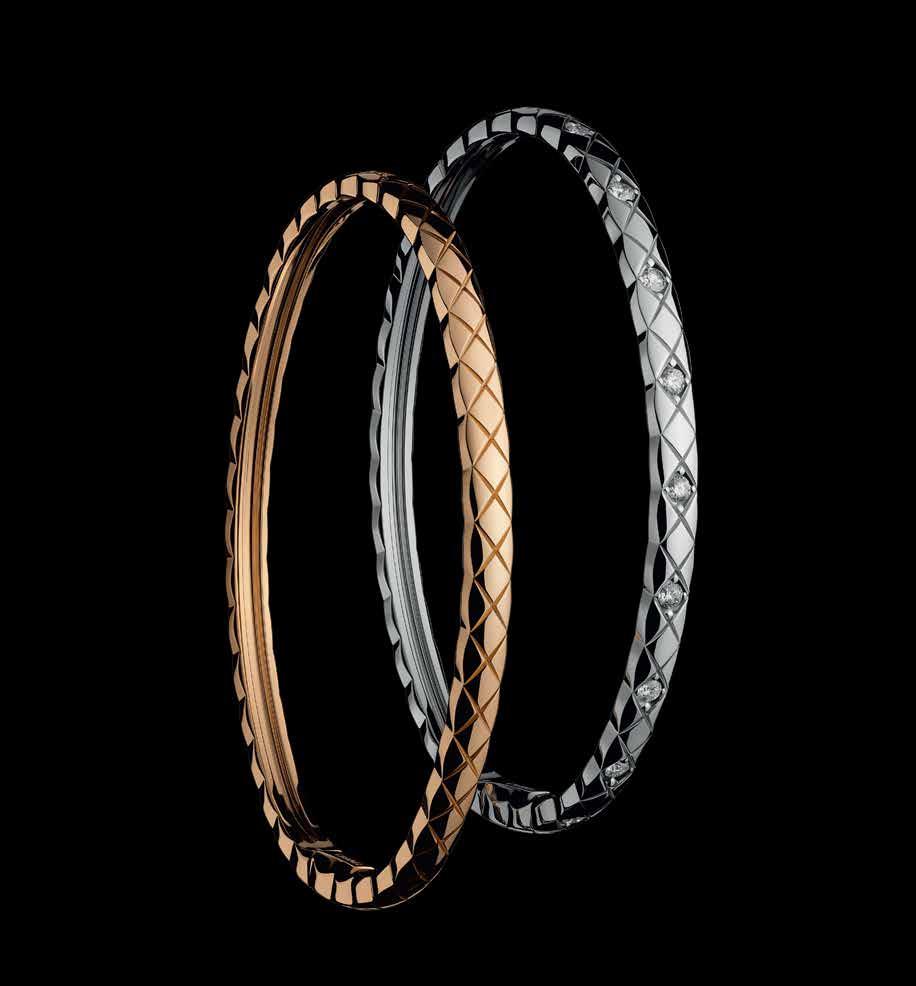

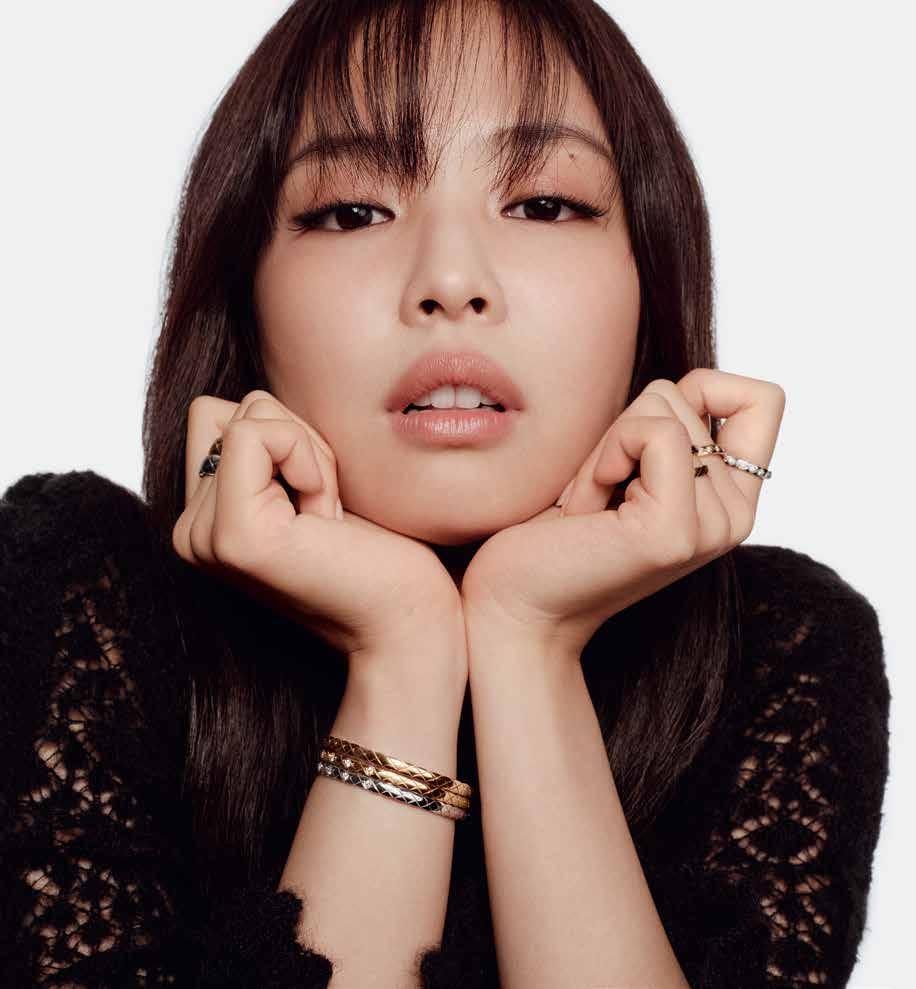




We’re thrilled to debut the latest edition of our custom publication, Violet, produced exclusively for Kobayashi Group. An homage to the matriarch of the Kobayashi ‘ohana, the name represents our values as a family-run company deeply rooted in the islands and serves as a symbol of our commitment to doing well by the communities we serve.
In the following pages, you’ll find stories of others moved, as we are, by that which they hold dear: a husband and wife who fell into a lifelong patronage of African American artists; a banana farmer with an inexplicable affinity for the fruit in its many exotic forms; chefs whose love for their land and culture inspires them to serve up gourmet fare with a sense of place.
We enter some of Honolulu’s collaborative studio spaces into the world of makers bonded by a shared passion for their craft, then we offer up a dose of nostalgia with a fond reverie about the local games many of us grew up playing in our “hanabata” days. We follow a Hawai‘i writer on a trip to discover the heart and soul of Istanbul, and in our ode to West Maui on page 98, we pay tribute to a beloved place in light of the tragic wildfires that swept the island last year.
This issue, join us in honoring storied settings, treasured moments, and paths paved with purpose, allowing them to inspire us all on our journeys forward, guided always by the things that matter most.
この度、コバヤシグループのカスタム雑誌「Violet」の最新号をお届 けできますことを、大変嬉しく思っております。コバヤシ家の女性家 長へのオマージュである雑誌名は、ハワイの島々に深く根ざした家 族経営の会社としての弊社の価値観を表し、サービスを提供します コミュニティに最善を尽くすという長年にわたる私どもの取り組み を象徴しています。
この号では、アフリカ系アメリカ人芸術家たちの活動に生涯 にわたって尽力することになった夫妻、バナナという果実の多彩な 魅力に愛情を抱くバナナ農家、土地と文化への愛を原動力に、その 土地に根ざしたグルメな料理を提供するシェフたちなど、私たちと 同じように、大切に思うものに心を突き動かされた人々の物語を紹 介します。
さらに、ホノルルの共同スタジオを訪ね、情熱を分かち合うク リエイターたちの世界に足を踏み入れました。そして、私たちの多くが 「ハナバタ時代(ハワイのピジン語で「小さな子どもの頃」の意)」に 遊んだ、ノスタルジー溢れる地元の遊びに思いを馳せます。ハワイ在 住ライターによるイスタンブールの心と魂を知る旅のエッセイ、また 98ページの西マウイへの頌詩では、昨年悲劇的な山火事に見舞わ れた愛すべき場所へ敬意を表しました。
今号では、物語に彩られた場所、大切にしてきた瞬間、そして 目的を持って切り開かれてきた数々の道を讃えています。それが、 私たち一人ひとりの卓越の極みを目指して進む、これからの旅路に インスピレーションをもたらし、常に最も大切なものに導かれます ように。
10 LETTER From the Developer
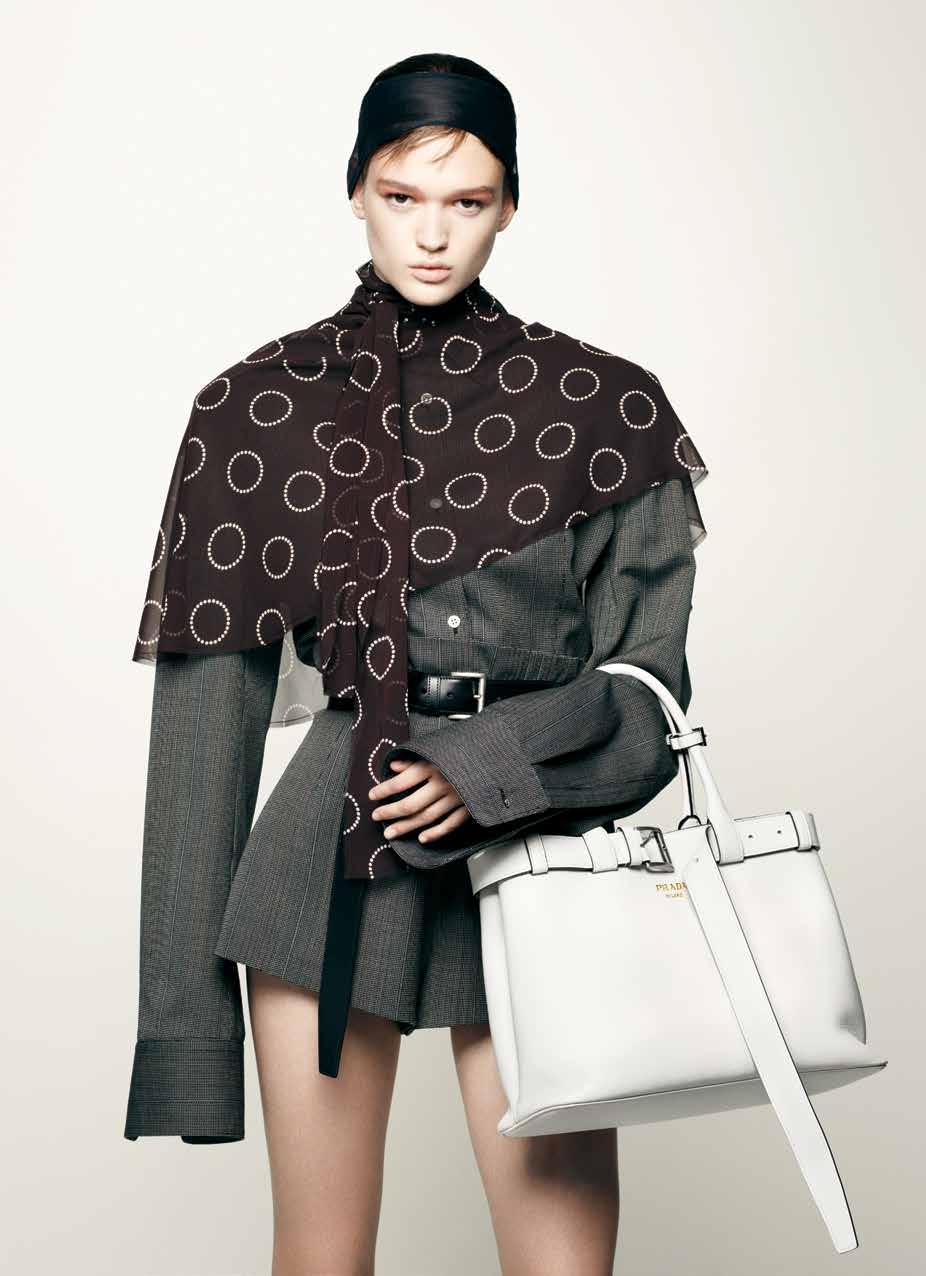
CEO & PUBLISHER
Jason Cutinella
PARTNER & GM, HAWAI‘I
Joe V. Bock
EDITORIAL DIRECTOR
Lauren McNally
EDITORIAL VIDEO DIRECTOR
Matthew Dekneef
MANAGING EDITOR
Eunica Escalante
SENIOR EDITOR
Rae Sojot
SENIOR PHOTOGRAPHER
John Hook
MANAGING DESIGNER
Taylor Niimoto
DESIGNER
Eleazar Herradura
TRANSLATIONS
Stray Moon LLC
PUBLISHED BY:
NMG Network
41 N. Hotel St. Honolulu, HI 96817
Violet is published exclusively for:
CREATIVE SERVICES
Gerard Elmore
VP Film
Kristine Pontecha
Client Services Director
Kaitlyn Ledzian
Studio Director/Producer
Taylor Kondo
Producer
Blake Abes
Romeo Lapitan Filmmakers
Jhante Iga
Erick Melanson
Video Editors
Brigid Pittman
Global Digital Content & Communications Manager
Arriana Veloso
Digital Production Designer
ADVERTISING
Mike Wiley VP Sales
Claudia Silver VP Global Partnerships
Alejandro Moxey Senior Director, Sales
Francine Naoko Beppu
Integrated Marketing Lead
Simone Perez Advertising Director
Tacy Bedell Director of Sales
Rachel Lee Account Executive
Will Forni Sales Coordinator
OPERATIONS
Gary Payne Accounts Receivable
Sabrine Rivera Operations Director
Sheri Salmon Traffic Manager
KOBAYASHI GROUP © 2024 by NMG Network, LLC. All rights reserved. No part of this publication may be reprinted without the written consent of the publisher. Opinions are solely those of the contributors and are not necessarily endorsed by NMG Network.

12

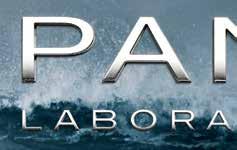





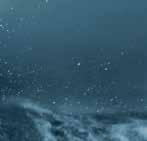


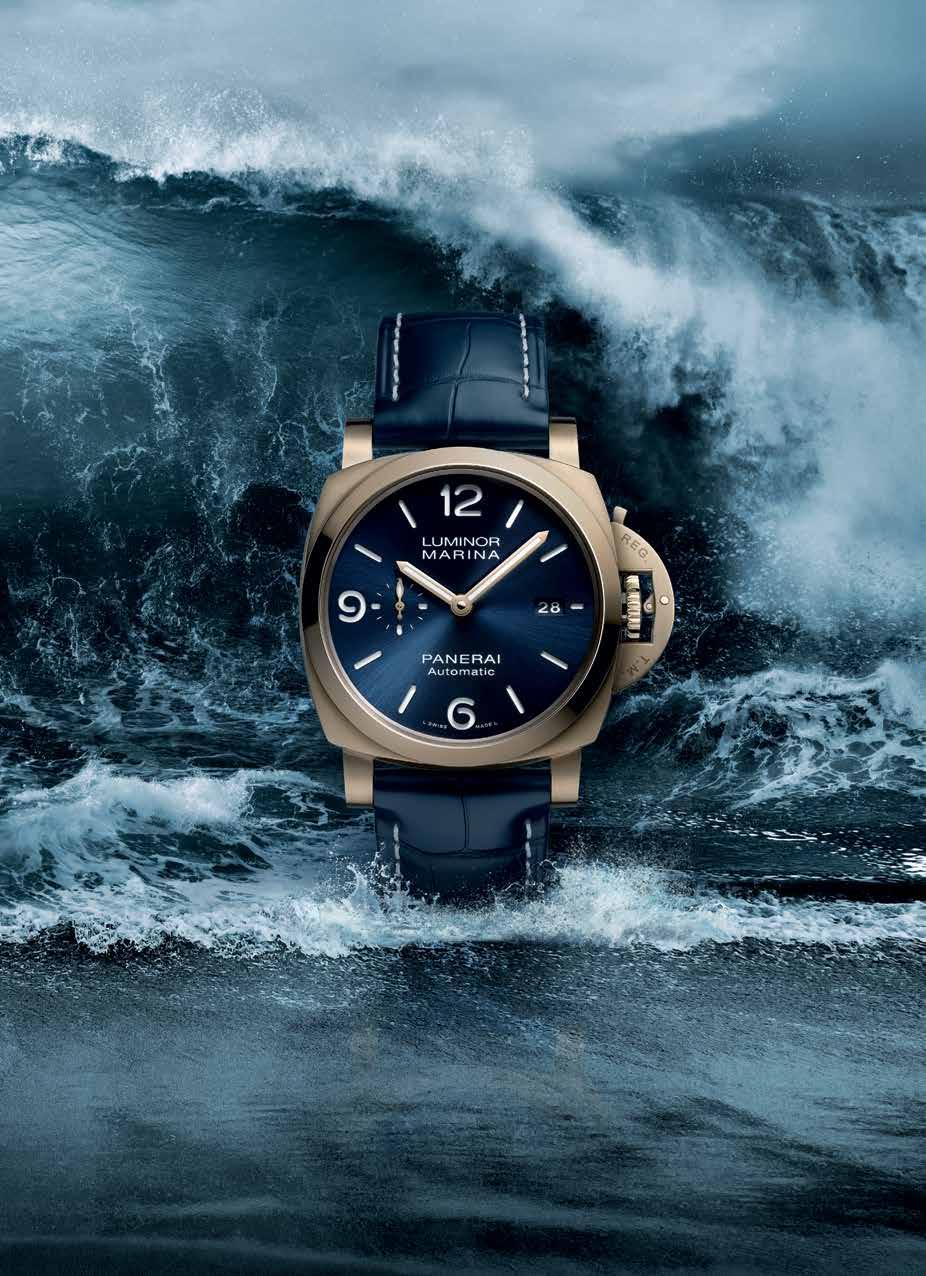
Opening May 2024 – Ala Moana Center 1 (877) 726-3724
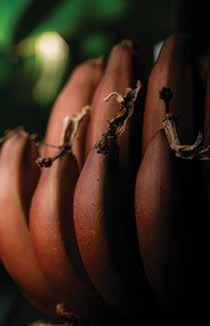

54 82 14 TABLE OF CONTENTS ARTS 22 Personal Matters BUSINESS 38 Making It CULTURE 54 Field Experiment 64 Child’s Play DESIGN 82 Tropicana Luxe ESCAPES 98 Of Hope and History 112 Ordinary Marvels FARE 126 Leading Ladies ON THE COVER
Model Chico Whitmore is photographed by Harold Julian at Green Lady Cocktail Room in Waikīkī.

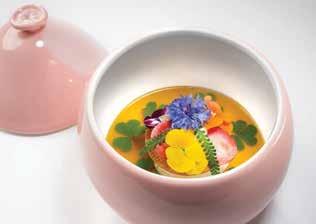
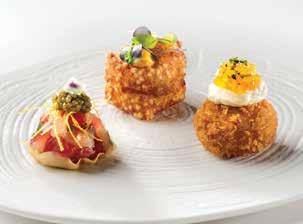
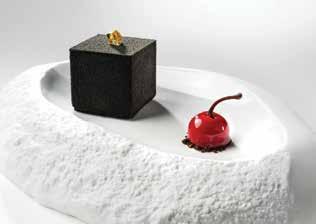
A NEW ERA AT MUGEN BEGINS
Embark on a captivating culinary journey as Mugen unveils a new chapter of taste and elegance.
Every bite tells a story in a dynamic five-course dinner menu that celebrates the fusion of hyper-local and seasonal ingredients sourced locally and globally. Indulge your senses throughout the day: serving breakfast, dinner and afternoon tea.
mugenwaikiki.com | 808.377.2247 | 2452 Kalakaua Avenue, Honolulu, Hawaii 96815 Located in the mezzanine of ESPACIO The Jewel of Waikiki — A Forbes Travel Guide 5-Star & AAA Five-Diamond Hotel

表紙 写真:ハロルド・ジュリアン
アート 22
個人的なこと ビジネス 38
創作の場
文化 54
畑での実験 64
子どもの遊び
デザイン 82
トロピカル·リュクス
エスケープ 98
希望と歴史 112
日常の中の驚き 食 126
業界を率いる女性たち

98 16 22 目次
モデル:チコ・ウィットモア 撮影場所:グリーンレディ・カク テルルーム
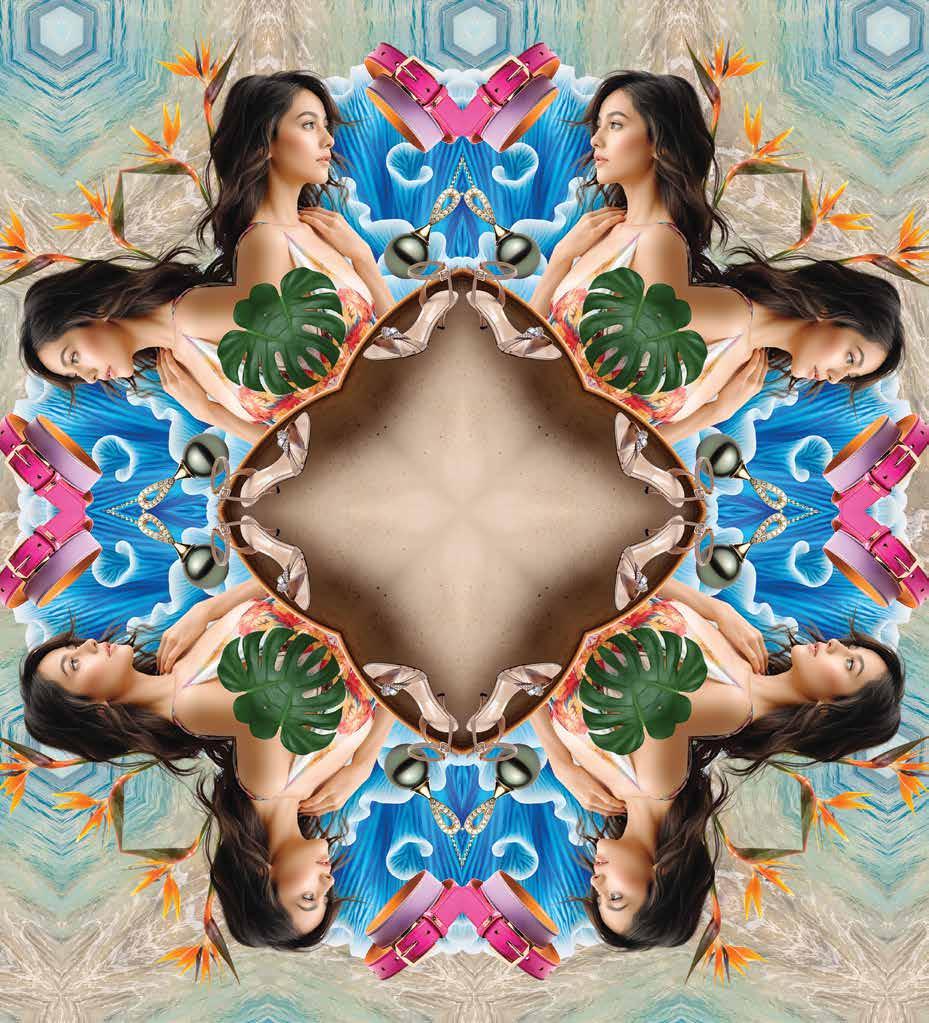
WINDSWEPT CURLS & SHIMMERING PEARLS CANADA GOOSE | CELINE | CHANEL | MARIPOSA RESTAURANT | PRADA | TIFFANY & CO. 350+ STORES & RESTAURANTS AT THE HEART OF THE PACIFIC ALAMOANACENTER.COM

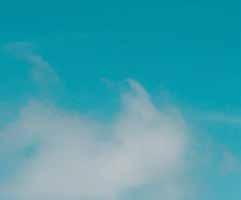

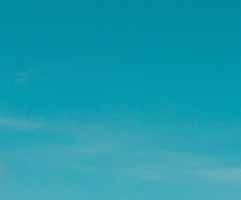
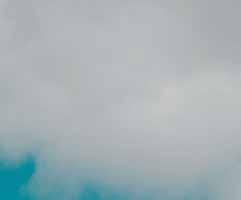



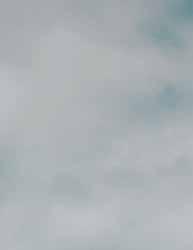

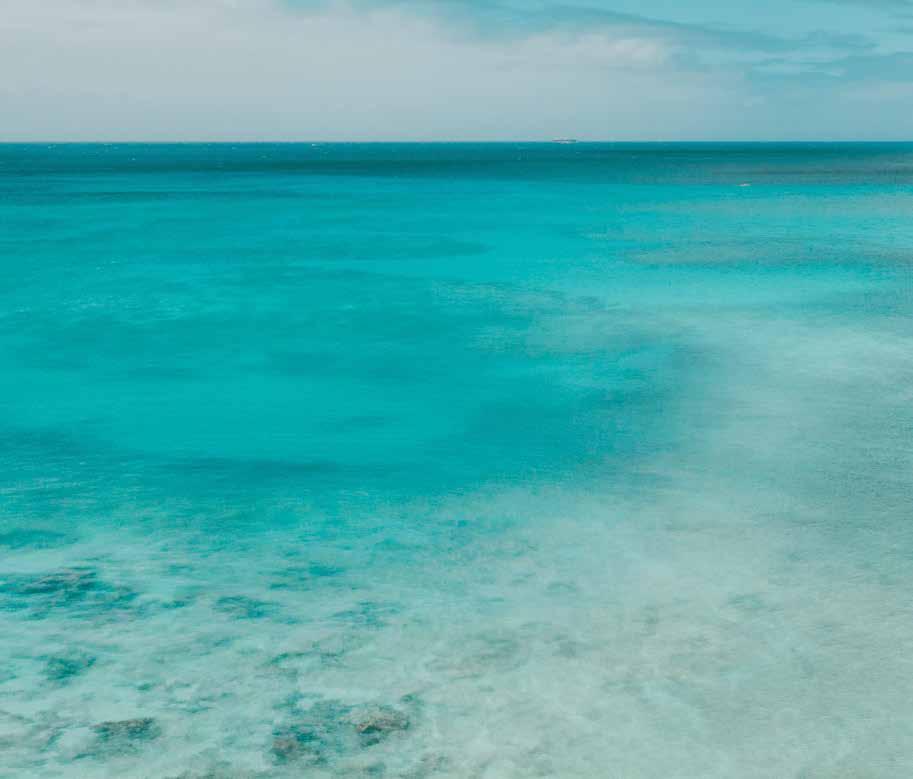
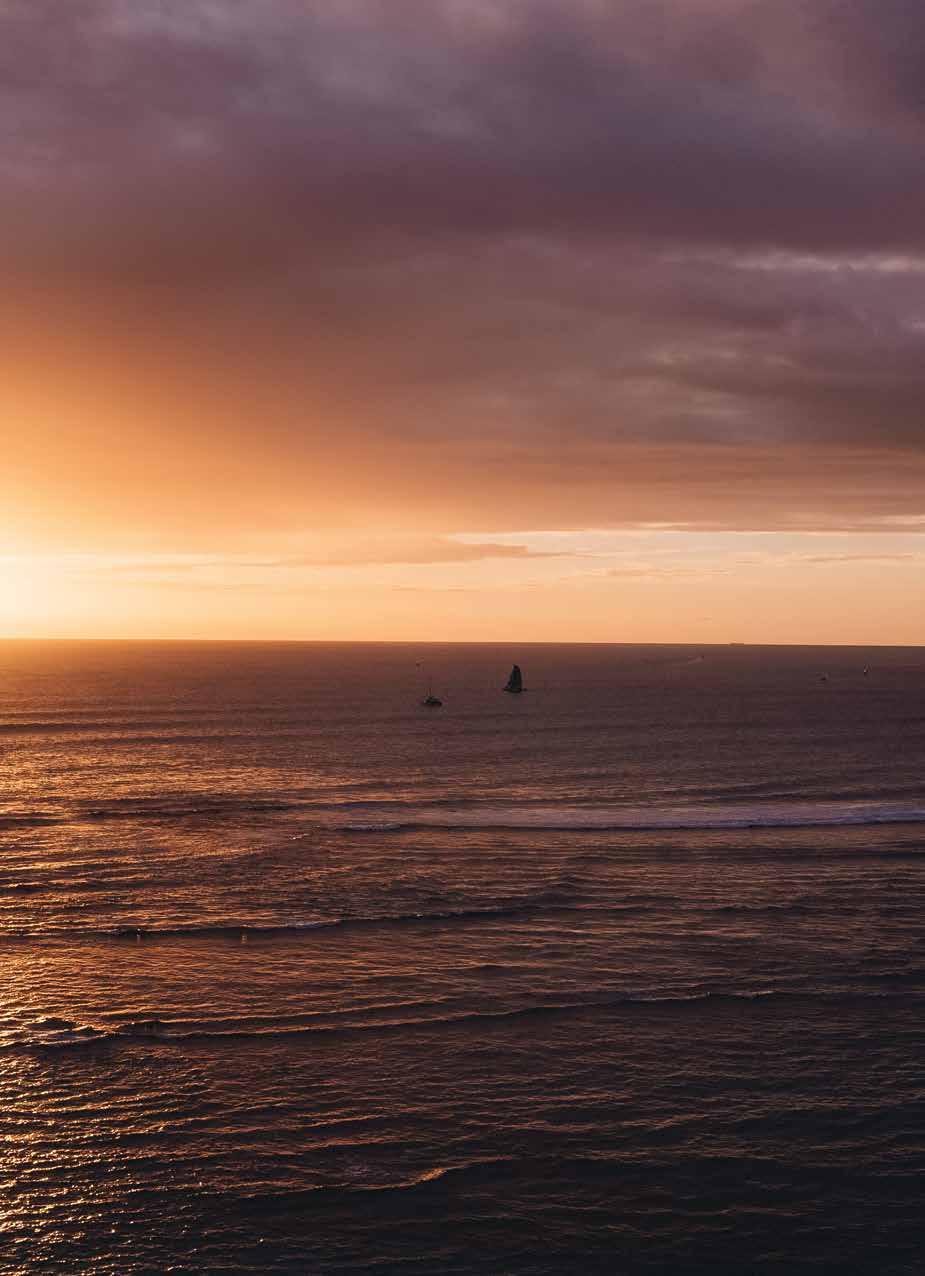



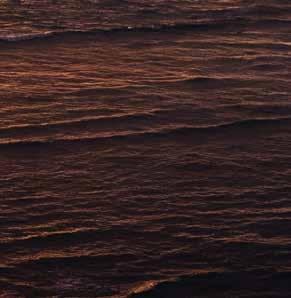
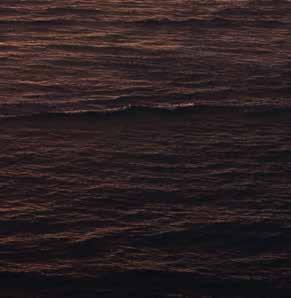


notions
AR TS
that amplify
アート A
Visual
the soul of the city
21
A
Personal Matters
by Mitchell Kuga
22 ARTS Steeles
= マーク·クシミ、ホノルル美術館
写真
個人的なこと 文 = ミッチェル·クガ
Text
A
Images by Mark Kushimi and courtesy of the Honolulu Museum of Art
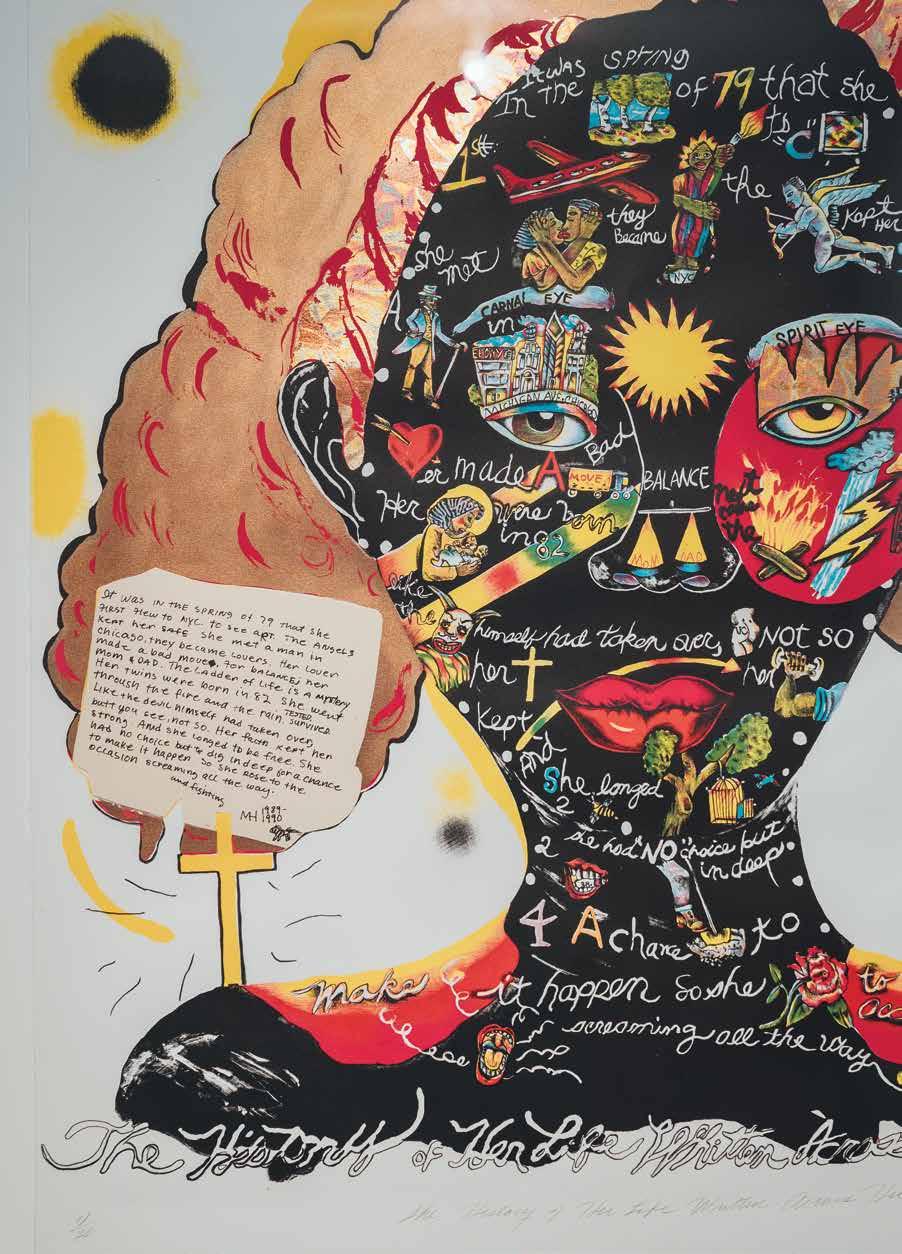
A patron couple’s personal collection of art by prominent African American artists finds a new home at the Honolulu Museum of Art.
才気豊かなアフリカ系アメリカ人アーティストの作品を収集する 夫妻の個人コレクションが、ホノルル美術館の所蔵品に
Translation by Mutsumi Matsunobu 訳 = 松延むつみ
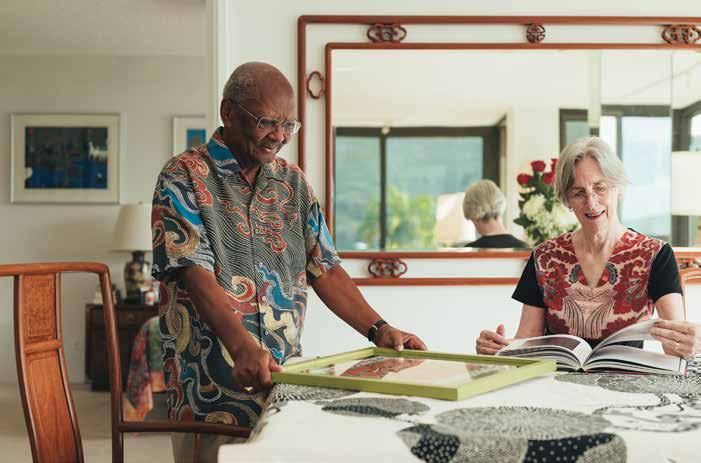
The abundance of artwork hanging in Jean and Robert Steele’s Hawaii Kai condo traces a genealogy of African American printmaking. There are pieces by pioneering artists like James Lesesne Wells, a graphic artist and printmaker influential to the Harlem Renaissance, and Romare Bearden, whose vibrant collages depict the Black lived experience. Yet there’s one small piece in the couple’s bedroom that stands apart from the rest: Tony Northern’s Three African Women in Profile, which the artist painted on the side of a cardboard box. Robert purchased the painting in 1968 for $10 from an art gallery in Harlem, but not before asking his wife for
ロバート·スティールさんと妻のジーンさんが住むハワイカイのコンドミニアム には、アフリカ系アメリカ人による版画芸術の流れをくむ作品が数多く飾られ ている。その中には、ハーレム·ルネサンスに影響を与えたグラフィックアーティ ストで版画家のジェームス·レセイン·ウェルズ、黒人の生活体験を生き生きとし たコラージュで表現したロメア·ビアデンなど、先駆的なアーティストの作品も 含まれている。だが、夫妻の寝室には、他の作品とは一線を画す小さな作品が あった。それは、トニー·ノーザンが段ボール箱の側面に描いた《三人のアフリ カ人女性の横顔》だ。この絵は1968年にロバートさんがハーレムの画廊から 10ドルで手に入れた作品だ。購入前に妻に許可を求めた際、その価格にジー ンさんは思わず声を上げたという。当時の二人はまだ大学院生で、
24
A ARTS Steeles
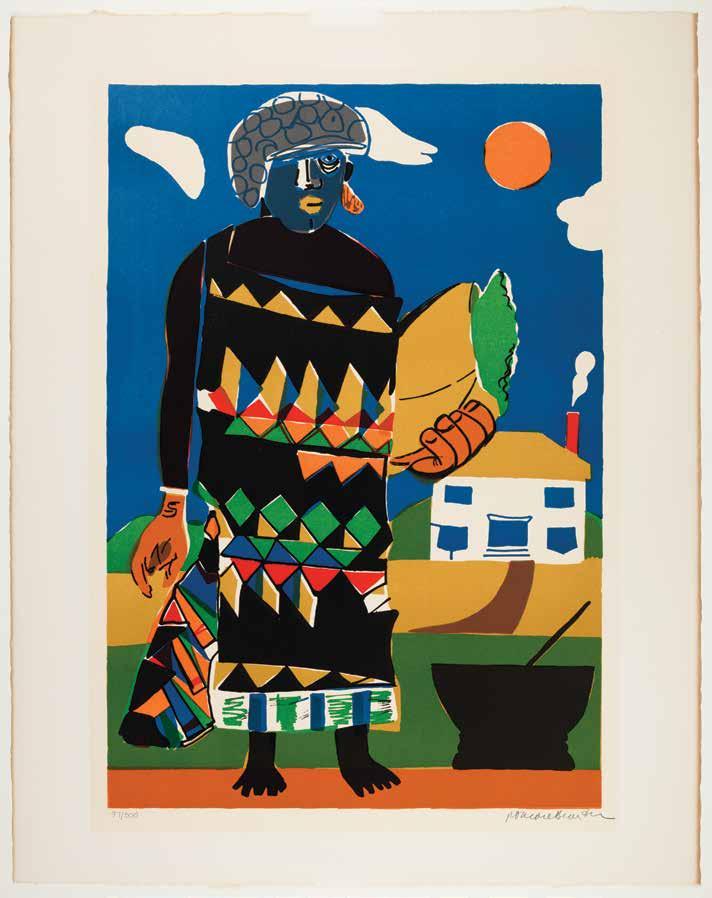 Romare Bearden’s lithograph Pilate (1979).
© 2023 Romare Bearden Foundation / Licensed by VAGA at Artists Rights Society (ARS), NY.
Romare Bearden’s lithograph Pilate (1979).
© 2023 Romare Bearden Foundation / Licensed by VAGA at Artists Rights Society (ARS), NY.
permission first. Jean winced at the price. They were both graduate students at the time, with Robert interning at the Harlem Hospital, and the purchase would significantly cut into their weekly grocery budget. After further discussion, she acquiesced, launching—to both of their surprise—an over five-decade journey of collecting works on paper by African American artists.
“Forward Together: African American Prints from the Jean and Robert Steele Collection,” shown in two rotations at the Honolulu Museum of Art through September 2024, comprises a significant segment of that collection. Acquired by the museum as a partial gift from the Steeles, the exhibition’s 55 prints by 25 artists spans four decades and more than doubles the African American artists represented in HoMA’s permanent collection. “I don’t think one can appreciate or understand the breadth of American art unless it includes the contributions of Native Americans, Asian Americans, [and] African Americans,” says Robert, who in 2020 donated 100 pieces from their collection to Yale University, where he earned his Ph.D. in clinical community psychology. “I see part of our mission as completing or rounding out that story.”
The acquisition reflects the Steeles’ taste as collectors, favoring figurative works in striking colors and various mediums by artists like Faith Ringgold, David Driskell, Sam Gillian, and Joyce Scott. The couple met in 1967 while attending Episcopal theological school, and themes related to spirituality, social justice, and Black history run throughout the collection. Jacob Lawrence’s Forward Together, an expressive silkscreen that inspired the exhibition’s title, pays homage to Harriet Tubman. Ringgold’s Somebody Stole My Broken Heart depicts the psychedelic exuberance of a jazz club.
HoMA’s director and CEO, Halona Norton-Westbrook, calls the Steeles’ gift “transformational,” stressing not only the diversity of the collection but the intimate nature of how it came together. “That component of how they collect through building friendships and relationships with artists—it lends this depth to it,” Norton-Westbrook says. “There’s something extremely special about a collection that grows out of personal relationships with artists that have been built over time.”
The Steeles cultivated many of those relationships while Robert served as the executive director of the University of Maryland’s David C. Driskell Center for the Study of the Visual Arts and Culture of African Americans and the African Diaspora, from 2002 to 2012. (Prior, he was a professor and dean at the university’s College of
ロバートさんはハーレム病院でインターンをしていた。この絵を買うことは、毎 週の食費が大幅に削られることを意味していたのだ。話し合いを重ねた結果、 妻は購入を承諾。そのときは二人とも夢にも思っていなかったが、これこそが 50年以上にわたるアフリカ系アメリカ人アーティストが紙に描いた作品を収 集する旅の始まりだった。
ホノルル美術館にて2024年9月まで開催されている「フォワード·トゥギ ャザー:アフリカン·アメリカン·プリント(ジーン·アンド·ロバート·スティール·コ レクションより)」では、コレクションの主要作品を2回に分けて展示している。
展示内容は、スティール夫妻からの一部寄贈により美術館が入手した版画で、 夫妻が40年かけて収集した25人のアーティストによる55点の作品が揃う。
ホノルル美術館の常設コレクションとして展示されているアフリカ系アメリカ 人アーティストの作品数の倍以上の点数だ。ロバートさんは、2020年に自身 のコレクションから100点を、臨床コミュニティ心理学の博士号を取得した母 校のイェール大学に寄贈した。そして、「アメリカ先住民やアジア系アメリカ人 さらにはアフリカ系アメリカ人の貢献を語ることなしに、アメリカ美術の豊か さを評価したり、理解したりすることはできないと思っています」と語っている。 「この物語を完成、もしくは締めくくることが、私たちの使命の一部だと考えて いるのです」
コレクションに収められた作品には、フェイス·リングゴールド、デイヴィ ッド·ドリスケル、サム·ギリアン、ジョイス·スコットなど、印象的な色彩とさまざ まな媒体を用いた具象作品を好むスティール夫妻のコレクターとしての嗜好 が反映されている。夫妻は、米国聖公会の神学校に通っていた1967年に出会 った。そのせいか、夫妻のコレクションには精神性、そして社会正義や黒人の 歴史に関連したテーマが全体的に貫かれている。展覧会のタイトルのインスピ レーションとなったジェイコブ·ローレンス作の《フォワード·トゥギャザー》は、 奴隷解放運動家であり女性解放運動家として活躍したハリエット·タブマンの 偉業を称えた、表現力に富んだシルクスクリーン作品だ。リングゴールド作の 《サムバディ·ストール·マイ·ブロークン·ハート》は、ジャズクラブのサイケデリッ クなエネルギーを描いている。
ホノルル美術館の館長で最高経営責任者のハロナ·ノートン·ウェストブ ルックさんは、スティール夫妻の寄贈を「トランスフォーメーション(変革的)」 と呼び、コレクションの多様性はもちろん、作品が集められた経緯と親密性に ついて力説する。「アーティストとの友情を育んで関係を築き、作品を収集して いくという取り組みが、コレクションに深みを与えています」とノートン·ウェスト ブルックさんは語る。「時間をかけて築きあげたアーティストとの個人的な関係 から生まれるコレクションには、何か非常に特別なものを感じるのです」
26
A ARTS Steeles
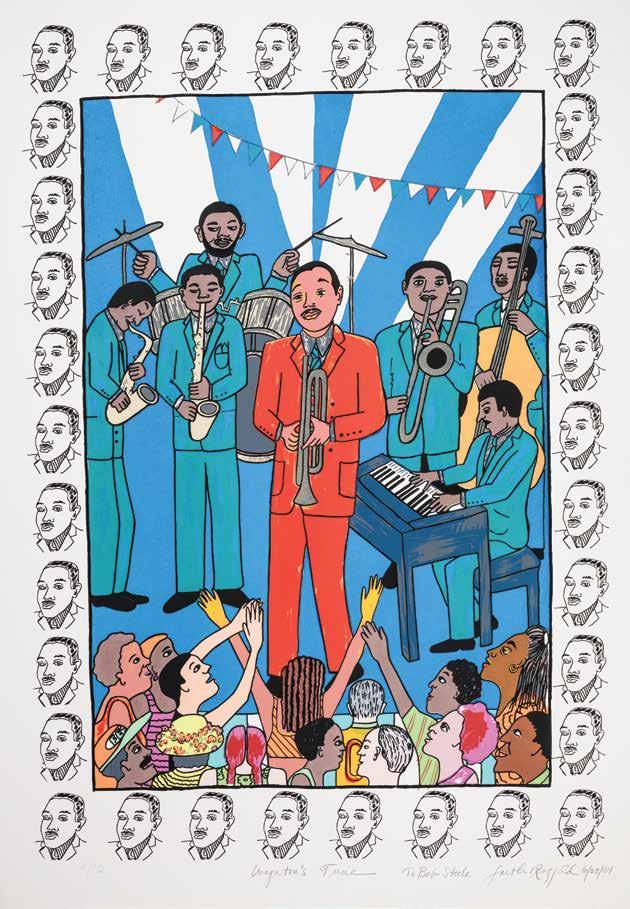 Faith Ringgold’s screenprint Wynton’s Tune (2004).
©2023 Faith Ringgold / Artists Rights Society (ARS), New York, Courtesy ACA Galleries, New York.
Faith Ringgold’s screenprint Wynton’s Tune (2004).
©2023 Faith Ringgold / Artists Rights Society (ARS), New York, Courtesy ACA Galleries, New York.

Jacob Lawrence’s screenprint Forward Together (1997) inspired the name of a Honolulu Museum of Art exhibition featuring African American prints from Jean and Robert Steele.
©
2023 The Jacob and Gwendolyn Knight Lawrence Foundation, Seattle / Artists Rights Society (ARS), New York.
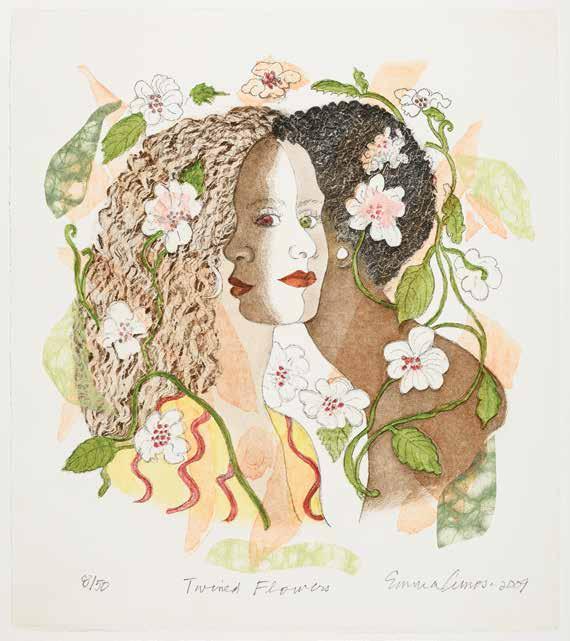 Emma Amos’ etching Twined Flowers (2009).
© 2023 Emma Amos / Licensed by VAGA at Artists Rights Society (ARS), NY.
Emma Amos’ etching Twined Flowers (2009).
© 2023 Emma Amos / Licensed by VAGA at Artists Rights Society (ARS), NY.
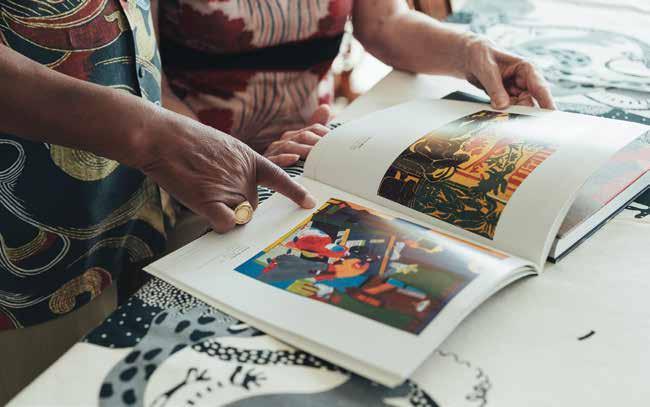
Jean and Robert Steele have been collecting works by African American artists for more than five decades, including Romare Bearden’s screenprint Girl in the Garden (1979), pictured on opposite page. © 2023 Romare Bearden Foundation / Licensed by VAGA at Artists Rights Society (ARS), NY.
Behavior and Social Sciences.) It was a unique position for someone who had never taken an art history class, yet Robert’s personal history of art collecting proved he was up to the task. Over the decades, the Steeles embarked on a self-directed education in the arts, joining collectors’ clubs, attending lectures, scouring catalogs and art books, and visiting artists’ studios. In 2012, the Driskell Center launched “Successions,” a traveling show that featured 62 prints from the Steeles’ collection. The show garnered Robert, who deemed Driskell “the father of African American art history,” national attention.
The Steeles moved to O‘ahu in 2016, where their daughter lived and where Jean’s mother was born and raised. It’s a connection dating back to 1852, when Jean’s great-great-grandfather emigrated there from Portugal. While growing up in California, Hawai‘i references peppered Jean’s household. “If a picture on the wall wasn’t straight, it was kapakahi (crooked),” she says. “We had all these words and place names.” In 2020, Jean and Robert visited HoMA’s “30 Americans.” It featured works by 30 contemporary artists, which included Mickalene Thomas, Kara Walker, and Carrie Mae Weems, connected through their African American cultural history. The show impressed the couple, and they began speaking with the museum about expanding the African American artists represented in its permanent collection. The conversations eventually prompted HoMA’s director of curatorial affairs, Catherine Whitney, to make
スティール夫妻が築いたこうした関係の多くは、ロバートさんがアフリカ 系アメリカ人およびアフリカ人のディアスポラ(民族離散者)の視覚芸術およ び文化研究を目的とするメリーランド大学デヴィッド·C.ドリスケル·センターの 事務局長を務めた2002~2012年に培われた。(それ以前には、ロバートさん は同大学で行動社会科学部の教授兼学部長を務めていた)正式に美術史を 学んだことのない人物にとって、これは異色の人材配置といえる。だが、ロバー トさんが個人的に美術収集してきた経歴は、彼がその任務の適任者であるこ とを証明していた。夫妻は何十年にもわたり、収集家の集まるクラブに参加し たり、講義へ通ったり、カタログや美術書を研究し、またアーティストのスタジ オを訪れるなどして、芸術に関する知識を身につけた。2012年にはドリスケル· センターで、夫妻のコレクションから62点の版画を集めた巡回展「サクセッシ ョンズ」が開催された。この展覧会によって、ドリスケルを「アフリカ系アメリカ 人美術史の父」と称えるロバートさんは全米の注目を集めることになった。
スティール夫妻は、2016年にオアフ島に移住した。そこは、彼らの娘が暮 らす場所であり、ジーンさんの母親が生まれ育った場所でもあった。オアフ島と の縁は、ジーンさんの曽祖父がポルトガルから移住してきた1852年にまで遡る という。カリフォルニア育ちのジーンさんだが、家庭内ではハワイ的な言い回し が日常的に使われていた。「壁の絵がまっすぐ掛かっていなかったら、カパカヒ (ハワイ語で「曲がっている」の意)と言っていました」とジーンさん。「こんな風 に、ハワイ語の単語や地名を、普通に使っていたのです」と語る。2020年、夫妻
30
A ARTS Steeles
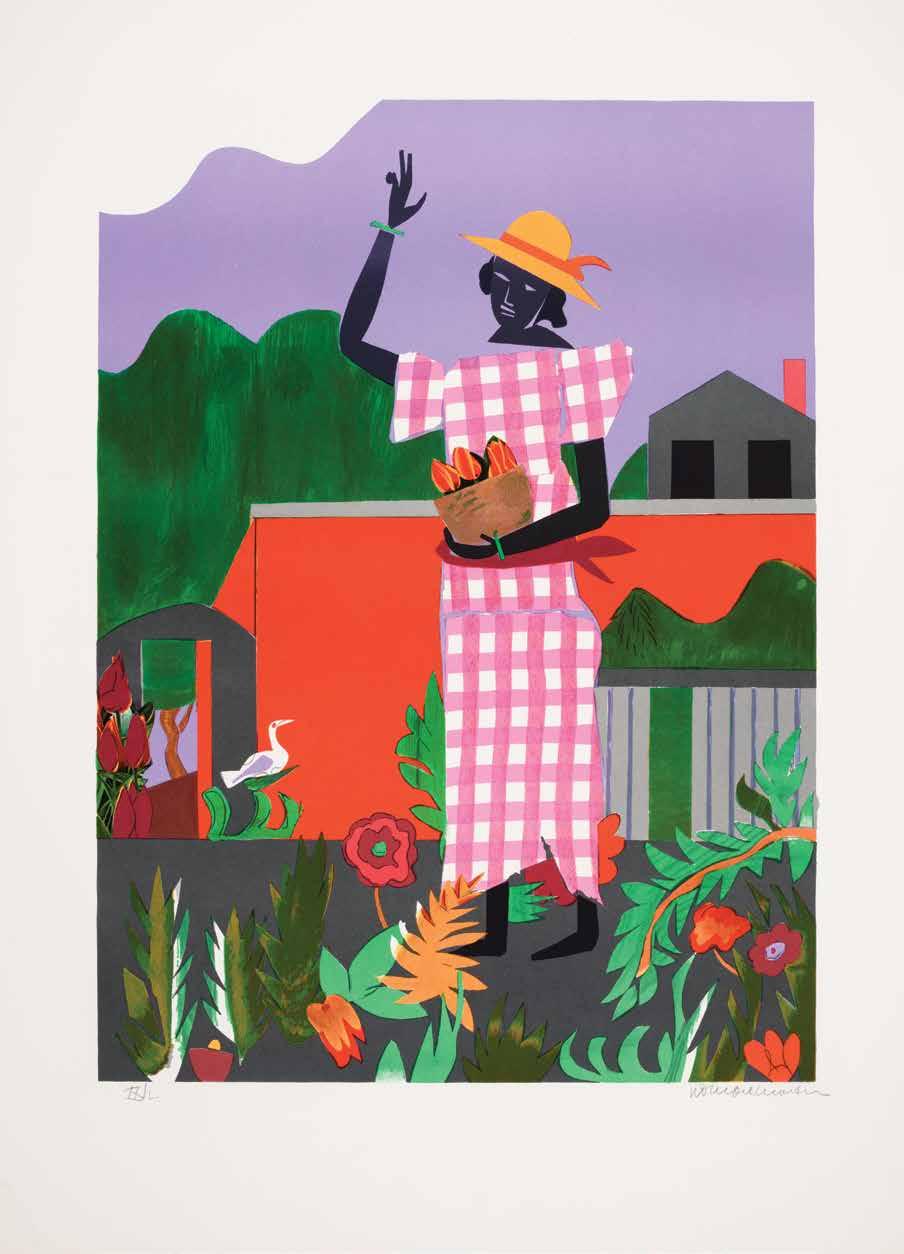
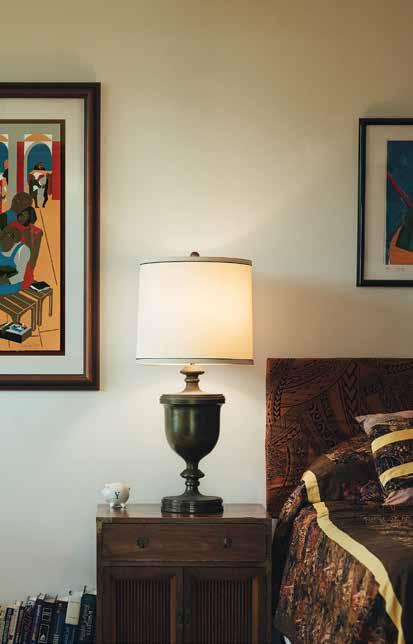
the trip to survey the bulk of the Steeles’ collection, which numbered in the hundreds and sat in a temperaturecontrolled storage facility in Maryland.
The Steeles admit that it’s hard to part with certain pieces from their collection—nearly each one triggers an anecdote or distinct memory—but after 55 years of collecting, they were already in the process of deaccessioning. It’s also not lost on them that HoMA’s acquisition brings them physically closer to their collection. “There’s an appeal of having some of these pieces close by,” Jean says, chuckling. “Now we can actually go see them.”
The real collection, anyway, is hanging in the couple’s condo, including an original artwork by Ringgold that Robert was gifted after retiring from the Driskell Center. It features an illustration of Robert’s face looking skyward, backgrounded by a watermelon motif. (In addition to art, stamps, and coins, Robert also has an affinity for watermelon-themed objects.) Framing the piece is a message from the artist in the style of her signature story quilts: “Rainmaker that you are, you’ve made the Driskell Center a star. And your art collection is unique and still growing as we speak.”
はホノルル美術館で開催された美術展「30アメリカンズ」を鑑賞する。そこには、 ミッカレン·トーマス、カラ·ウォーカー、キャリー·メイ·ウィームズなど、アフリカ系 アメリカ人の文化史において繋がりのある30人の現代アーティストの作品が 展示されていた。この展覧会に感銘を受けた夫妻は、常設コレクションにアフリ カ系アメリカ人アーティストの作品をさらに増やすよう美術館に持ちかける。こ れが発端となり、ホノルル美術館学芸部長のキャサリン·ホイットニーさんが、調 査のためにメリーランド州へ足を運ぶこととなった。スティール夫妻が所蔵する 数百点に及ぶコレクションの大部分は、温度管理された保管施設に預けられて いたのだった。
コレクションの中でもとくに思い入れのある作品には、そのほとんどに微 笑ましい逸話や思い出があり、手放すのは忍びないと心情を吐露する夫妻だ が、55年間にわたる収集にピリオドを打ち、すでにコレクションを譲り渡す段 階に入っていた。また、ホノルル美術館の所蔵になることで、自分たちのコレク ションが失われずに、これからも鑑賞できる。「今まで集めてきた作品が身近に あるというのは、とても魅力的です」と語るジーンさん。「これからは、いつでも 会いに行けますね」と笑った。
いずれにせよ、夫妻のコンドミニアムには本物のコレクションが飾られて いる。その中にはロバートさんがドリスケル·センターを退職した後にリングゴ ールドから贈られたオリジナル作品も含まれている。その作品には、スイカのモ チーフを背景に、空を見つめるロバートさんの顔のイラストが描かれていた。 (アート、切手、コインに加え、ロバートさんはスイカをテーマにしたオブジェク トにも惹かれるという)フレームには、リングゴールドの特徴であるストーリー キルトのスタイルで、アーティストからのメッセージが添えられている。「(恵み の雨を降らせる)レインメーカーとはあなたのことね。あなたはドリスケル·セン ターを一流の美術研究所にしました。あなたのアートコレクションは唯一無二 で、こうして私たちが話している間にも成長し続けるのでしょう」
32
A ARTS Steeles
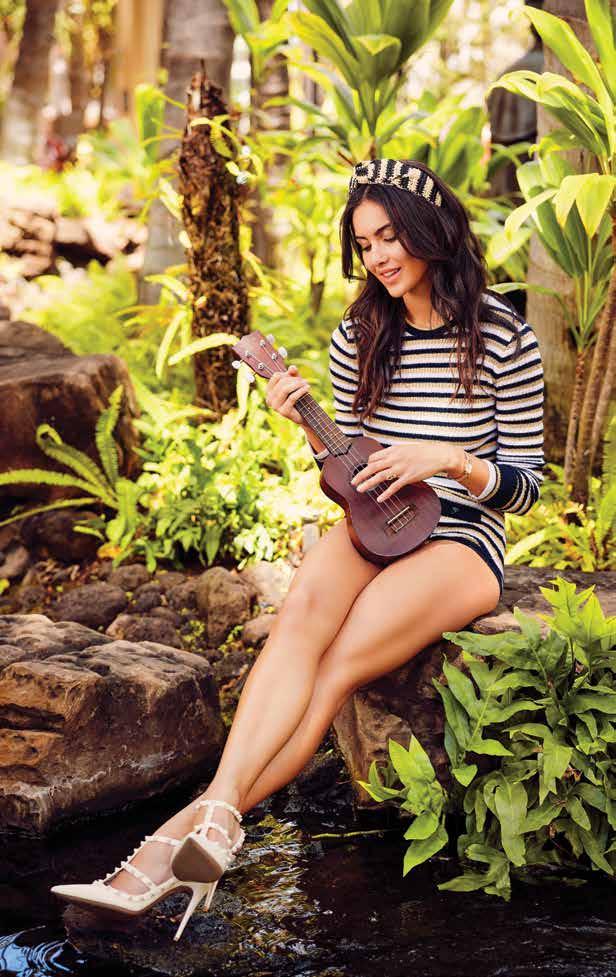
|
|
|
|
|
KITH | Tory Burch | Valentino | Tim Ho Wan | Doraku Sushi | Island Vintage Wine Bar | Restaurant Suntory P.F. Chang’s | The Cheesecake Factory | TsuruTonTan Udon | Wolfgang’s Steakhouse | Noi Thai | Partial Listing RoyalHawaiianCenter.com • Waikīkī • Open Daily • 808.922.2299 FROM SUN UP TO SUN DOWN, THERE’S MAGIC AROUND EVERY CORNER. Fashion. Dining. Culture. from day to night I Ka Pō Me Ke Ao
Fendi | Harry Winston
Hermès
Tiffany & Co.
Jimmy Choo
Stüssy | Rimowa
Saint Laurent
| Ferragamo
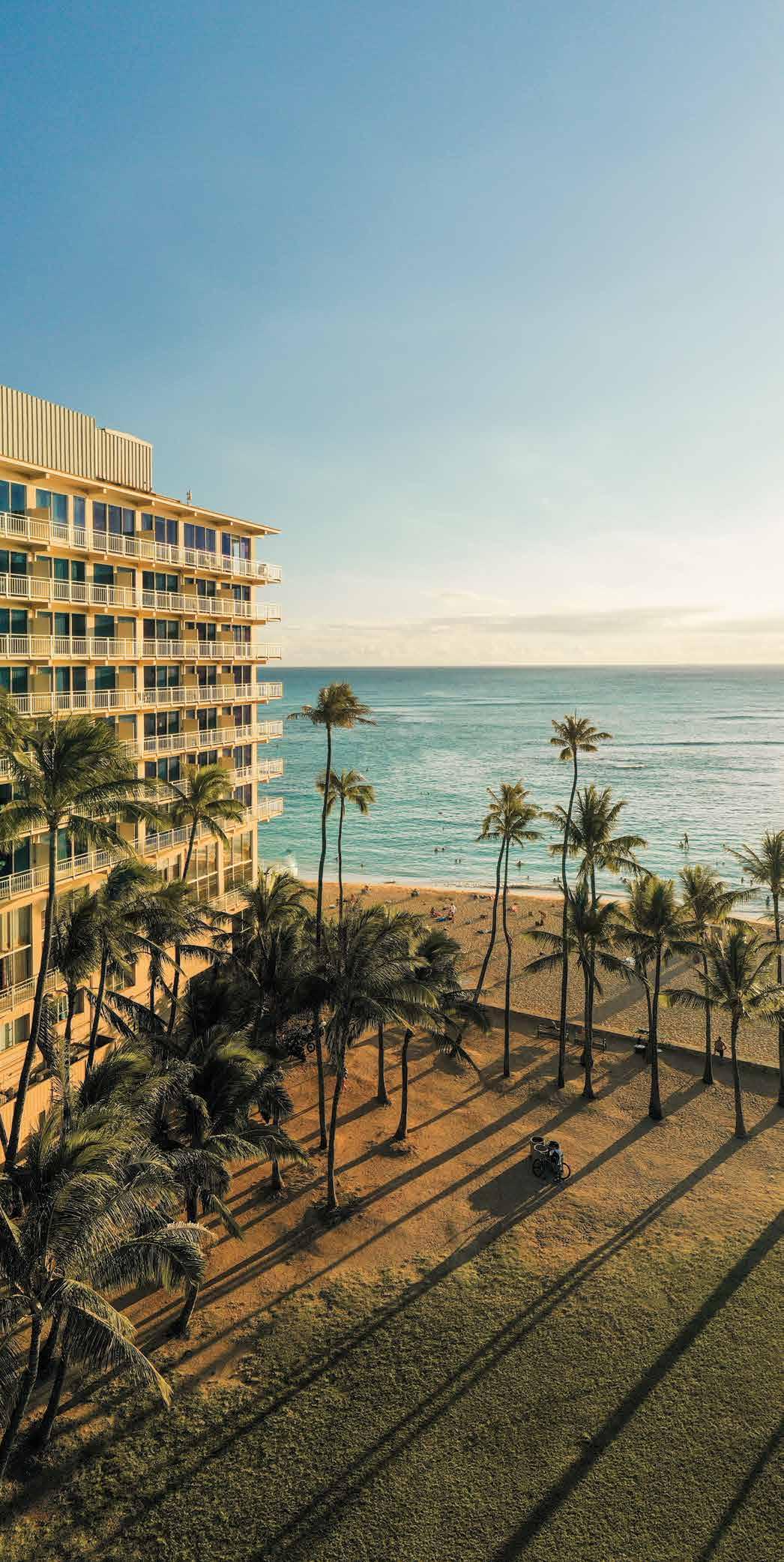
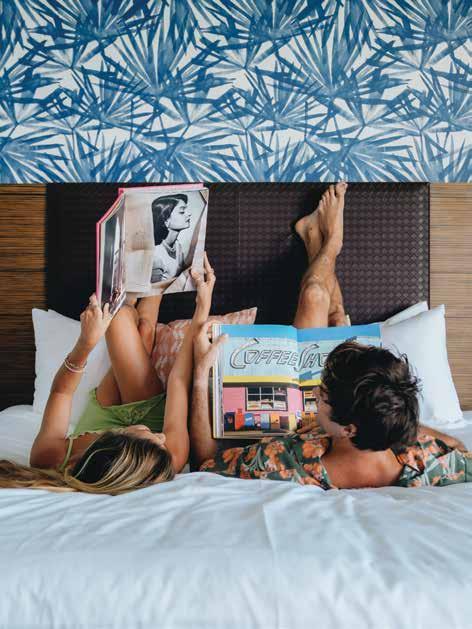
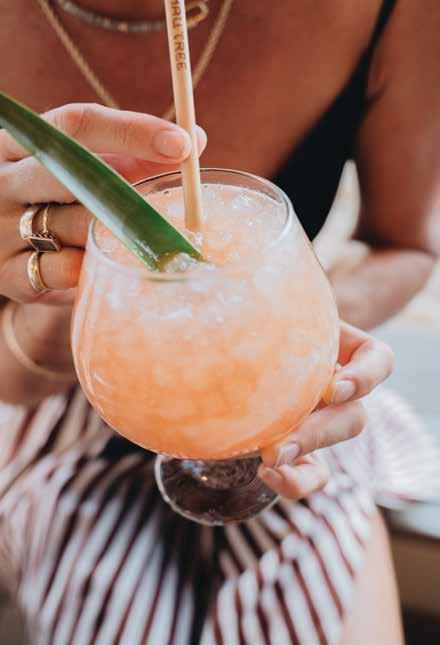
BU SIN ESS
Trends
drive ビジネス B
that
37 the
B
economy
Making It
Text by Kathleen Wong
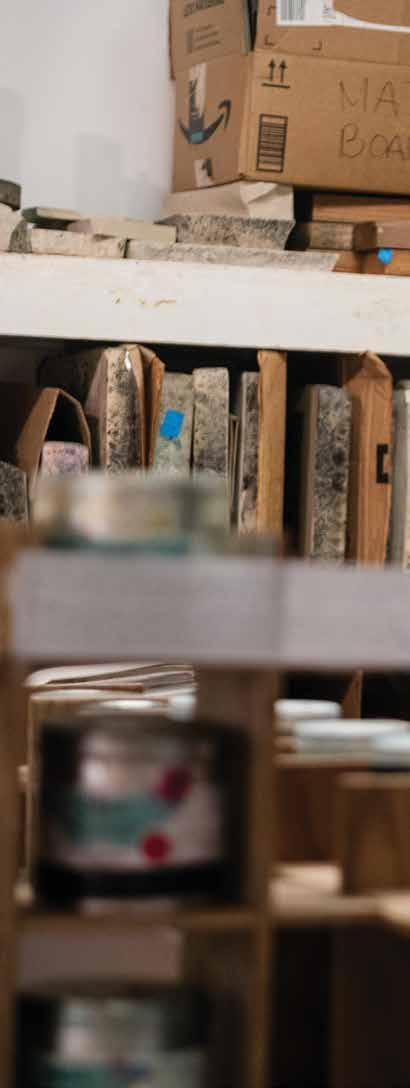
38
写真 = ジョン·フック、トミー·シー 創作の場 文 = キャスリーン·ウォング
B BUSINESS Makerspaces
Images by John Hook and Tommy Shih
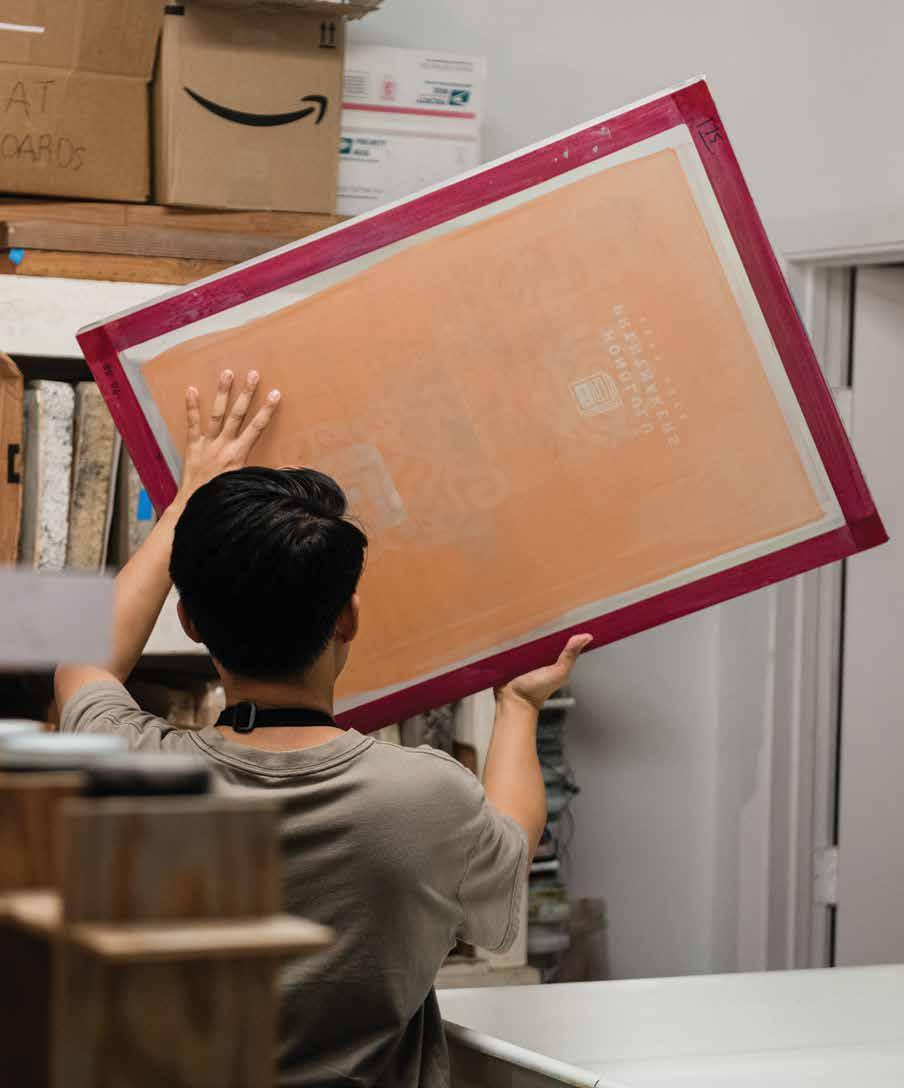
Led by collaboration and ingenuity, Honolulu’s makerspaces empower the islands’ creative set.
コラボレーションと創意工夫によって 生まれたホノルルのメーカースペースは、 ハワイのクリエイターの強い味方

Makerspaces emerged from the maker movement of the mid-’90s, when computer programmers and amateur hackers converged at communal spaces to exchange ideas and share tools. Over the decades, the movement grew beyond its tech-oriented beginnings to include makers of every métier, from hobbyists to savants. Makerspaces, too, evolved to encompass a wider breadth of disciplines. Today, makers can tap into a diverse ecosystem of fabrication laboratories, communal artist studios, and small business incubators. No matter the niche, though, their founding ethos remains. They foster a democratic sense of creativity by circumventing the barriers, such as money and access, that traditionally gatekeep industries. With Hawai‘i’s high cost of living and finite real estate, the necessities to support one’s craft—a studio space, proper equipment—are out of reach for many local creatives. Thankfully, the islands’ creative minds can find their footing at Honolulu’s makerspaces, where “made for locals, by locals” takes on new meaning.
Ourspace
The concept for Ourspace came together over game night. During a round of a questions-based card game, the prompt “What can we build together?” spurred an earnest
メーカースペースは、90年代半ばにコンピュータ プログラマーやアマチュアハッカーが、アイデアの 交換やツール共有のために共同スペースに集まっ たメーカームーブメントから生まれた。そこから数 十年、技術志向から始まったこのムーブメントは、 趣味人から専門家まで、あらゆるジャンルのクリエ イターを巻き込むまでに成長する。それに伴い、彼 らが集うスペースも、より幅広い分野を担うように なり進化した。現在のクリエイターたちは、ファブラ ボ(実験的な地域工房)や共同アーティストスタジ オ、小規模ビジネスインキュベーターなど、多様な エコシステムを活用している。
どれだけニッチな分野であろうと、その創業 精神は変わらない。メーカースペースは、資金面や アクセス面といった問題から、かねてより狭き門と なっていた業界の障壁を回避することで、民主的 な創造性を育んでいる。物価が高く、不動産物件も 限られているハワイでは、地元クリエイターの多く が、作品づくりに必要なスタジオスペースや適切な 機材を入手できない状況となっている。だが、あり がたいことに、ハワイのクリエイターたちは、ホノル ルのメーカースペースで、その足場を見つけること ができている。そこでは、「地元民による、地元民の ための」という言葉が新たな意味を帯びている。 アワースペース
アワースペースのコンセプトは、ある晩、仲間内で ゲームを楽しんでいたときにまとまったという。
Translation by Mutsumi Matsunobu 訳 = 松延むつみ
40
B BUSINESS Makerspaces
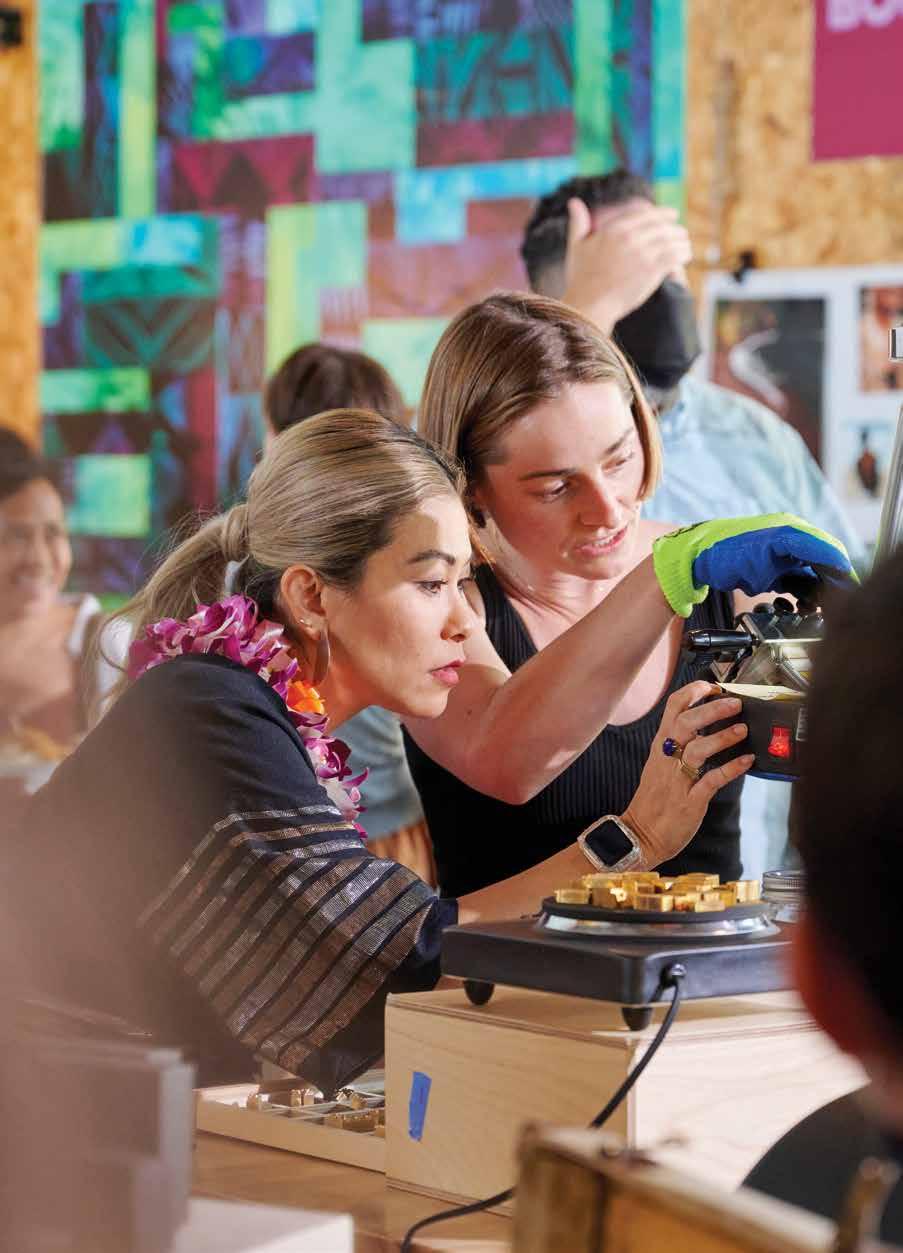
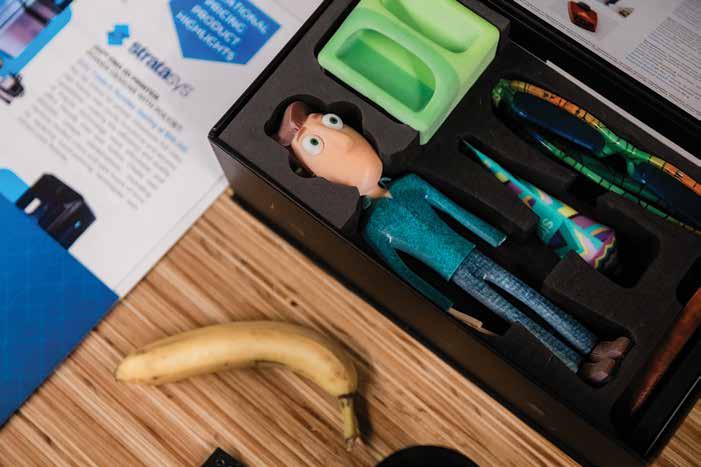
Launched in 2023 by a team of local creatives, the nonprofit Ourspace is Hawai‘i’s first hybrid production and incubation studio.
conversation between founder Darren “Dyo” Yomogida and his friends.
The group lamented the closing of Oahu Makerspace, a cooperative craft studio that offered access to equipment too costly for most individual artists. When it shuttered in 2019, dozens of makers were suddenly without a means to create.
The loss was personal for Yomogida, a jeweler and watchmaker, as he knew the price of being an independent creative. “It’s hard to get stuff here,” Yomogida says, referencing the high cost of transporting materials to Hawai‘i.
It’s a challenge that often prevents artists from staying in the
質問カードゲームをプレイ中に「一緒に何を構築 できる?」と書かれたカードが引かれ、創設者の ダレン·デョウ·ヨモギダさんと友人たちの間で真 剣な議論に発展した。個人アーティストには高価 すぎて手が出ない機材の利用サービスを提供し ていた、協同組合方式のクラフトスタジオ「オア フ·メイカースペース」がなくなったことを、彼らは 嘆いた。2019年にこのスタジオが閉鎖されたと き、数十人のアーティストが突然、制作手段を失 ったのだ。
宝石職人で時計職人でもあるヨモギダさん にとっても、この損失は他人事ではなかった。彼自 身も、独立したクリエイターが背負う苦労を身に沁 みて感じていた。ハワイへ物資を輸送するための費 用が高いことについて言及しながら、「ここで材料 を手に入れるのは至難の業です」と話す。
42 B BUSINESS Makerspaces
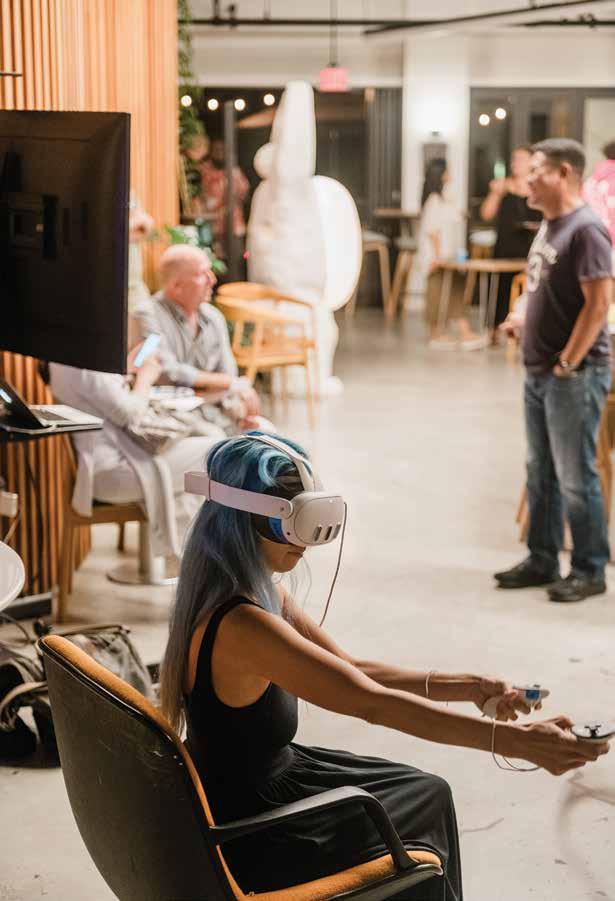
From centuries-old printing techniques to emerging technologies, Honolulu’s makerspaces bridge the old and the new.
islands, adds Nina Faye Lin, Ourspace’s interim executive director. “I think it makes people a little bit more scrappy, more resourceful, with what they’re making and how they’re making it,” she says. “Or it causes them to move away.”
Launched in 2023 by Yomogida, Lin, and a crew of professional creatives, the nonprofit Ourspace—Hawai‘i’s first hybrid production and incubation studio—takes the traditional makerspace model and retools it for Hawai‘i’s community of small businesses and burgeoning artists. Here, makers have access to a host of machinery and equipment on which they can experiment with product design and branding, without the cost of outsourcing production: a desktop CNC mill for 3D printing prototypes, laser cutters and engravers to design product branding, a large plotter and wide-format printer for art prints and wall vinyls. (Ourspace regularly supplies wall vinyls for art exhibitions at Kaio Space in Chinatown; merchandise for CreativeMornings Honolulu, a monthly breakfast series for the creative community; and signage for local design studio Marlowe Furnishings.)
To empower makers with a DIY sensibility, the nonprofit also offers one-on-one training on its production software and equipment. Community manager Lauren Hana Chai, an artist who originally came to Ourspace as a client in need of art prints and stickers, is now helping to further shape this community-oriented approach, which includes a creative exchange program aimed at increasing access for creatives across income levels, allowing makers to offer skills and services in exchange for use of the space.
In 2023, Ourspace left its temporary site in Kaka‘ako’s Entrepreneurs Sandbox in search of a permanent and more spacious venue, where it will expand its services to include a photo studio and individual workspaces. For now, Yomogida stores some of the machines in his studio at Fishcake, bringing members together and publicizing Ourspace’s services through workshops and events around town.
Fishcake
Maura Fujihira first opened Fishcake as a furniture store in 2007, gradually expanding it into a platform for creatives ranging from makers of home decor and jewelry to tattoo artists and hair stylists. “We always had the
アワースペースの暫定専務取締役であるニーナ·フェイ·リンさんは、これ はアーティストの州外流出につながる大きな問題だと付け加える。「そのせい か、アーティストは自分の創る作品やその制作方法について、より慎重に、より 知恵を絞るようになります」と彼女は言う。「あるいは、(ハワイから)離れていっ てしまうのです」
従来のメーカースペースモデルをハワイの中小企業や急成長中のアー ティストのコミュニティ向けに再構築した、ハワイ初のハイブリッド型プロダク ション兼インキュベーション·スタジオを運営する非営利団体「アワースペー ス」は、ヨモギダさん、リンさん、そしてプロクリエイターであるスタッフによって 2023年に誕生した。ここでは、クリエイターたちは、3Dプリントのプロトタイ プ用デスクトップ型CNCミル、レーザーカッターやレーザー彫刻機、アートプ リントやビニールクロス用の大型プロッター、そして大判プリンターといった、 製品のデザインやブランディングの試作に欠かせないさまざまな機材や設備 を使用できる。つまり、外部委託費用を節約できるというわけだ。(アワースペ ースでは、チャイナタウンのカイオスペースで開催されるアート展用のビニー ルクロスをはじめ、クリエイターのコミュニティ向けに毎月開催されている朝 食イベント「クリエイティヴモーニングス·ホノルル」にグッズを、地元のインテ リアデザインスタジオ「マーロウ·ファーニッシング」には看板などを、定期的に 提供している)
この非営利団体では、クリエイターたちに何でも自分たちでやるという 気概をもってもらうため、制作用ソフトウェアや機器の操作方法を学べるマン ツーマンのトレーニングも行なっている。コミュニティマネージャーのローレン· ハナ·チャイさんは、もともとアートプリントやステッカーを制作するために、利 用者としてアワースペースに通っていたアーティストの一人だ。彼女は現在、こ のスペースを利用する代わりに自身のスキルやサービスを提供して、より多くの クリエイターが収入レベルに関係なくアワースペースを利用できるようにする ことを目的としたクリエイティブ·エクスチェンジ·プログラムなど、コミュニティ 指向のアプローチのさらなる発展のために尽力している。
2023年、アワースペースは、写真スタジオや個人用ワークスペースなど のサービスを拡大するため、より広い常設の場を求めて、カカアコのコワーキ ングスペース「アントレプレナーズ·サンドボックス」の仮スペースを引き払った。
現在、ヨモギダさんは機器の一部を「フィッシュケーキ」にある彼のスタジオに 保管しながら、メンバーを集め、ワークショップや街中イベントを通じてアワー スペースのサービスを宣伝告知している。
44
B BUSINESS Makerspaces

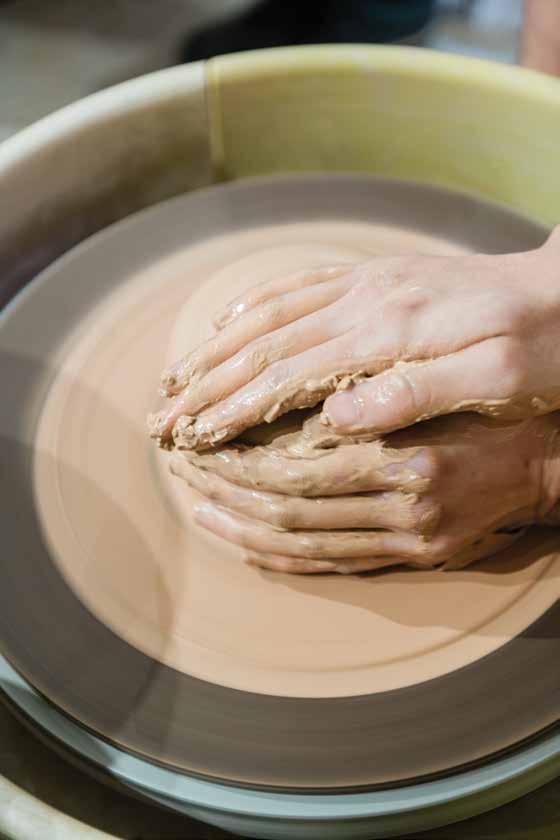

Fishcake began as a furniture store but has since evolved into a showroom for a wide variety of creative industries.
art components because we really like working with local artists and incorporating art into any living space,” Fujihira says. “Living with art in parentheses.”
In keeping with this ethos, Fishcake has evolved beyond its retail origins in recent years, starting with the culinary incubator space
Fishcafé. The idea took shape postpandemic, when former tenant
BoxJelly moved to its own location, leaving its adjoining café space empty. Seeing its potential, Fujihira chose to continue operating the café on site and expand it into a test kitchen for micro food businesses.
Fishcafé’s rotating cast of chefs and bakers run the gamut of goods in Hawai‘i’s foodie scene, from vegan
フィッシュケーキ モーラ·フジヒラさんは、2007年に家具店としてフ ィッシュケーキをオープンしたが、徐々にインテリ アやジュエリーのデザイナーからタトゥーアーティ ストやヘアスタイリストまで、クリエイターのため のプラットフォームへと拡大していった。「私たちは これまでも、常にアートの要素を取り入れてきまし た。地元のアーティストと協力したり、あらゆる生活 空間にアートを組み込んだりすることが大好きな んです」とフジヒラさんは語る。「まさにアートのあ る暮らしですね」
この理念のもと、フィッシュケーキは近年、料 理インキュベータースペースのフィッシュカフェを 皮切りに、もともとの小売店の枠を超えて進化を続
46 B BUSINESS Makerspaces
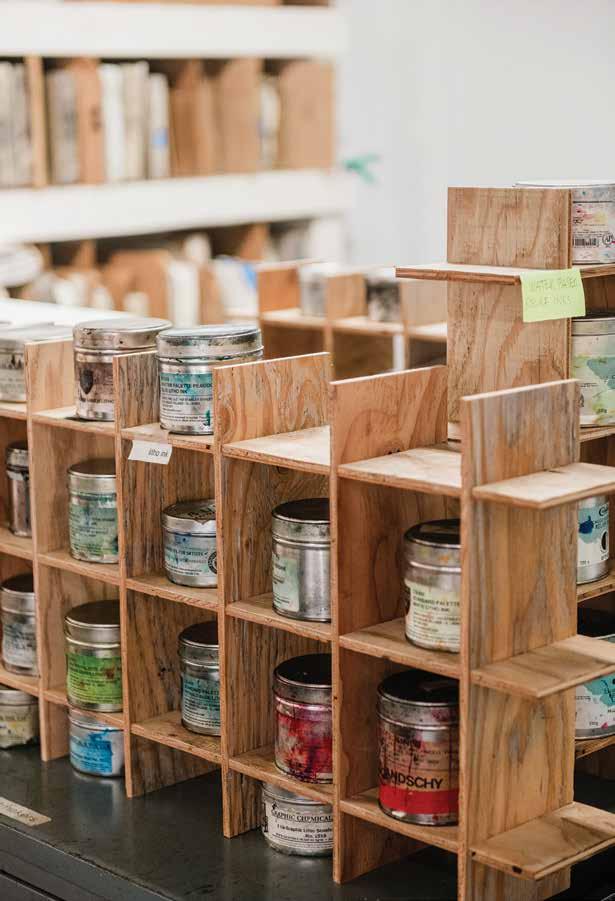 Some of Hawai‘i’s most notable artists have been members of Honolulu Printmakers, one of the oldest printmaking collectives in the country.
Some of Hawai‘i’s most notable artists have been members of Honolulu Printmakers, one of the oldest printmaking collectives in the country.
sushi by Honobono to upscale local cuisine from C4. Here, maverick restaurateurs are afforded a testing ground for dishes and a low-cost way to build clientele. The concept has proven successful for many a Fishcafé maker: Bread Service, a small-batch artisanal bakery that began vending at Fishcafé in early 2024, now sells out of several pop-up locations, including Try Coffee at Ward and Howzit Brewing in Kaka‘ako.
At the other end of the Fishcake showroom is Fishschool, an artist studio and education space led by independent creatives. In 2020, Fishcake was donated a kiln by its neighbor, designer Andrew Mau. Ceramicist Jun Funahashi began teaching ceramics courses in the space and enlisted fellow artist Dane Nakama to offer instruction in drawing and painting. Studio director Joy Sanchez recalls that in Fishschool’s infancy, its teaching space was just a room with plastic tables and tiny buckets of glaze, hosting classes just three times a month. Now, Fishschool has 30 teachers on its roster who lead up to 15 classes a month. The studio is also home to independent ceramicists who take advantage of Fishschool’s kiln and pottery wheel.
In true makerspace fashion, members are encouraged to work alongside each other. “I see it as a community space more than an education space,” Sanchez says. “I want people to know that they can come here, and it’s safe to mess up, to learn.”
Honolulu Printmakers
Operating out of an unassuming space in Chinatown is Honolulu Printmakers, one of the oldest community print shops in the country. For nearly a century, the organization has nurtured a community of emerging and seasoned creatives, including some of Hawai‘i’s most notable artists. Its founding members include former Honolulu Museum of Art director John Kelly and French muralist Jean Charlot, and artists Pegge Hopper and Masami Teraoka are among its long-time supporters. “We’re deeply enmeshed in the community in a very significant way for lots of people, not just the printmaking artists, which is a very niche community,” says executive director Denise Karabinus.
The studio’s lithography machine, screen printing equipment, and three large etching presses—steel behemoths weighing approximately 2,000 pounds—
けている。パンデミック後に、テナントだった「ボックスジェリー」が移転して、併 設していたカフェのスペースが空いた。そこに可能性を見出したフジヒラさん は、店内カフェの運営はそのままに、空室となったスペースを小規模フードビ ジネスのためのテストキッチンとして拡張することにした。
フィッシュカフェでは、「ホノボノ」のヴィーガン寿司から「C4」の高級ロ ーカル料理まで、ハワイのあらゆるグルメシーンを代表するシェフやパン職人 が入れ替わり立ち替わり腕をふるっている。後ろ盾や資本の乏しい料理人で も、このポップアップレストランで料理の腕試しや低費用で顧客を獲得する機 会を得られる。このコンセプトがフィッシュカフェに出店した多くの料理人の成 功への鍵となることは、既に証明されている。2024年初頭にフィッシュカフェ で販売を開始した少量生産の職人ベーカリー「ブレッドサービス」は、現在ワ ードの「トライ·コーヒー」やカカアコの「ハウジット·ブリューイング」など、いくつ かのポップアップロケーションに商品を卸せるようになった。
一方、フィッシュケーキのショールームの反対側には、アーティストス タジオと独立系クリエイターたちが教えるフィッシュスクールの教室があ る。2020年にフィッシュケーキは、隣に店を構えるデザイナーのアンドリュー· マウさんから陶芸窯を寄贈された。この教室で陶芸のクラスを教え始めた陶 芸家のジュン·フナハシさんが、さらにアーティスト仲間のデーン·ナカマさんに デッサンや絵画の指導を依頼した。スタジオディレクターのジョイ·サンチェス さんは、フィッシュスクールの初期の頃は、教室にはプラスチック製のテーブ ルと釉薬の入った小さなバケツが置かれただけで、クラスは月にわずか3回し か開催されていなかったと回想する。現在、フィッシュスクールには講師だけ でも30人が在籍し、月に15以上ものクラスを開催している。また、このスタジ オはフィッシュスクールの陶芸窯とろくろを利用する陶芸家の本拠地にもな っている。
本来、メイカースペースでは、メンバー同士が互いに協力しあうことが奨 励されている。「私は、ここを教室というよりもコミュニティスペースだと考えて います」とサンチェスさんは語る。「ここに来れば、失敗を恐れずに学べるという ことを知ってほしいのです」
ホノルル·プリントメーカーズ
チャイナタウンの片隅で営業を続けているホノルル·プリントメイカーズは、アメ リカで最古の共同印刷所のひとつだ。この組織はほぼ1世紀にわたり、新進気 鋭のクリエイターやハワイで最も著名なアーティストを含むベテランクリエイタ ーのコミュニティを育成してきた。創立メンバーには、元ホノルル美術館館長の
48
B BUSINESS Makerspaces


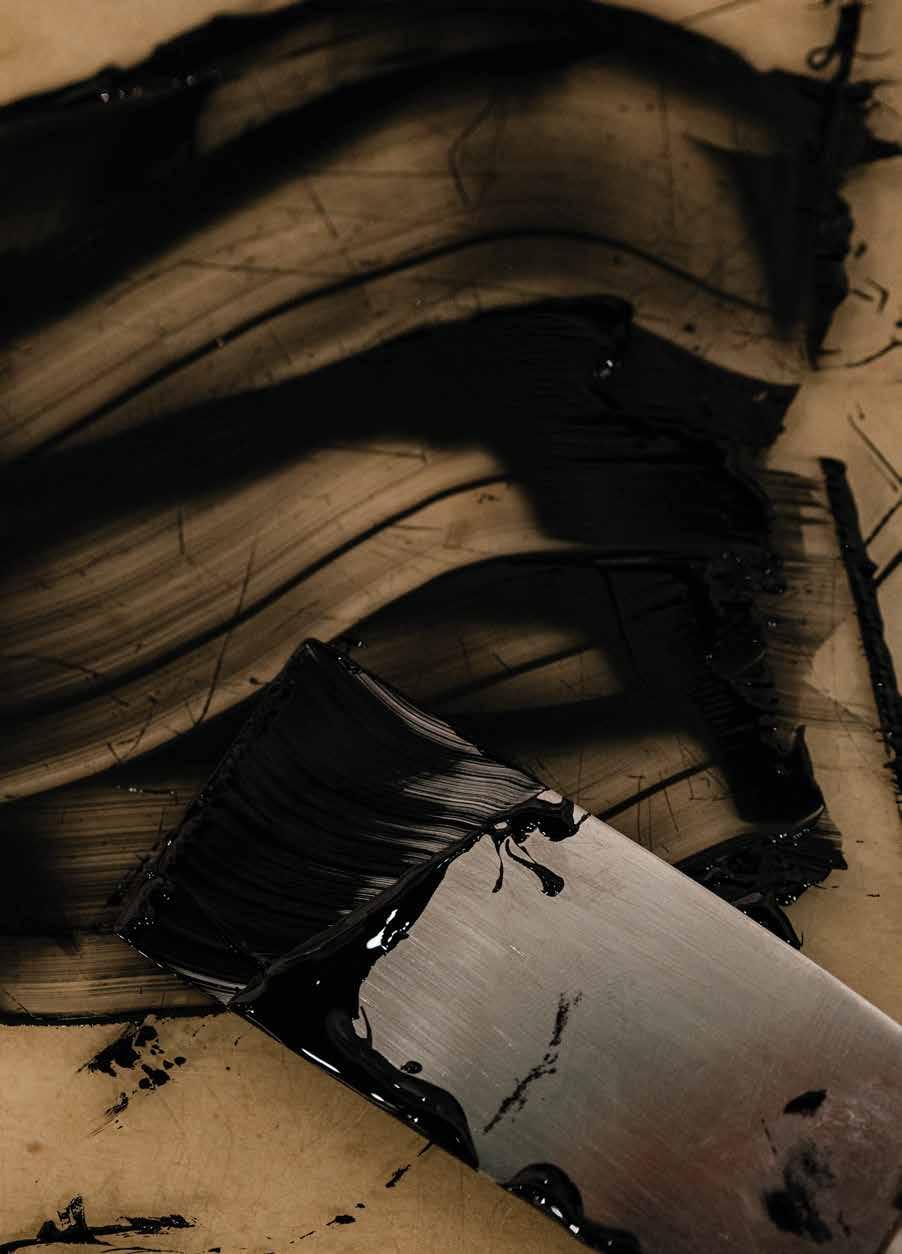

More than just physical workspaces, makerspaces are sanctuaries for creatives who embody the spirit of collaboration.
service a yearly membership of 140 printmakers. On any given day, you’ll see a handful of printmakers perfecting their etchings or searching for the perfect shade of ink. The studio is entirely self-run by its members. “Especially in the small spaces we all live in, nobody can really afford—or has the space for—a printmaking press,” Karabinus says. “It’s like joining a gym, but for artists. You come in and you find all these people there who are ready to encourage you and support you.”
The studio also hosts public classes in mokuhanga (Japanese woodblock printing), Native Hawaiian kapa making, and more. Six exhibitions are hosted in the space each year, including the organization’s renowned annual juried exhibition. Winning artists receive prize money and purchase recommendations for the Art in Public Places collection of the Hawai‘i State Foundation on Culture and the Arts, a “catalyst to keep moving their art forward,” Karabinus says. “You’re really a part of something much bigger when you’re a Honolulu printmaker.”
ジョン·ケリーやフランス人壁画家のジャン·シャルロが名を連ね、アーティスト のペギー·ホッパーやマサミ·テラオカも長年支援を続けている。「私たちは、非 常にニッチな世界にいる版画アーティストだけでなく、多くの人にとって非常に 重要な形で地域社会に深く関わっています」とエグゼクティブディレクターの デニス·カラビヌスさんは語る。
スタジオにはリソグラフィー装置、スクリーン印刷用捺染機、さらに重さ が1トン近くもある鋼鉄製の巨大なエッチングプレス機3台が置かれていて、 年間会員である140名の版画家にサービスを提供している。そこではほぼ毎 日、数人の版画家がエッチングを仕上げる様子や完璧な色合いのインクを探 す姿を見かける。このスタジオは、会員によってすべて自主的に運営されている。
「私たちが住んでいる狭い空間では、版画印刷用の重機を買う余裕も、置くス ペースもありません」とカラビヌスさんは説明する。「これはアーティストにとっ て、スポーツジムに入会するようなものです。会員になれば、そこには、励まして サポートしてくれる人々がいるのです」
スタジオでは、木版画やハワイ先住民のカパメイキングなど、公開クラ スも開催されている。また、毎年このスペースでは、同団体の有名な年次審査 展を含む6つの展覧会が開催されている。受賞アーティストには、賞金とハワ イ州文化芸術財団による公共アートコレクションへの推薦が付与され、これが 「芸術を極め続けるための誘因」になるとカラビナスさんは語る。「ホノルルの 版画家であるということは、実際にはもっと大きなものの一部であるというこ となのです」
50 B BUSINESS Makerspaces
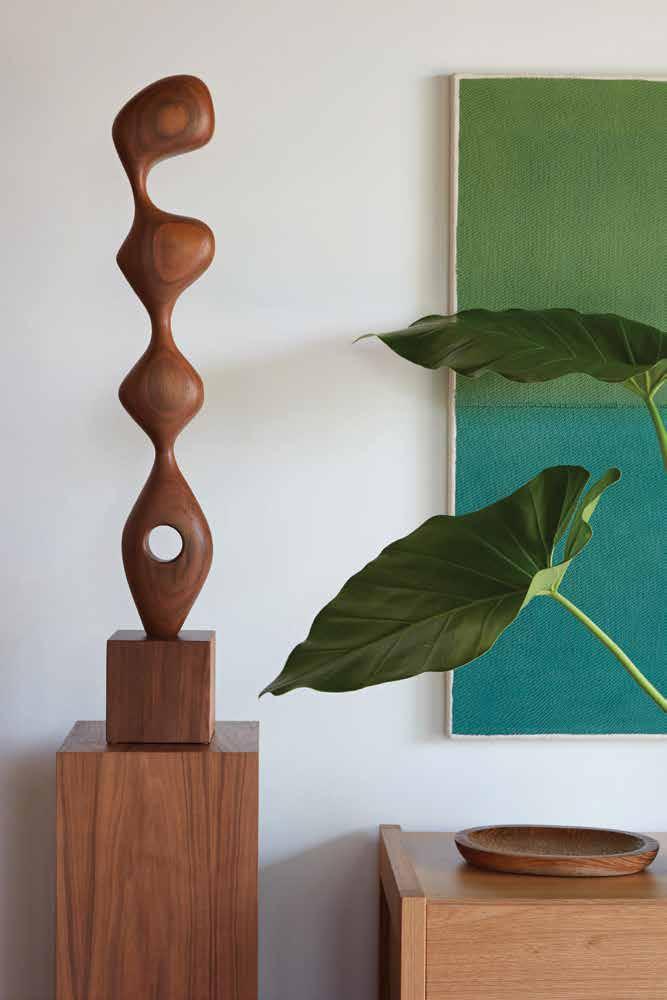
TANTALUS STUDIO
BOUTIQUE INTERIOR ARCHITECTURE & DESIGN STUDIO

CUL TU RE
of
A sense 文化 C
place that
fosters the human spirit
53 C
Field Experiment
54 CULTURE Bananas
写真 = ジョン·フック 畑での実験 文 = サラ·バーチャード
Text by Sarah Burchard
C
Images by John Hook
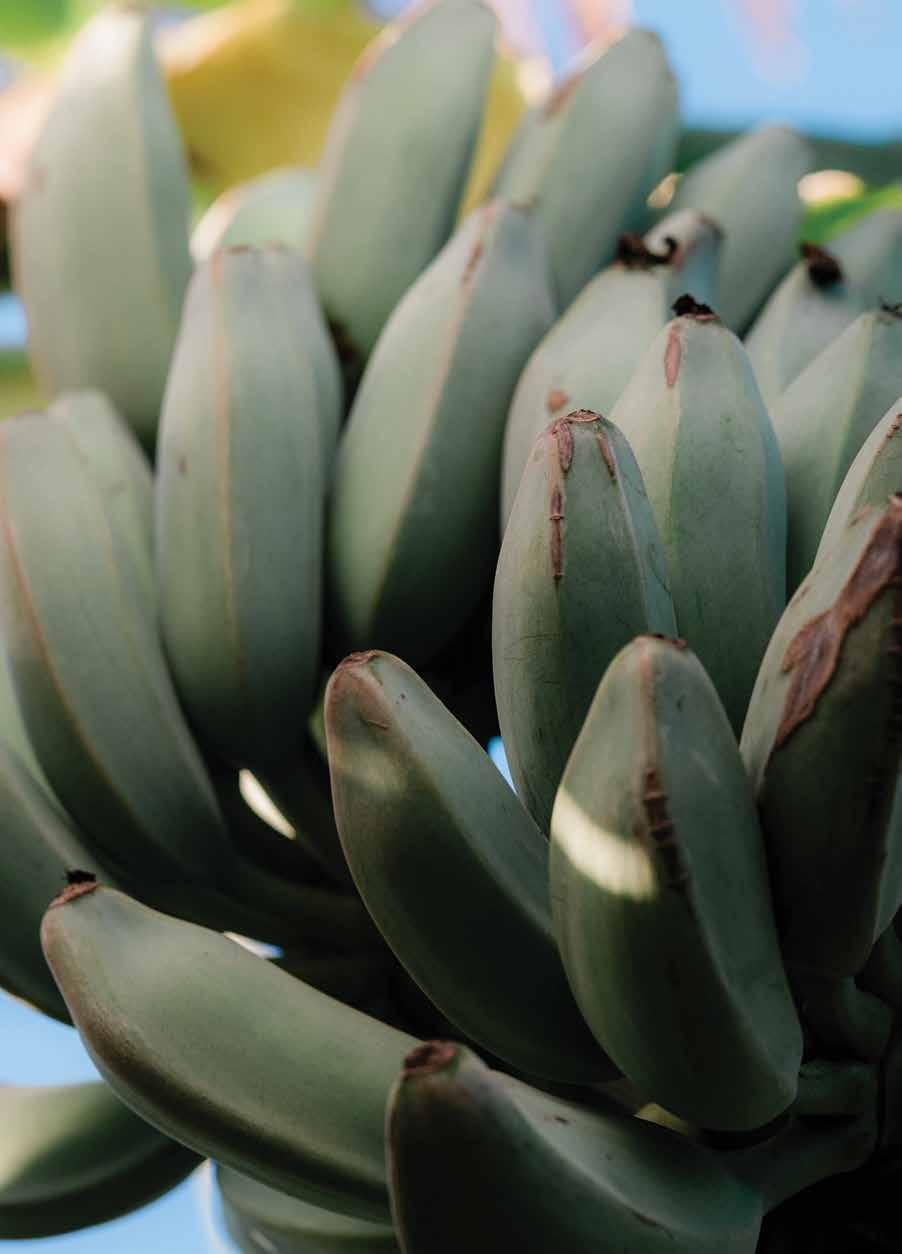
On the North Shore, a farmer is growing bananas in a wild way.
Gabe Sachter-Smith grew his first banana plant at 13. His mom had ordered the cutting from a specialty banana farm in South Florida to satisfy his budding curiosity. It was a Musa ornata, or rose banana, beloved by gardeners for its crimson-hued florals. Sachter-Smith tried to grow it in the family sunroom amid the heat of a Colorado summer in hopes that it would mimic the tropical climes of its origin. The plant promptly died, languishing without the benefit of leaves or roots.
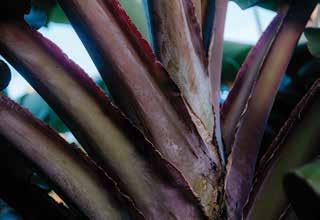
Undeterred, he ordered another cutting, this time a Dwarf Cavendish. It was a stout little tree that proved more durable than its predecessor. Soon, the 100-square-foot, two-story sunroom was filled with hundreds of plants sourced from online banana forums and specialty farms. They flourished under Sachter-Smith’s growing skills, helped along by an assembly of space heaters and grow lights—his personal tropical banana farm in the middle of Colorado.
ゲイブ·サクター=スミスが初めてバナナの苗を育 てたのは13歳のときだった。バナナに興味を持ち 始めた彼のために、母親が南フロリダのバナナ専 門農家から挿し木を取り寄せたのだ。そのバナナ はムサ·オルナータ(ローズバナナ)種で、真紅の花 を咲かせることから園芸家に人気があった。サクタ ー=スミスは、コロラドの夏の暑さの中、できるだ け熱帯の気候に近づけるため、家のサンルームで バナナを育てることにした。しかしバナナはすぐに 枯れて、葉も根も育たずにぐったりと萎れてしまう。 それでも彼はあきらめず、今度はドワーフ·キ ャベンディッシュ種のバナナを手に入れた。その木 は小さくてずんぐりとし、前の木よりも丈夫だった。 やがて、9平方メートル程の2階建てサンルーム は、オンラインのバナナフォーラムや専門農家から 入手した何百種ものバナナで埋め尽くされること になる。サクター=スミスのバナナ栽培の腕は上が り、ヒーターや栽培用ライトも設置した。サクター =スミスは、コロラドの真ん中に、熱帯バナナの個 人農園を作り上げたのだ。
サクター=スミスのバナナへの情熱は、中学 2年生のときの友人との賭けに端を発している。同 級生たちがバナナは樹上で育つと信じて疑わなか ったので、彼は友人たちが間違っていることを証明 するためにインターネットで証拠を探し回った。そ の過程で、彼はバナナには、スーパーマーケットで 目にする以上に深い魅力があることに気づいた。 「実のところ、なぜかは分かりませんが、私はバナ ナについて学んだり、バナナを扱ったりすることに、 どうしようもなく惹かれていったのです」と言う。 ノースショアでワイルドにバナナを 栽培する農家
Sachter-Smith’s obsession grew from an eighth-grade bet, when his classmates wouldn’t believe that the fruit didn’t grow on trees. He scoured the internet for evidence to prove them wrong. In the process, he realized that there was more to bananas than what he saw at the supermarket. “The truth of the matter is, I’m just inexplicably drawn to learning about and working with bananas,” he says. “I don’t know why.”
Translation by Akiko Mori Ching 訳 = チング毛利明子
56
C CULTURE Bananas

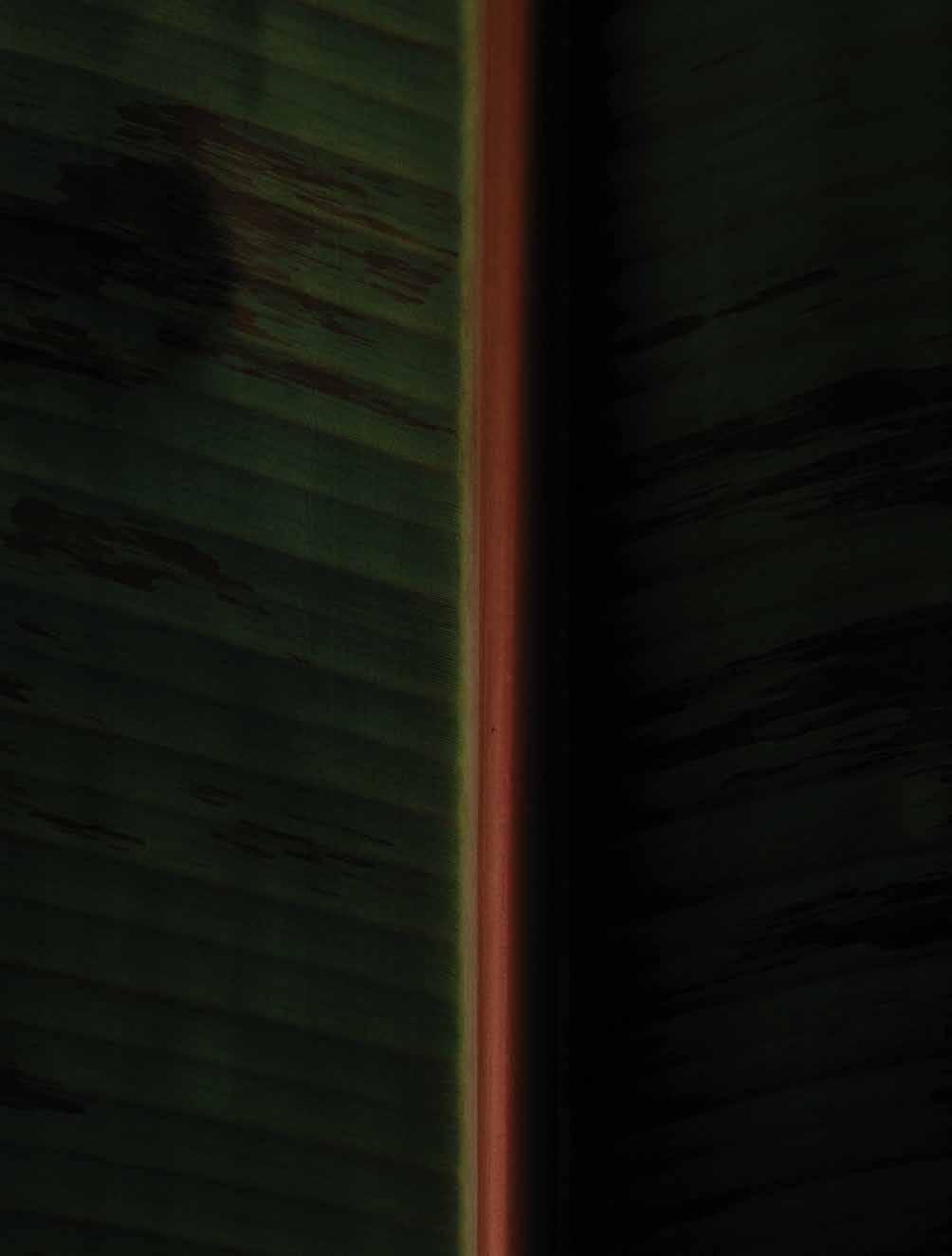
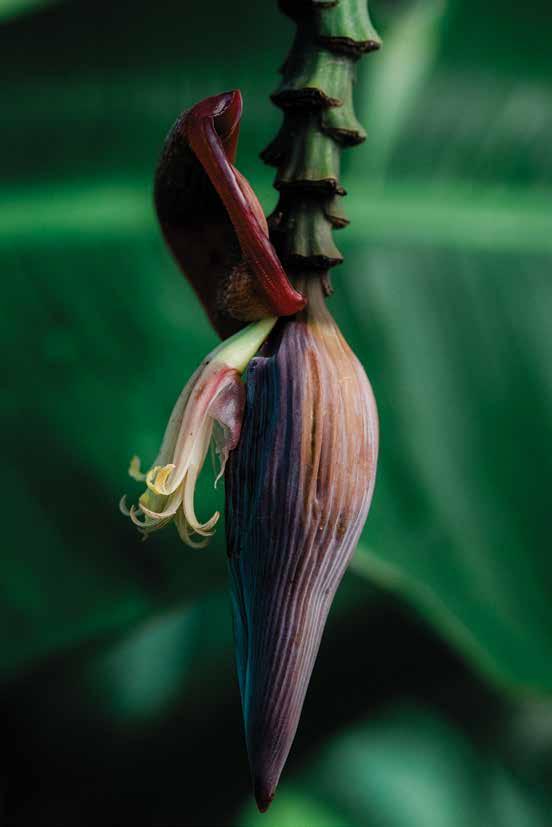


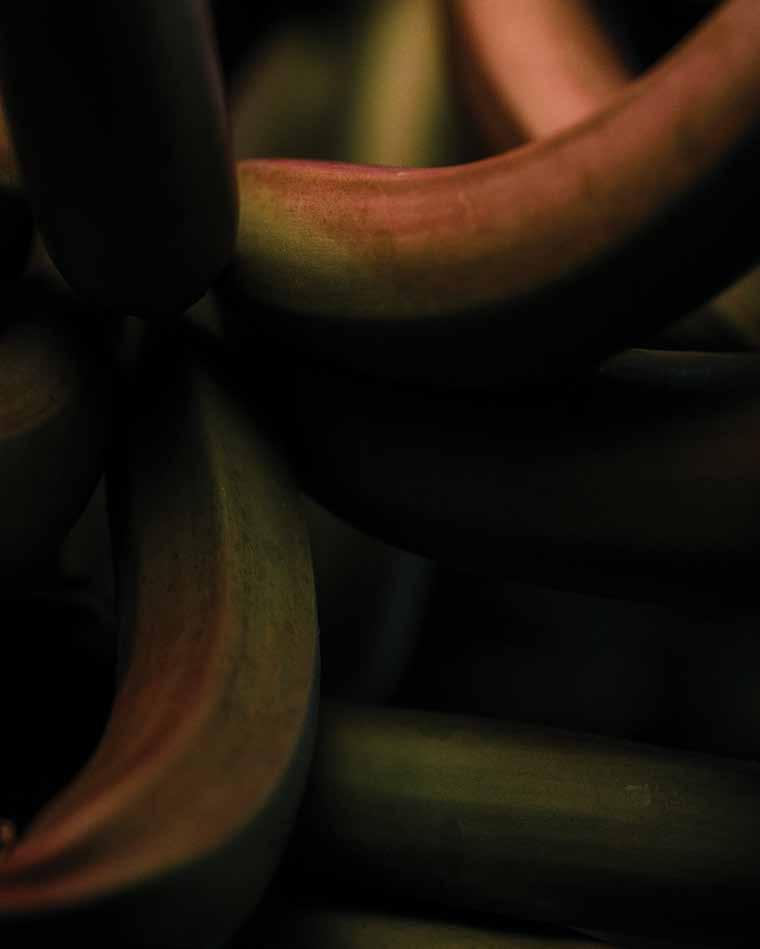
Eventually, his ambitions outgrew his family’s sunroom, and in 2007 he moved to Hawai‘i to study tropical plant and soil sciences at the University of Hawai‘i at Mānoa. At every opportunity, he made bananas the focus of his projects. By junior year, the department knew him as “Banana Gabe”—a moniker that has stuck, even years later.
In his 20s, Sachter-Smith traveled across Southeast Asia and the South Pacific to study tropical varieties and learned that, outside of the Western world, bananas are more than just a breakfast food. In many cultures, the fruit is commonly found in every meal; in some communities, the word “banana” is also used to refer more generally to food.
It’s perhaps inconceivable to those in America, where despite the thousands of banana varieties that exist worldwide, grocery stores typically only sell one: the yellow Cavendish, favored by exporters for its highyield, long ripening window, and attractive look on supermarket shelves. Today, Cavendish is the most widely exported banana variety. Decades-long monoculture, though, has left the crop vulnerable to diseases.
For a time, Sachter-Smith ran a booth for Counter Culture Organic Farm at Kaka‘ako Farmers Market, where he could be found, over jars of kimchi and baskets overflowing with carrots and kale, waxing poetic about Counter Culture’s 40-acre farm in Hale‘iwa. It was founded by Rob Barreca, a software developerturned-urban agriculturalist. In 2017, when Barreca had his hands full building Farm Link Hawai‘i, an online marketplace enabling O‘ahu customers to order directly from local farmers, he asked Sachter-Smith, his friend and mentor, to take over the farm.
Sachter-Smith agreed, on the one condition that they someday grow a banana enterprise. During the pandemic, the farm’s wholesale orders dropped as Farm Link Hawai‘i’s sales soared. Barreca, entrenched in his startup, gave Sachter-Smith free rein, with a simple directive: Go bananas.
At Hawai‘i Banana Source, the farm’s new iteration, some 150 banana varieties are cultivated under Sachter-Smith’s helm. Among rows of swaying banana stalks grow wild cultivars, including a dozen Hawaiian varieties such as iholena, whose long fruits are starchy and plantain-like when cooked, and the endangered ‘ele‘ele, thought to be extinct until it was rediscovered in 2004. The farm also doubles as Sachter-Smith’s laboratory, where he experiments with rare cultivars and hybrids in attempts to create the perfect specimen.
やがて家のサンルームだけでは満足できなくなったサクター=スミス は、2007年、ハワイ大学マノア校で熱帯植物学と土壌科学を学ぶためにハワ イに引っ越した。機会があるごとに、彼はバナナをプロジェクトの中心に据え た。3年生になると、彼は学部内で「バナナ·ゲイブ 」と呼ばれるようになり、そ れは年月を経た今でも彼の愛称となっている。
20代になると、サクター=スミスは熱帯品種のバナナを研究するために 東南アジアや南太平洋を旅した。そして西洋以外では、バナナは単なる朝食用 の食べ物ではないことを学んだ。多くの文化圏では、バナナは毎食のように登 場し、地域によっては「バナナ 」という言葉が一般的な食べ物を指すこともあ るのだと知ったのだ。
世界中に何千種類ものバナナがあるにもかかわらず、通常アメリカの食 料品店では、黄色いキャベンディッシュ種のバナナしか売られていない。理由 は簡単で、キャベンディッシュ種のバナナは収穫量が多く、熟す期間も長い、そ して何よりもスーパーマーケットの棚でより魅力的に映えるため、輸出業者に 好まれているからだ。今日、キャベンディッシュは最も広く輸出されているバナ ナの品種である。しかし、数十年にわたる単一栽培により、同種は病気に弱く なっていることも事実である。
一時期、サクター=スミスはカカアコ·ファーマーズ·マーケットで「カウン ター·カルチャー·オーガニック·ファーム」のブースを切り盛りしていたことがあ る。そこで彼は、キムチの瓶やニンジンとケールであふれたバスケットを前に、 カウンター·カルチャーがハレイワに所有する16万平方メートルの広大な農 場について熱弁をふるっていた。この農場は、ソフトウェア開発者から都市農 業家に転身したロブ·バレカによって設立されたものだ。2017年、バレカはオア フ島の顧客が地元の農家に直接注文できるオンラインシステム「ファーム·リン ク·ハワイ」の構築で手いっぱいになり、友人であり師匠でもあるサクター=ス ミスに農場を引き継ぐよう助けを求めたのだ。
サクター=スミスは、「いつの日か農場でバナナ事業を展開する」という 条件でこれに同意した。コロナ禍中、同農園の卸売りの注文は減少したもの の、ファーム·リンク·ハワイの売上は急増した。スタートアップに注力していたバ レカは、「ゴー·バナナズ(熱狂しろ!)」というシンプルな指示と共に、サクター= スミスに自由裁量権を与えた。
同農園の新しい試みであるハワイ·バナナ·ソースでは、サクター=スミス の管理の下、約150種類のバナナが栽培されている。揺れ動くバナナの株の列 の中には、長い果実がでんぷん質で調理するとプランテンのようになるイホレ ナや、2004年に再発見されるまで絶滅したと考えられていた絶滅危惧種のエ レエレなど、12種類のハワイ原産の野生品種も栽培されている。農園はサクタ
60
C CULTURE Bananas
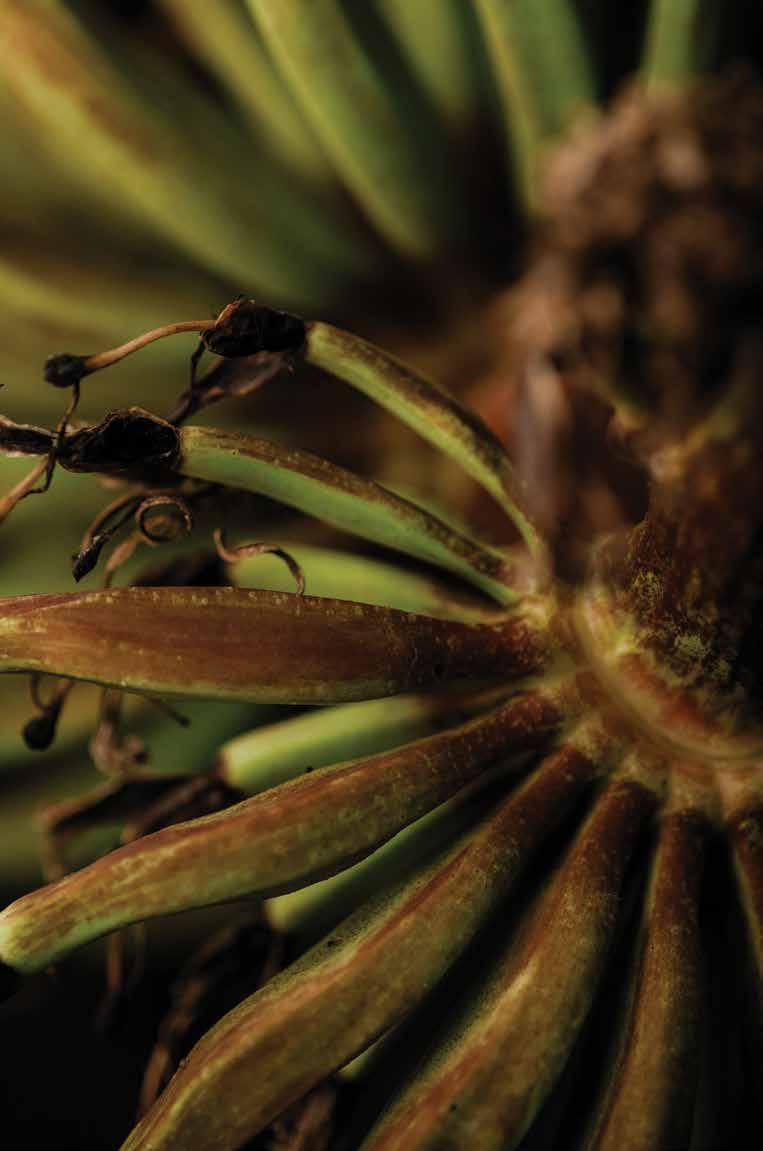
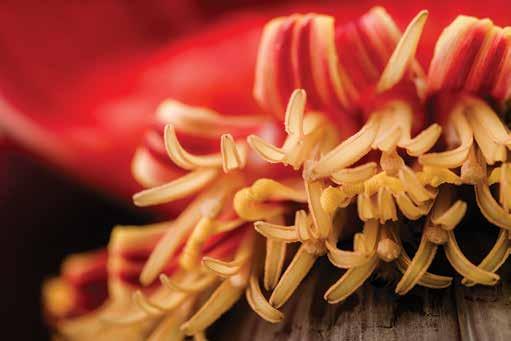
Most are familiar with the yellow Cavendish banana commonly found at grocery stores, but thousands of wild and wonderful varieties grow worldwide.
He admits that it’s rare for a banana farmer to also be a breeder: “I am the only person I know doing all the things I do with bananas.” In the nursery, a peek under the lid of a bathtub-sized bin reveals an assortment of new banana varieties he has hybridized. “I am constantly making more, selecting keepers and tossing most of them,” he says. “I probably have around 200 to 300 at the moment.”
At present, Sachter-Smith is developing a banana plant that could be grown by anyone in the tropics, even in a pot on their lānai. “My ideal plant would be about five or six feet tall,” he says, for more convenient growing. It would be ready to harvest within six months, with a lighter yield than that of common varieties but a more frequent fruiting schedule. “Instead of growing 50 pounds of bananas once a year, you’d have five pounds ten times a year,” he says.
In the meantime, his customers are content with the varieties, rare or otherwise, that he is already cultivating—happy, no doubt, any time Banana Gabe debuts the latest fruits of his labor.
ー=スミスの研究室も兼ねており、完璧な品種を作り出そうと、日々珍しい品 種や交配種の実験が行われている。
サクター=スミスによると、バナナ農家が育種家でもあることは珍しいと いう。「私が知る限り、バナナに関して私がやっているようなことすべてを実行 しているのは私だけです」。栽培室にあるバスタブほどの大きな容器の蓋を開 けると、彼が交配した新しいバナナの品種がずらりと並んでいる。「私は常に新 しい品種を作り、その中から残す品種だけを選び出して、それ以外のほとんど は捨てています。今のところ、200から300種くらいかな」と語る。
現在、サクター=スミスは、たとえ自宅のラナイ(バルコニー)においた鉢 であっても、熱帯地方でなら誰でも栽培できるバナナの苗を開発している。
「(簡便に栽培するために)私の理想は150~180センチメートルほどの高さ の植物です」と彼は言う。6か月以内に収穫でき、一般的な品種よりも収穫量 は少ないが、結実頻度は高い。「年に一度、23キログラムのバナナを栽培する 代わりに、年に10回、2.3キログラムのバナナを収穫できます」とサクター=ス ミスは語る。
将来、バナナ·ゲイブが次の研究成果を披露するとき、顧客は間違いなく 大喜びするはずだ。なぜなら、彼らは、それが希少品種であろうとなかろうと、 すでに現在彼が栽培しているバナナに満足しているのだから。
62 C CULTURE Bananas
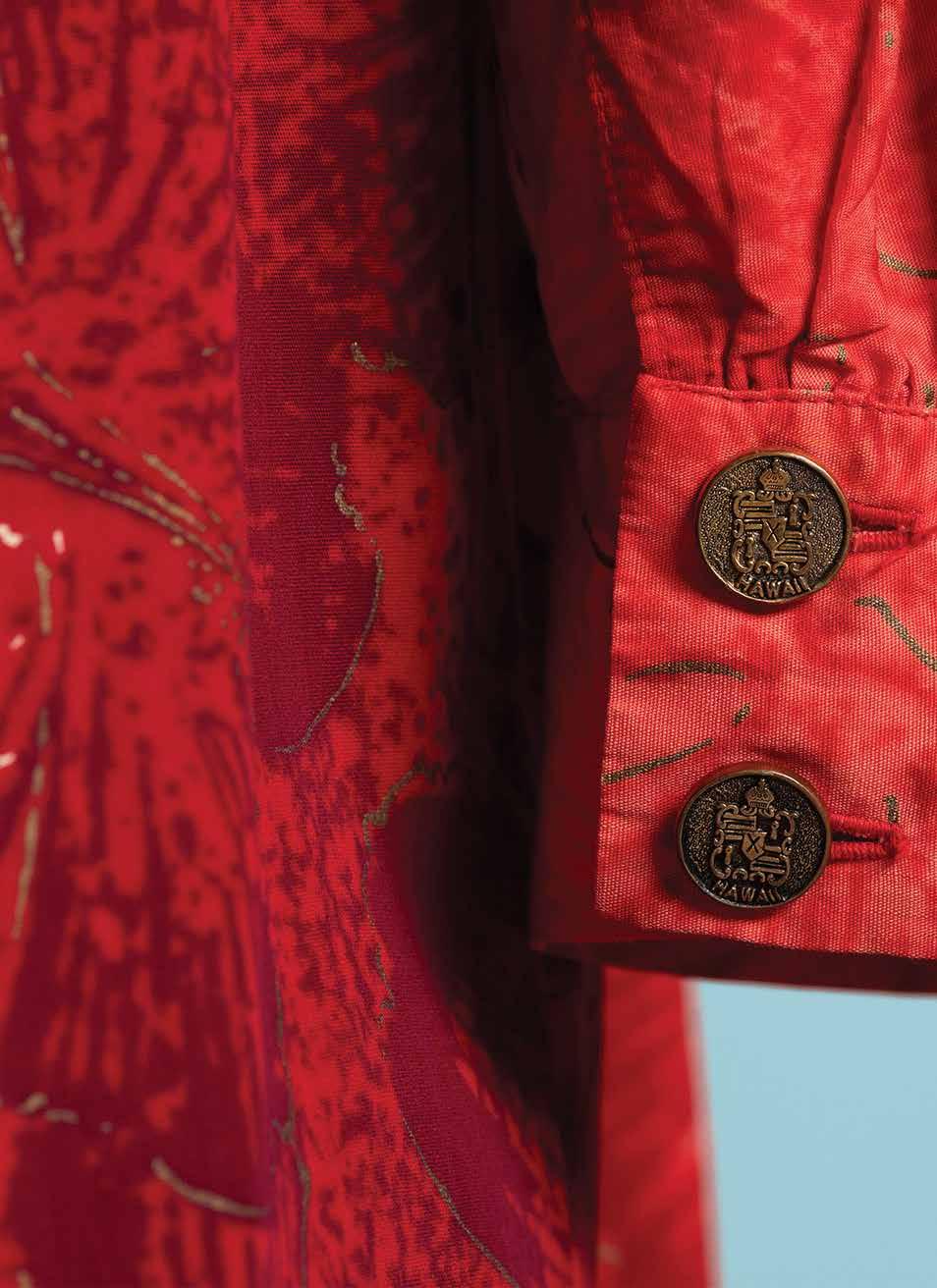
ON VIEW STARTING APRIL 12 900 S Beretania St honolulumuseum.org The story of
wear is a story of
aloha
Hawai‘i
Child’s Play
子どもの遊び
Text by Natalie Schack
Images by John Hook
Production and styling by Taylor Kondo
Featuring Mō‘īokekai Edwards
Jhante Iga and Rachel Lee
ジョン·フック 制作·スタイリング = テイラー·コンドウ モデル = モイオケカイ·エドワーズ、 ジャンテ·イガ、レイチェル·リー
写真 =
文 = ナタリー·シャック
64 C CULTURE Games

Following the birth of her son, a new mother basks in nostalgia for the local games of her youth.
息子の誕生を経て、新米の母親が若かりし頃の地元の遊びに 思いを馳せて
Translation by Akiko Shima 訳 = 島有希子

In the beginning of my son’s life, his hands moved like entities separate from himself, flapping like anxious, flitting terns trying to make sense of the world around him. As he got older, I watched his arms settle. Moving with intention, he discovered how to play. He held objects, puzzles, and toy cars and turned them over in his hands, his understanding of the world growing with each playful encounter. He brought me playthings and watched how I reacted. He reached for me and, elated, clutched at me when I reached back for him.
息子が生まれて間もない頃、彼の手はまるで別の生き物のように動いていた。
不安げに飛び回る海鳥のアジサシのように、周りの世界を理解しようと、手を バタつかせている。私は、成長とともに彼の腕が落ち着くのを見守った。やがて 意図的に手を動かせるようになると、息子は遊び方を覚えた。物やパズル、お もちゃの車などを手に取り、掌の上でひっくり返すといった遊びを重ねるごと に、彼の世界への理解は深まっていく。遊び道具を持ってきては、私の反応を 見たり、こちらに向かって手を伸ばし、私が手を差し出すと、喜んでしがみつい たりしたものだ。
66
C CULTURE Games
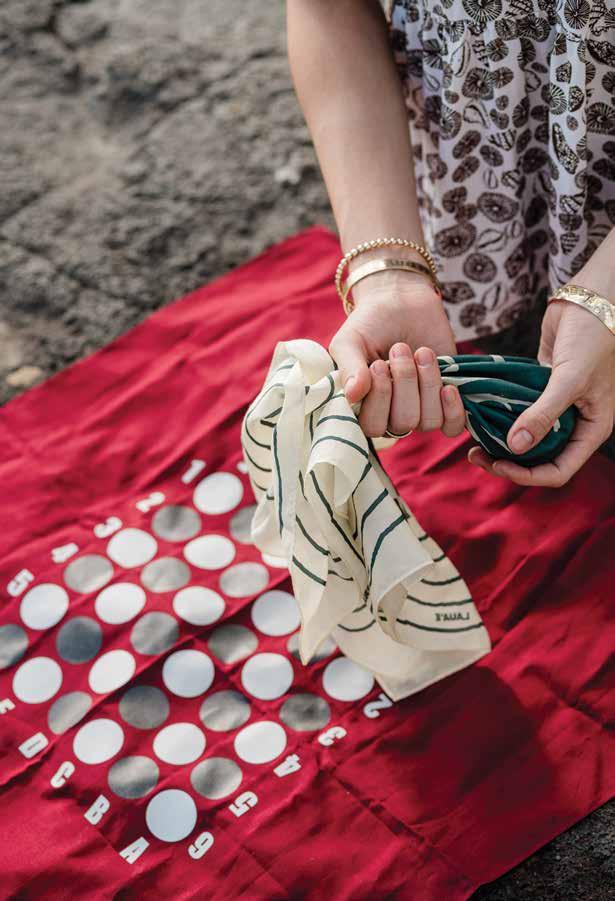 This on-the-go papamū board from the company Hawaiian Checkers comes with ‘ili’ili playing stones, pictured here wrapped in a laua‘e-patterned bandana from Salvage Public alongside Hawaiian heirloom bracelets by HIE.
This on-the-go papamū board from the company Hawaiian Checkers comes with ‘ili’ili playing stones, pictured here wrapped in a laua‘e-patterned bandana from Salvage Public alongside Hawaiian heirloom bracelets by HIE.
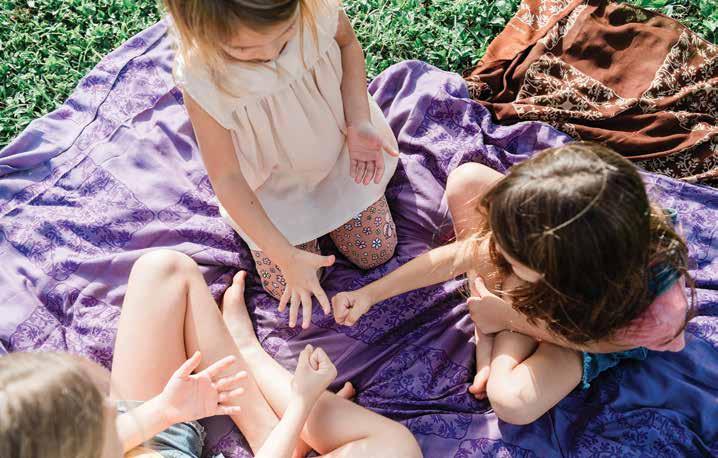
A child playing is a child becoming. Through him, I remembered that games are more than just idle pastimes. They are an exchange of meaning, a language all their own, cultivated from a shared history. After 20 years of adulthood, I had forgotten all of that.
It’s hard, after all, to remember exactly how I spent my own childhood moments of play. But through the foggy stretches of time, little glimpses of clarity emerge: getting filthy racing barefoot through the school field, puffing with pride when I beat the boys to the finish line. To decide who would race whom, there were the obligatory duels of jan ken po, a colloquialized name for the game of rock, paper, scissors that we thought was Hawai‘i’s own.
As an adult, I learned that jan ken po was imported to Hawai‘i by Japanese plantation workers, who first came to the islands in 1885. Once here, janken, as it was known in Japan, was adopted by Hawai‘i’s multicultural residents, and the original song of “jankenpon, aiko desho” evolved into the pidginized “jan ken po, I can show” chant that was ubiquitous throughout my childhood. In elementary school, though, we didn’t know any of that. You just knew the game without knowing why or how, one of the subtle ways immigrant cultures have woven themselves into a distinct Hawai‘i identity. We only knew it as something
遊ぶ子は育つ。息子を通して、私は遊びが単なる暇つぶしではないこ とを思い出した。それは意味の交換であり、独自の言語であり、共有された 歴史から培われたものである。大人になって20年経ち、私はそれらすべて を忘れてしまっていた。
結局、自分の子ども時代の遊びの瞬間を正確に思い出すのは難し い。それでも、霞んだ時の流れの中で、少しずつ明瞭な記憶が浮かび上がっ てくる。汗だくになりながら、裸足で校庭を駆け抜け、男子を負かしてゴール したときは、誇りに胸が膨らんだものだ。誰が誰と競うかを決めるのに「ジ ャンケンポー」の勝負は必須であった。私たちは、石、紙、はさみで勝ち負け を決めるじゃんけんは、ハワイ独自の遊びだとばかり思っていた。
大人になってから、ジャンケンポーが1885年に初めてハワイにやっ てきた日本人のプランテーション労働者によってハワイに持ち込まれたこ とを知った。日本の「じゃんけん」は、ハワイに住む多文化な人々にも受け入 れられ、日本で使われていた「じゃんけんぽん、あいこでしょ」という掛け声 は、ハワイでは私が子どもの頃に広く普及していたピジン語の「ジャンケン ポー、アイキャンショー」というものに進化していった。小学生の頃、そんな ことは何一つ知らなかった。なぜ、どうしてなどと考えることもなく、遊び方 を知っているだけだった。移民文化は、このようにハワイ独自のアイデンテ
Sisters face off in a game of jan ken po on naupaka-print pāreu from Salvage Public.
68 C CULTURE Games
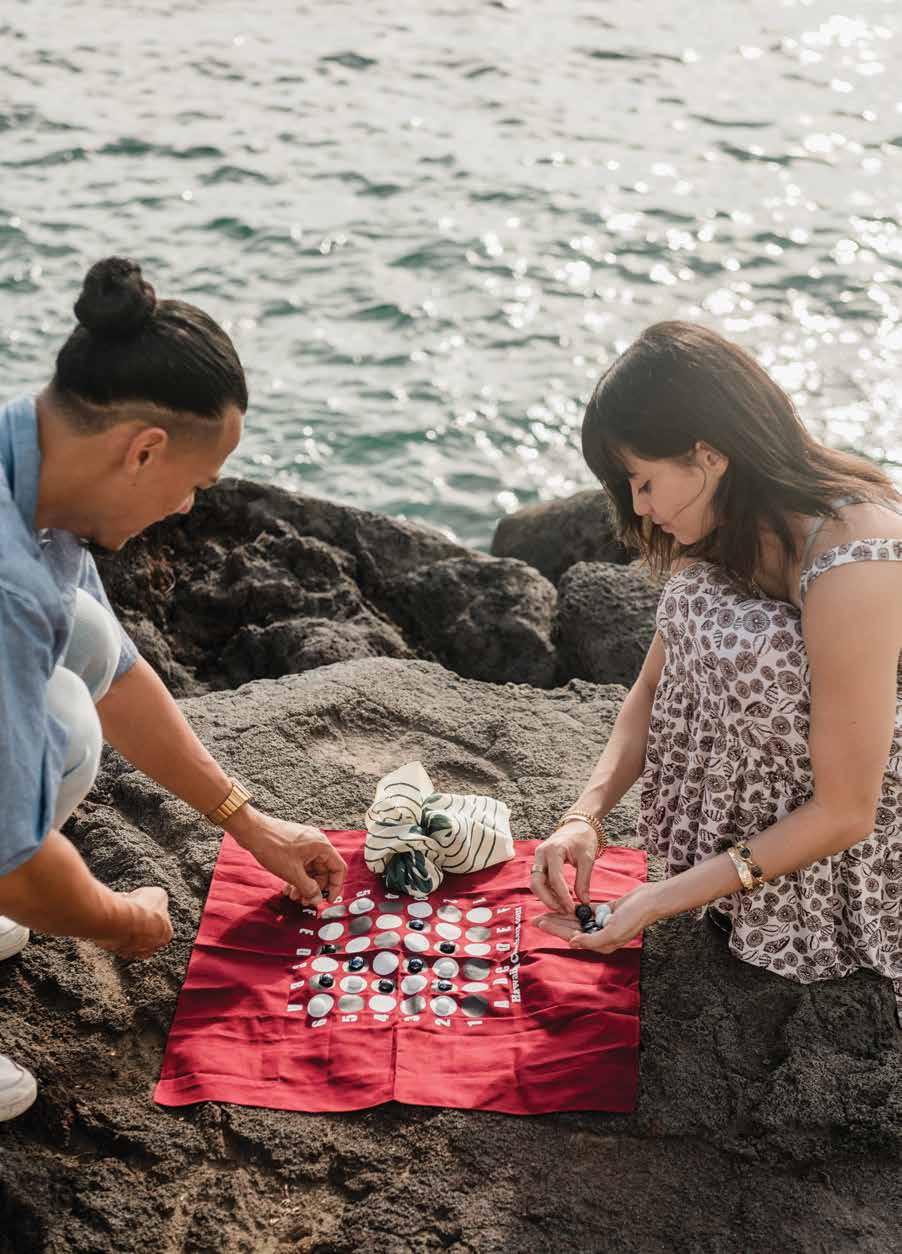
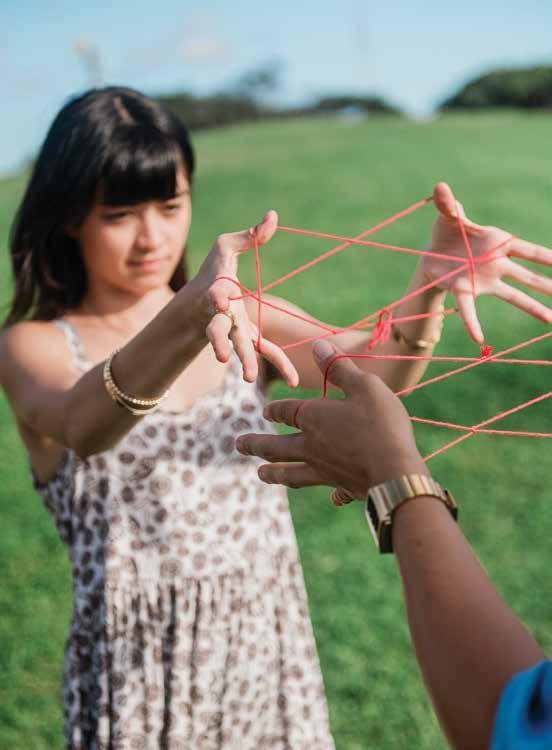
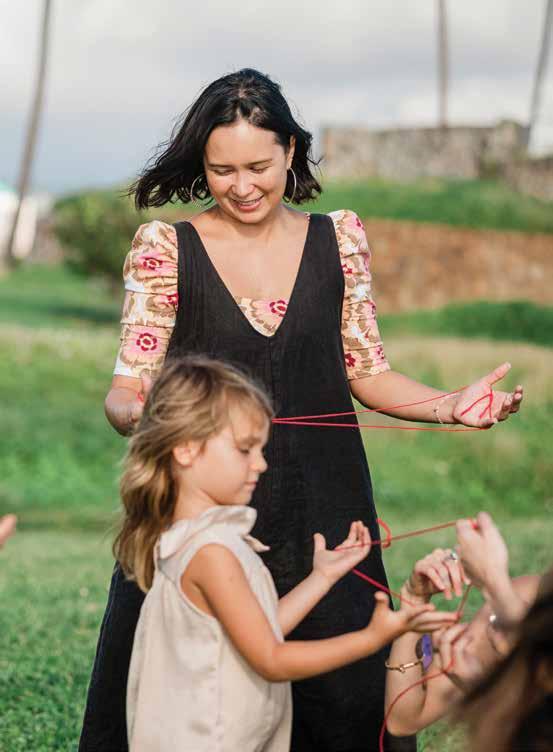
shared and understood by our classmates, as ingrained in us as any other game that proliferated the playgrounds and schoolyards. As girls we would sit on the ridged concrete lānai outside of our fifth-grade classroom, staining our shorts on the ancient, crimson dirt caked in the pavement as we passed string figures back and forth in a game of cat’s cradle. Together we learned how to weave sculptural designs, plucking the string—delicately, delicately—from someone else’s fingers to create some new fractal delight as we passed the time during recess.
As an adult, I learned that these string figures are among the oldest games in history, found in first-century Greek monographs and Edo-period woodblock prints. To Native Hawaiians, it was known as hei, and its complex string figures and slip tricks were accompanied by chants. They functioned as mnemonic devices through which the islands’ history could be recorded with no written language. Hei, much like hula, recounted myths, legends, and genealogies—manifold stories told through the deft slips and weaves of string across fingers.
Some years, we took school trips far afield, spirited away from the red clay of O‘ahu’s central plains to Hawai‘i Island’s little bays, silence, and deep history. There, papamū—those ancient board games carved from rock—stood solemnly near the shoreline. The game, kōnane, was one of tactics, a simulation of war not unlike checkers and played by great warriors and chiefs to hone their battlefield stratagems. It was said that King Kamehameha I, who united the islands under his rule and brought about Hawai‘i’s monarchical dynasty, could defeat an opponent in just one move. As kids, we wrestled for spots around the rocks and made up the rules as we went, unaware of the history embedded within those stone slabs.
Today I can’t help but wonder, “Where are the games now?” Unlike the journey of becoming I see in my son’s games, growing up feels like an excruciating un-becoming—a fracturing into many small pieces. Grief and disappointment, divorce and despair, loss and insecurity: adulthood is often nothing like a game and feels instead like a transformation in which playfulness has no place.
Or does it? Perhaps embedded in the games of my childhood is an instructiveness that manifests as tools later in life, helping adult-me fight her battles, make decisions, and create meaning and beauty out of nothingness, even in the most unplayful of places.
ィティにさりげなく取り込まれている。私たちにとって、じゃんけんは、同級生の 間で共通のルールと認識があるゲームというだけで、遊び場や校庭で流行った 他の遊びと同じくらい根付いていた。私たち女子は、舗装にこびりついた赤土 で短パンが汚れるのも気にせず、5年生の教室の外にあるデコボコしたコンク リートのラナイ(ベランダ)に座って、あやとりをして遊んだものだ。友だちの指 からそうっと糸を引き抜いては幾何学的な新しい形を作り出すこの遊びで、彫 刻のように複雑な模様の編み方を一緒に学びながら、休み時間を過ごした。 このあやとりが歴史上最も古い遊びのひとつであり、1世紀のギリシャの 専門書や江戸時代の木版画にも見られることを知ったのは、大人になってか らのことだ。ハワイ先住民の間では「ヘイ」と呼ばれた、その複雑な模様や指を 糸に通す遊びにはチャント(詠唱)が伴った。それは文字を持たなかったハワイ で、島々の歴史を記録するための記憶術として使われていた。ヘイは、フラと同 様に、神話、伝説、家系譜を伝えるものであった。手の指の間に糸を滑らかにす べらせ、編み込みながら、多様な物語が語られたのだ。
何年か、私たちは学校の遠足で、オアフ島の赤土の中央平野から遠く離 れた、静寂で歴史深いハワイ島の小さな入り江を訪れた。そこにはパパムと呼 ばれる、岩から彫られた古代のボードゲームが岸辺近くに厳かに立っていた。 コナネというゲームは戦術の一つで、チェッカーに似た戦争のシミュレーショ ンとして、偉大な戦士や酋長たちが戦場での戦術を磨くためにプレイしてい た。島々を統一し、ハワイ王朝を築いたカメハメハ大王は、たった一手で相手 を打ち負かせたといわれている。子どもだった私たちは、その石板に刻まれた 歴史を知ることもなく、好きにルールを作りながら、岩の周りで陣取り合戦をし て遊んだものだ。
今の私は、そんな遊びがどこへいってしまったのだろう? と考えずに はいられない。息子の遊びに見る成長の旅とは違って、大人になるということ は、沢山の小さな破片となって砕けていくような苦痛を伴う「衰退」である気が してならない。悲しみや失望、離婚や絶望、喪失感や不安。大人になることは、 遊びのようなものではなく、むしろ遊び心を持つ余裕をなくすことのように感 じられる。
それとももっと遊び心を持つべきなのだろうか? もしかしたら、私の子 ども時代の遊びには、後の人生で役に立つ教えが込められていて、大人になっ た私が自分の戦いに挑み、決断を下し、遊び心のかけらすらない場面であって も、無から意味と美を創造する手助けをしてくれるのかもしれない。もし、あの ときの遊びが、子ども時代の自分をすべての社会的規範や常識、策略や複雑 な決断力を備えた大人へと成長させたのだとしたら、その逆も可能ではない だろうか? 赤土の中で遊び、ありふれたものから魔法を紡ぎ出し、ジャンケン
72
C CULTURE Games
 Mō‘īokekai Edwards is dressed in Salvage Public’s Naval shirt for a game of kōnane on the papamū stone board at SALT at Our Kaka‘ako.
Mō‘īokekai Edwards is dressed in Salvage Public’s Naval shirt for a game of kōnane on the papamū stone board at SALT at Our Kaka‘ako.
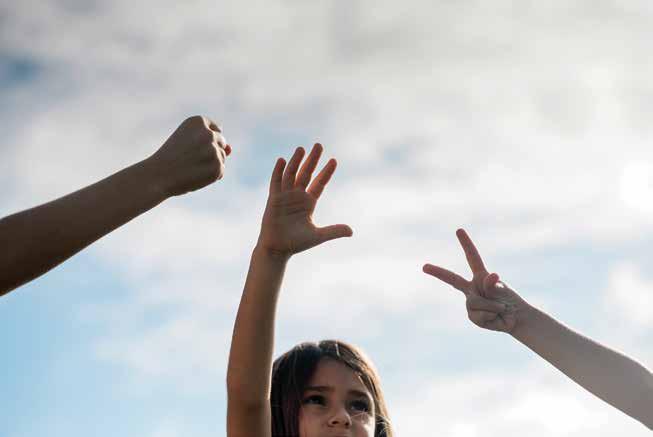
Jan ken po is Hawai‘i’s version of rock, paper, scissors, colloquialized from the Japanese equivalent, janken , brought to the islands during plantation times.
And if those games once ushered my childhood self into maturity—with all of its social norms and mores, its strategies and complex choices—could it do the opposite? Could it lead me back to a version of myself that is content to play in the red earth, weave magic from the mundane, or find joy in a simple game of jan, ken, po? If so, then there is wisdom in those flashes of nostalgia ignited in me as I watch my son go through his own becoming. For woven into those seemingly trivial childhood games—our oldest teachers and loves—are formative lessons that continue to play out as I make my way through the game of life.
ポーという単純なゲームに喜びを見出す自分に戻れるだろうか? もしそうな ら、息子が成長していくのを見守りながら、私の中でノスタルジーが沸き起こる この瞬間にも教えがあるはずだ。私たちにとって最も古い教えであり、大好きだ った一見些細に見える子ども時代の遊びの中には、人生というゲームを生きる 上で活かされ続けている、私を形成する教訓が織り込まれているのだから。
74
C CULTURE Games
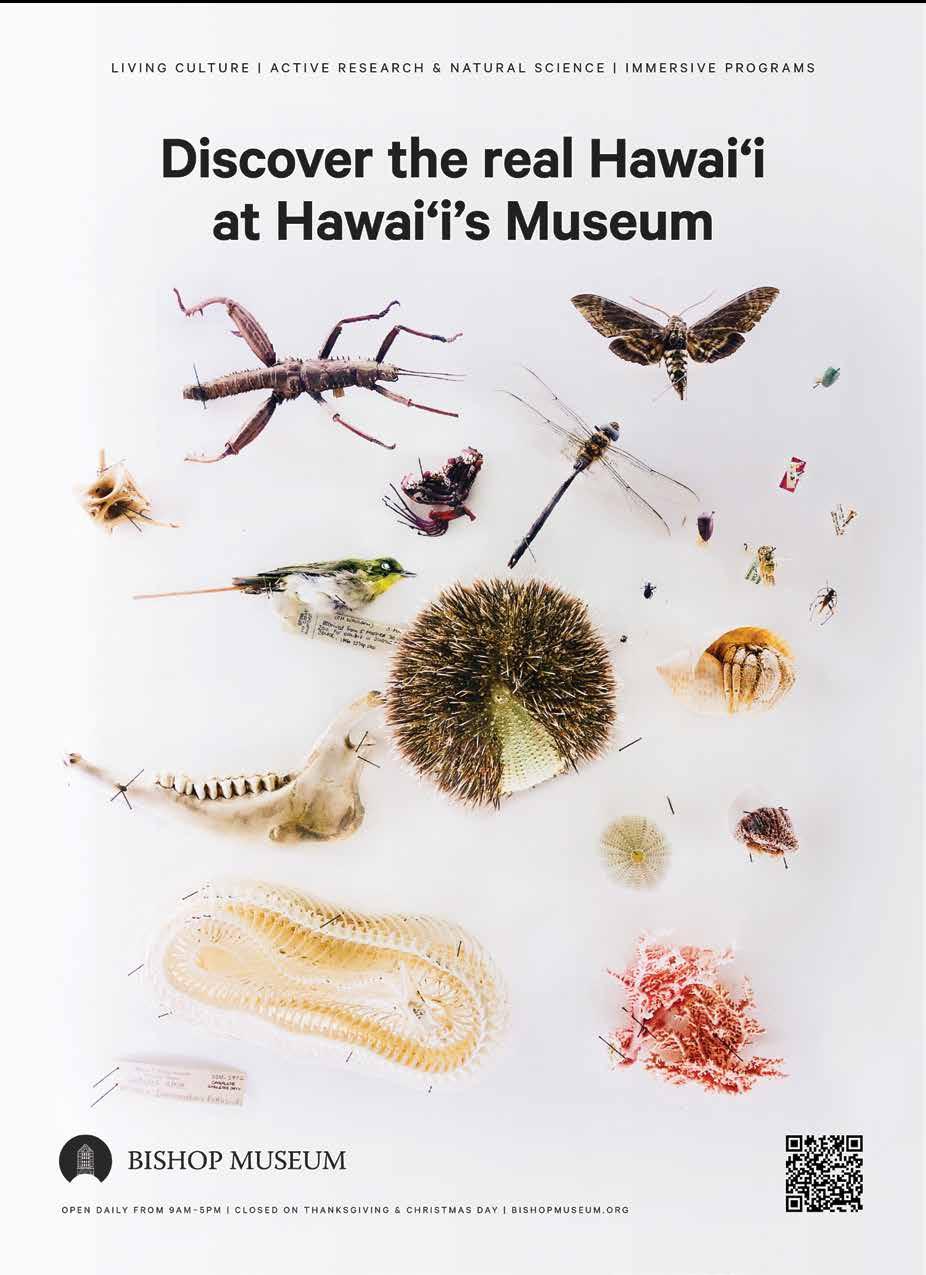
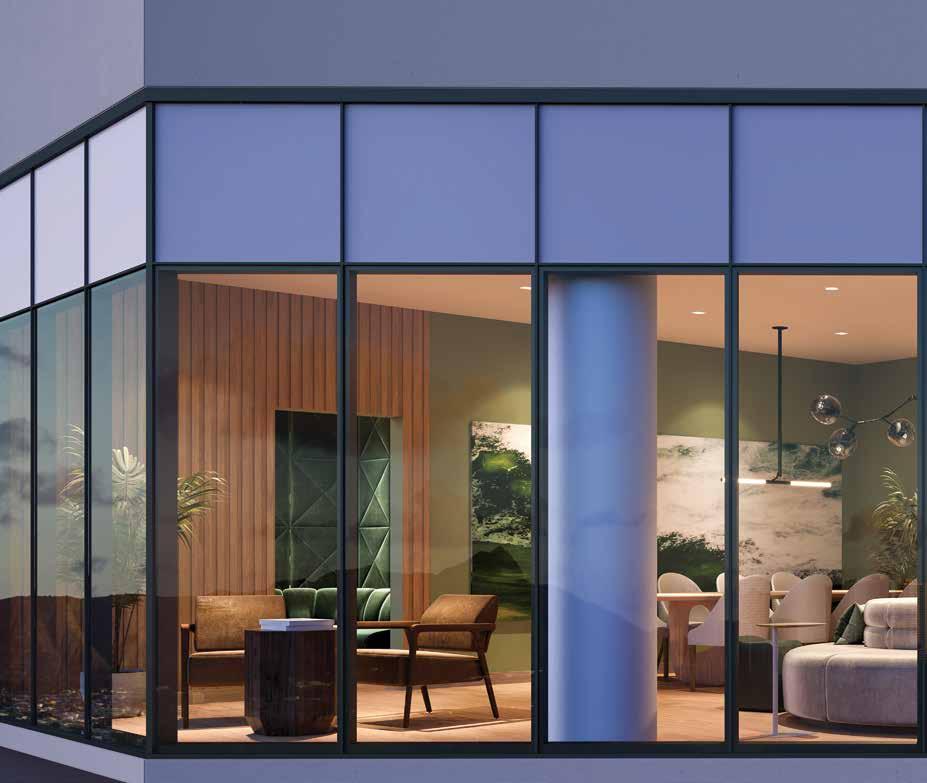


At Kuilei Place, every element has been carefully considered.
Customizable interiors, environmentally friendly design, extensive amenities, and a premier location allow residents of the one-, two-, and three-bedroom homes to thrive. In each residence, natural light and floor-to-ceiling windows create a warm and welcoming space. Our commitment to sustainability shines through with Energy Star lighting and appliances, centralized solar hot water heating, EV car sharing, Level 3 EV fast charging stations, and an innovative greywater treatment system.

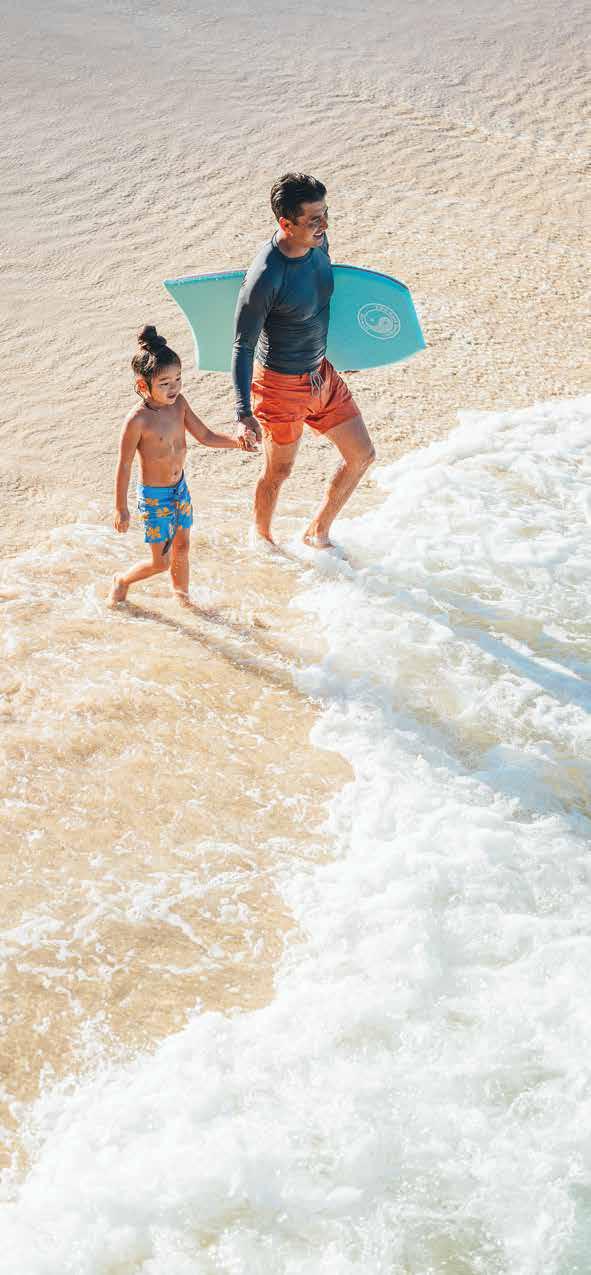
Experience
Elevated Island Living
Homeowners can indulge in a variety of gathering and recreational spaces, including reservable barbecue cabanas, club rooms, and penthouse level private dining suites –one of which features its own karaoke lounge.
Beyond our community, residents enjoy easy access to a wealth of historic neighborhoods, schools, and recreational destinations such as Kapi‘olani Park, Waikīkī, and Kaimukī.


For more information, please visit our sales gallery. Ala Moana Center, Level 3 Ewa Wing 1450 Ala Moana Blvd. Suite 3505, Honolulu, Hawai‘i 96814 Starting Pricing: 1-bed: $680K 2-bed $890K 3-bed $980K www.kuileiplace.com | 808.751.2599 Kuilei Place is a proposed project that is being developed by 2599 Kapi‘olani, LLC and does not yet exist. All figures, facts, information, and prices included in this advertisement are approximate and subject to change at any time. Compass Hawaii, LLC is the exclusive broker designated for this project. Courtesy to qualifying brokers; see project broker for details. Connect with us on social: @kuileiplace | #KuileiPlace
DE SI GN
The flourishing of デザイン D
facilities creative 81 D
Tropicana Luxe
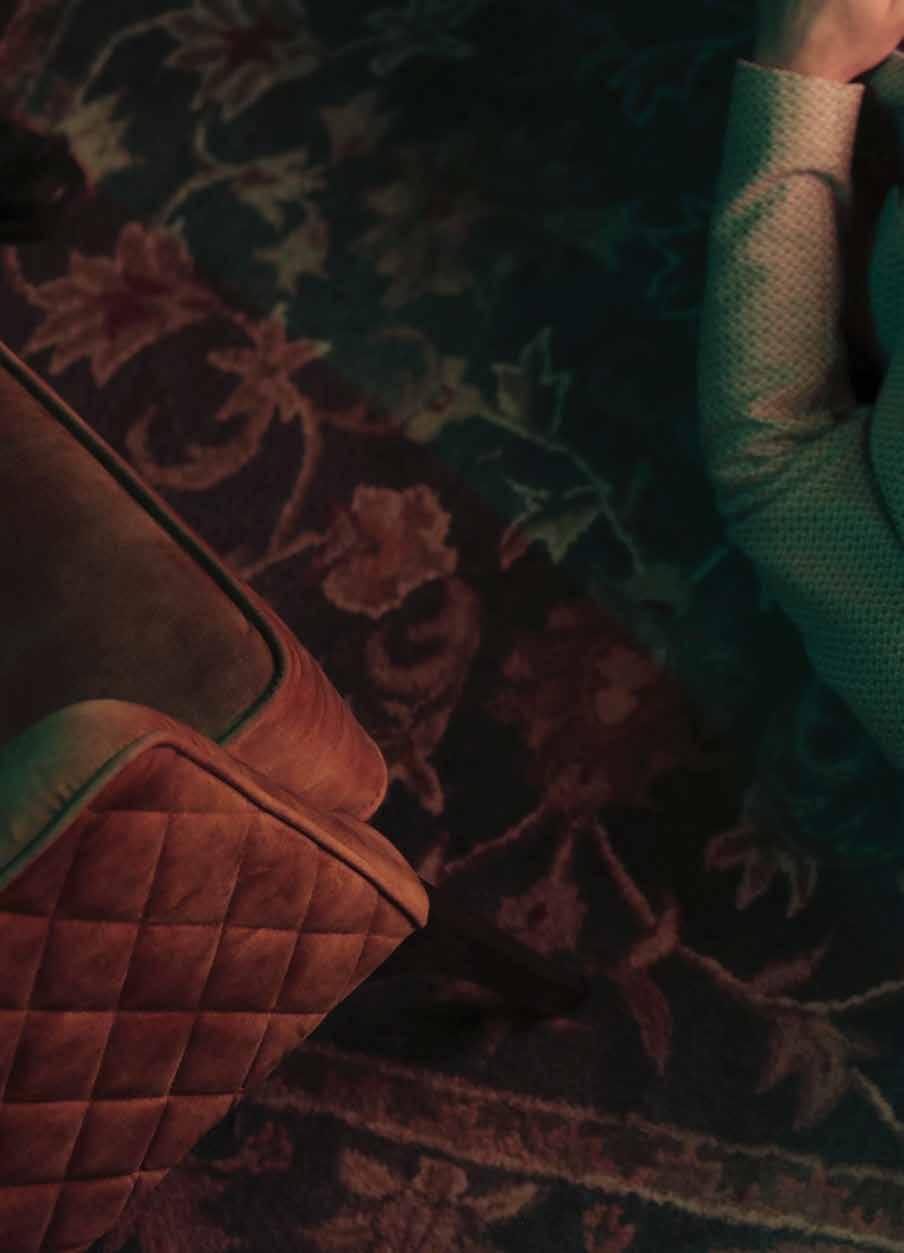
Sumptuous menswear is fit for stylish days and sultry nights at Green Lady
82 DESIGN Fashion
Images by Harold Julian
Styled by Ara Laylo
Modeled by Chico Whitmore
Grooming by Tamiko Hobin
Production by Taylor Kondo and Kaitlyn Ledzian
Photo assistance by Brenden Donahue
トロピカル·リュクス D
Cocktail Room.
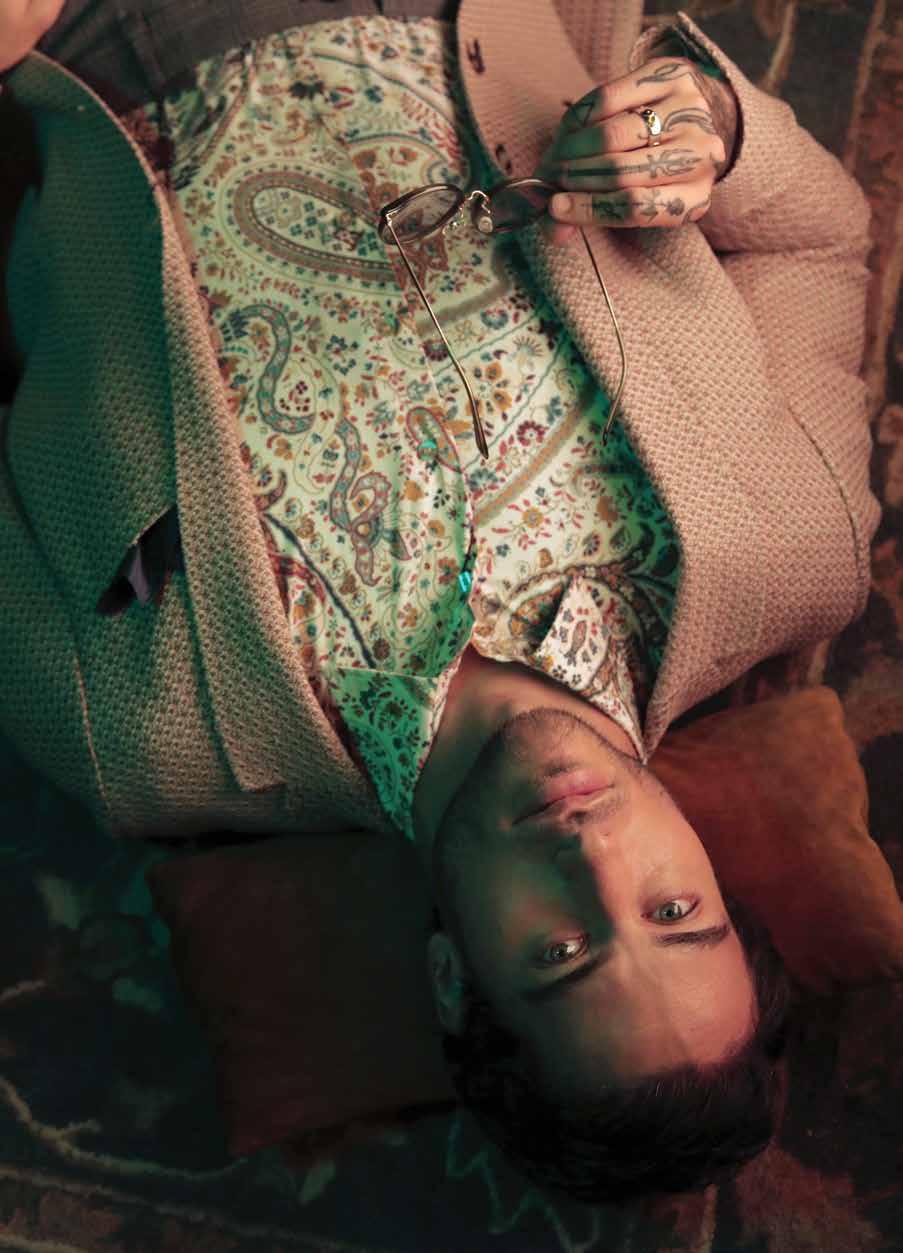
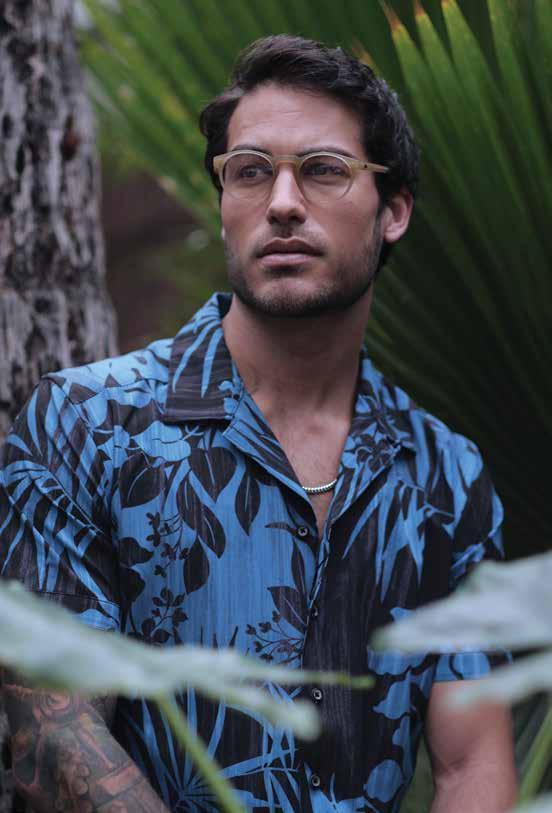 Robert Graham Drift Away printed camp shirt from Neiman Marcus. ‘Ike frame eyewear from Salvage Public. Necklace, model’s own.
Zegna cashmere Oasi overshirt, pocket polo shirt, cotton-stretch 5-pocket pants, Konstantino Phidias silver and bronze tapered cross pendant, and sterling silver box chain, all from Neiman Marcus. ‘Ike frame eyewear from Salvage Public. Ring, model’s own.
Robert Graham Drift Away printed camp shirt from Neiman Marcus. ‘Ike frame eyewear from Salvage Public. Necklace, model’s own.
Zegna cashmere Oasi overshirt, pocket polo shirt, cotton-stretch 5-pocket pants, Konstantino Phidias silver and bronze tapered cross pendant, and sterling silver box chain, all from Neiman Marcus. ‘Ike frame eyewear from Salvage Public. Ring, model’s own.

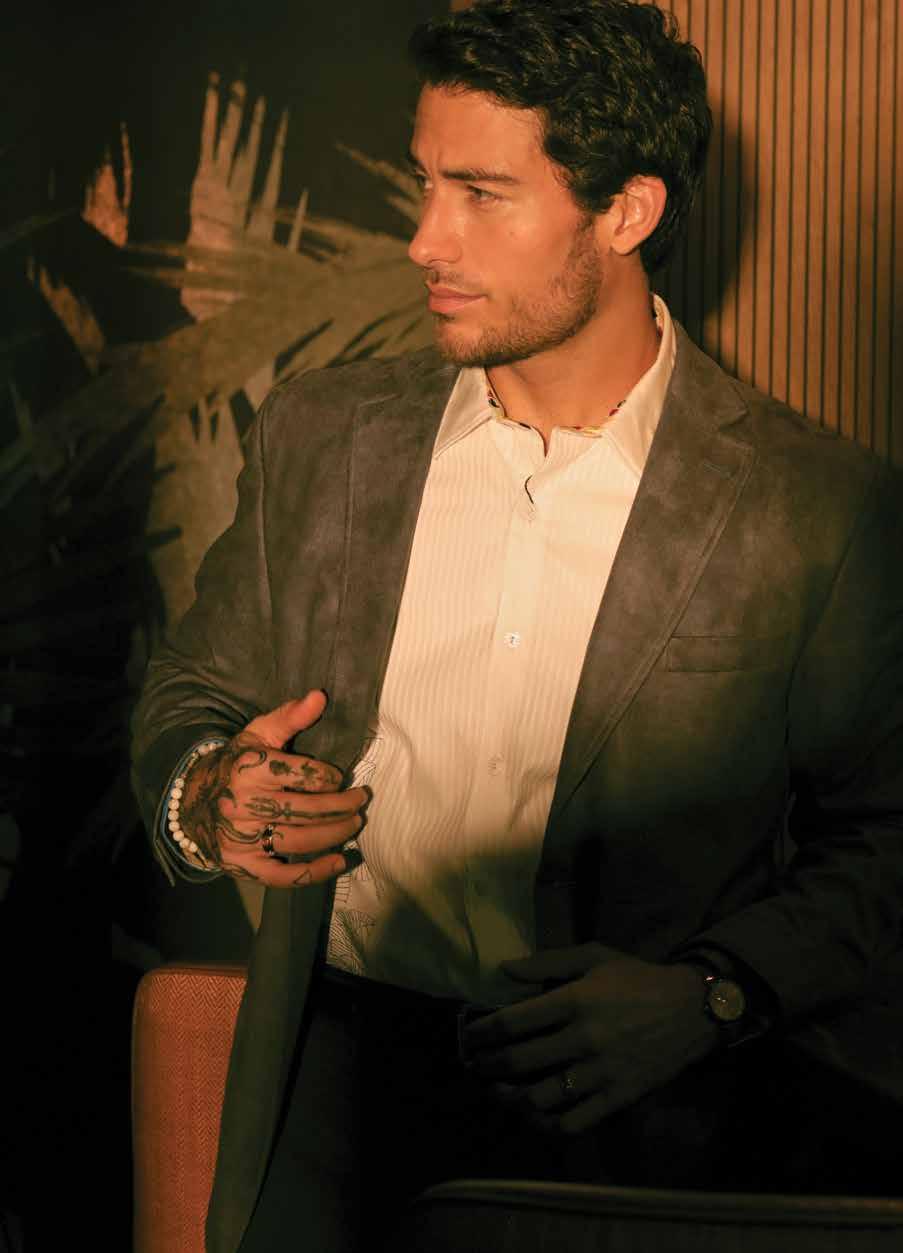
 Robert Graham sport coat and Pleiades button-down shirt from Neiman Marcus. Rings, watch, and bracelet, model’s own.
Robert Graham sport coat and Pleiades button-down shirt from Neiman Marcus. Rings, watch, and bracelet, model’s own.

Original Penguin plaid corduroy notch sport coat, Karl Lagerfeld rib cotton blend henley, and Vince Camuto Cave dress pants. Konstantino Laconia necklace from Neiman Marcus. Obake necklace and rings, model’s own.
Alexander McQueen jacket and trousers. Konstantino Phidias silver and bronze tapered cross pendant, Laconia necklace, and Gucci GG-Logo aviator acetate sunglasses, all from Neiman Marcus. Rings and watch, model’s own.
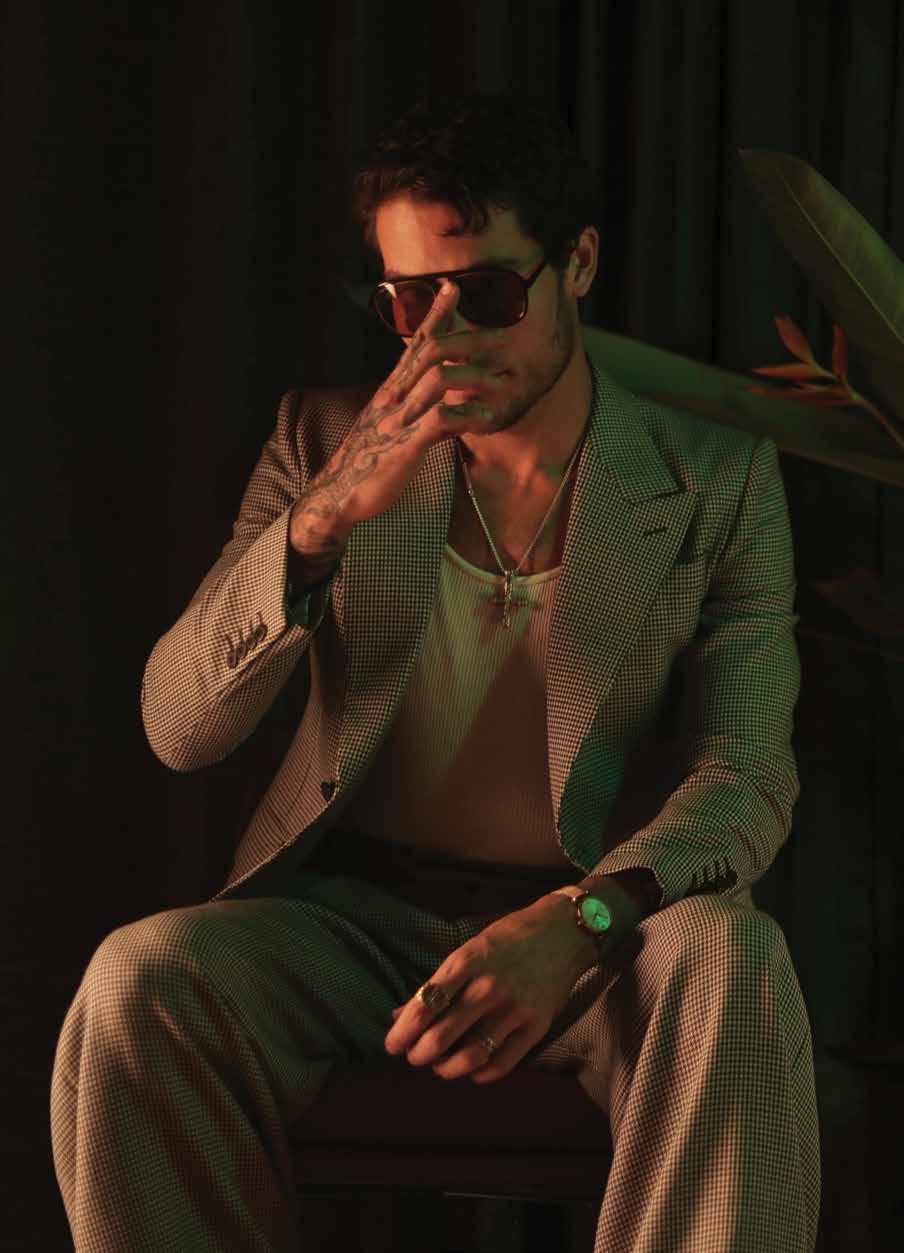
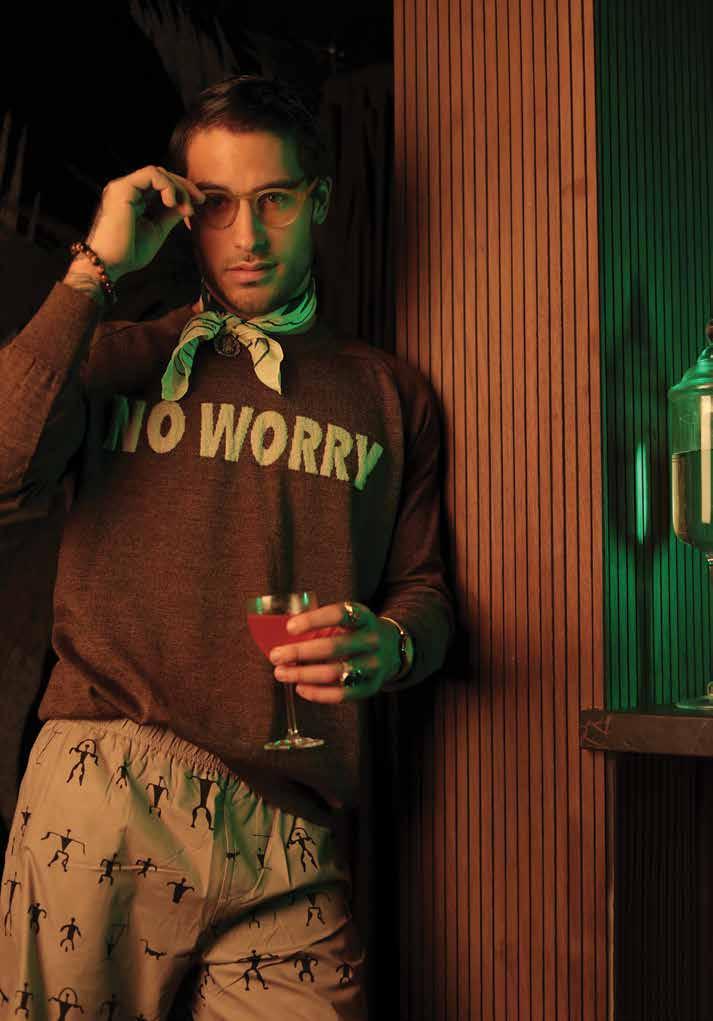 “No Worry” wool jacquard crewneck knit, Hawaiian Petroglyph swim shorts, Laua‘e Echo cotton/silk bandana, and ‘Ike frame eyewear, all from Salvage Public. Konstantino two-tone coin pendant and sterling silver pave spinel signet ring from Neiman Marcus. Bracelet, ring, and watch, model’s own.
“No Worry” wool jacquard crewneck knit, Hawaiian Petroglyph swim shorts, Laua‘e Echo cotton/silk bandana, and ‘Ike frame eyewear, all from Salvage Public. Konstantino two-tone coin pendant and sterling silver pave spinel signet ring from Neiman Marcus. Bracelet, ring, and watch, model’s own.
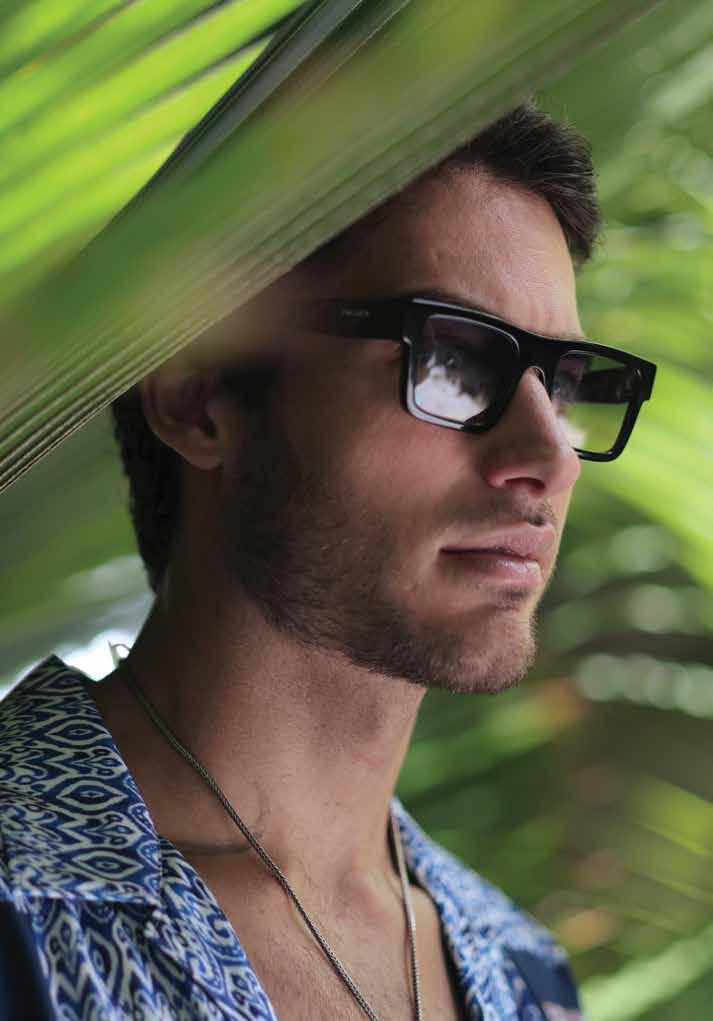 Robert Graham Shere Khan printed camp shirt, Konstantino silver chain necklace, and Prada square acetate sunglasses, all from Neiman Marcus.
Robert Graham Shere Khan printed camp shirt, Konstantino silver chain necklace, and Prada square acetate sunglasses, all from Neiman Marcus.
Loose-fitting shirt in verdigris silk twill with Étriers print and shorts with elastic waist in licorice plume nubuck calfskin from Hermès of Paris. Gucci double-bridge acetate aviator sunglasses from Neiman Marcus. Obake necklace, rings, watch, and bracelet, model’s own.

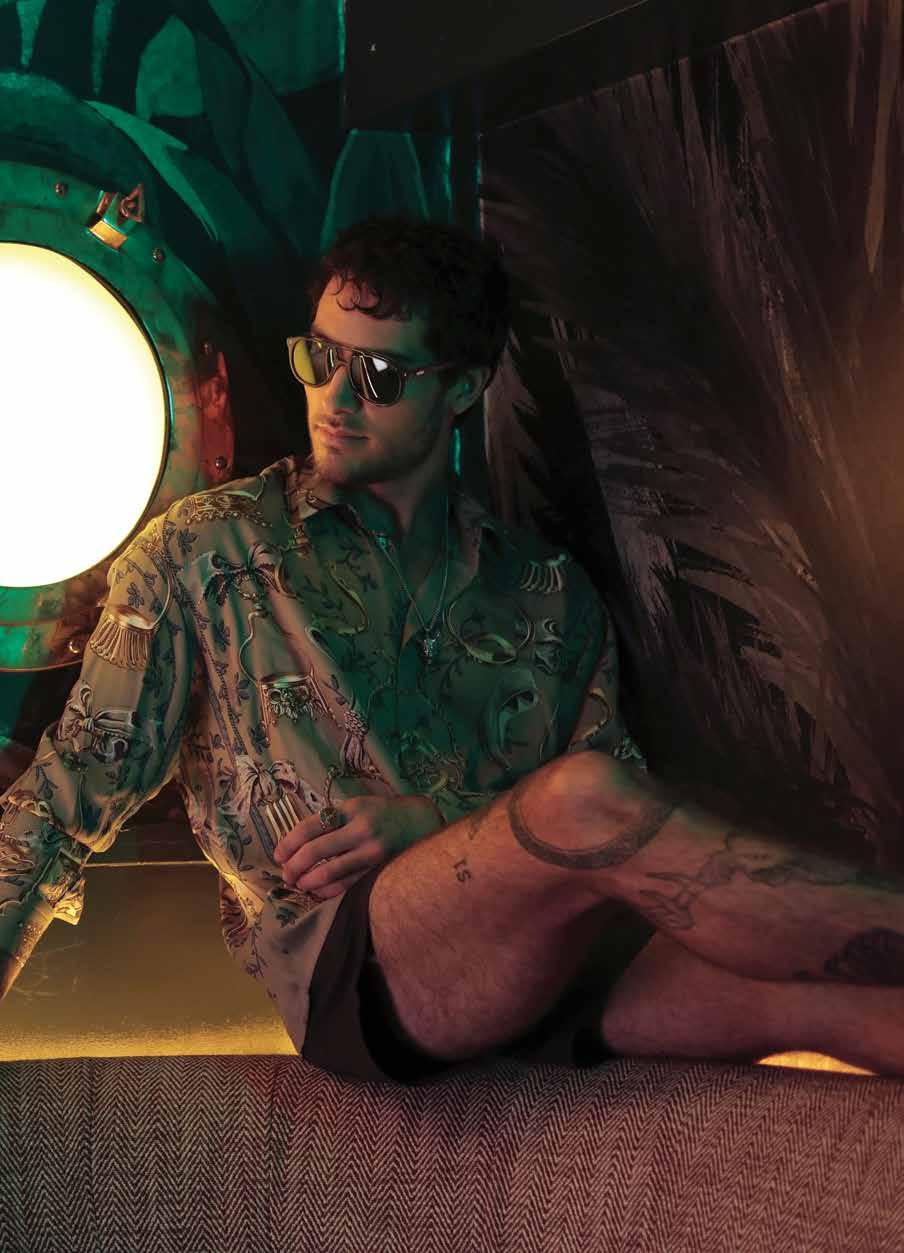
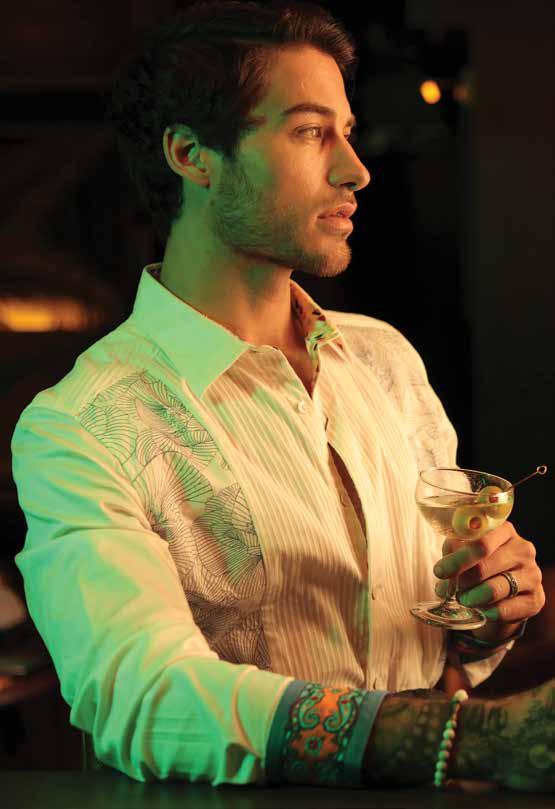 Robert Graham Pleiades button-down shirt from Neiman Marcus. Ring and bracelet, model’s own.
Loose-fitting shirt in verdigris silk twill with Étriers print and shorts with elastic waist in licorice plume nubuck calfskin from Hermès of Paris. Obake necklace, rings, watch, and bracelet, model’s own.
Robert Graham Pleiades button-down shirt from Neiman Marcus. Ring and bracelet, model’s own.
Loose-fitting shirt in verdigris silk twill with Étriers print and shorts with elastic waist in licorice plume nubuck calfskin from Hermès of Paris. Obake necklace, rings, watch, and bracelet, model’s own.
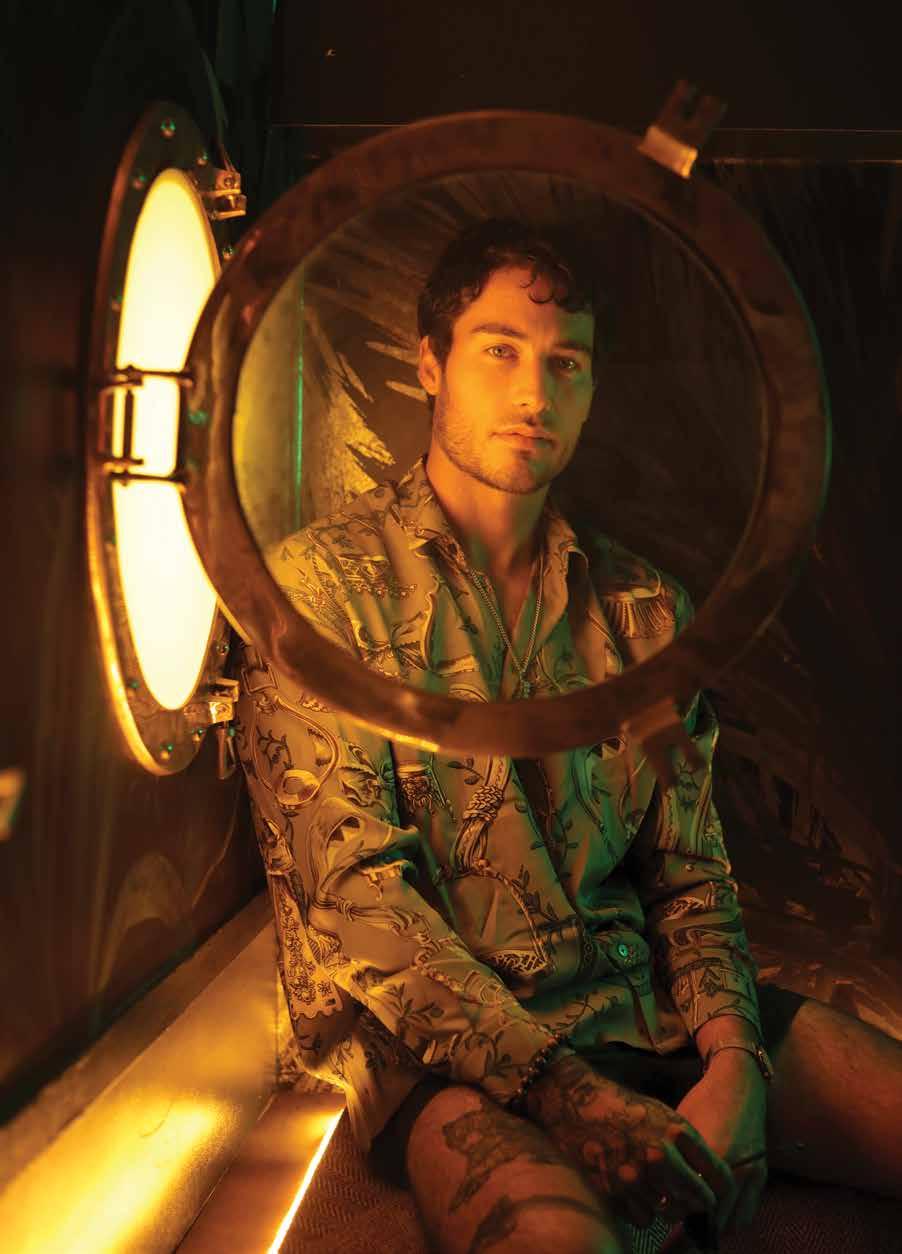
experiences
ES CA PES
both
Travel
エスケープ E
faraway and familiar
97
E
Of Hope and History
Text by Eunica Escalante
Images by Brennen Cunningham , Brendan George Ko , Wendy Laurel , Michelle Mishina , and Josiah Patterson
写真
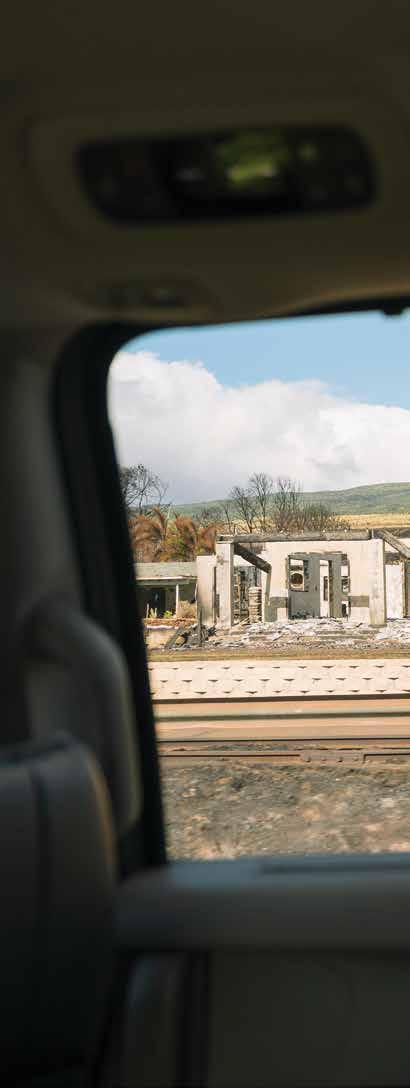
= ブレネン·カニンガム、ブレンダン·ジョージ·コー、 ウェンディ·ローレル、ミシェル·ミシナ、ジョサイア·パターソン 希望と歴史
98 ESCAPES Maui E
文 = ユーニカ·エスカランテ
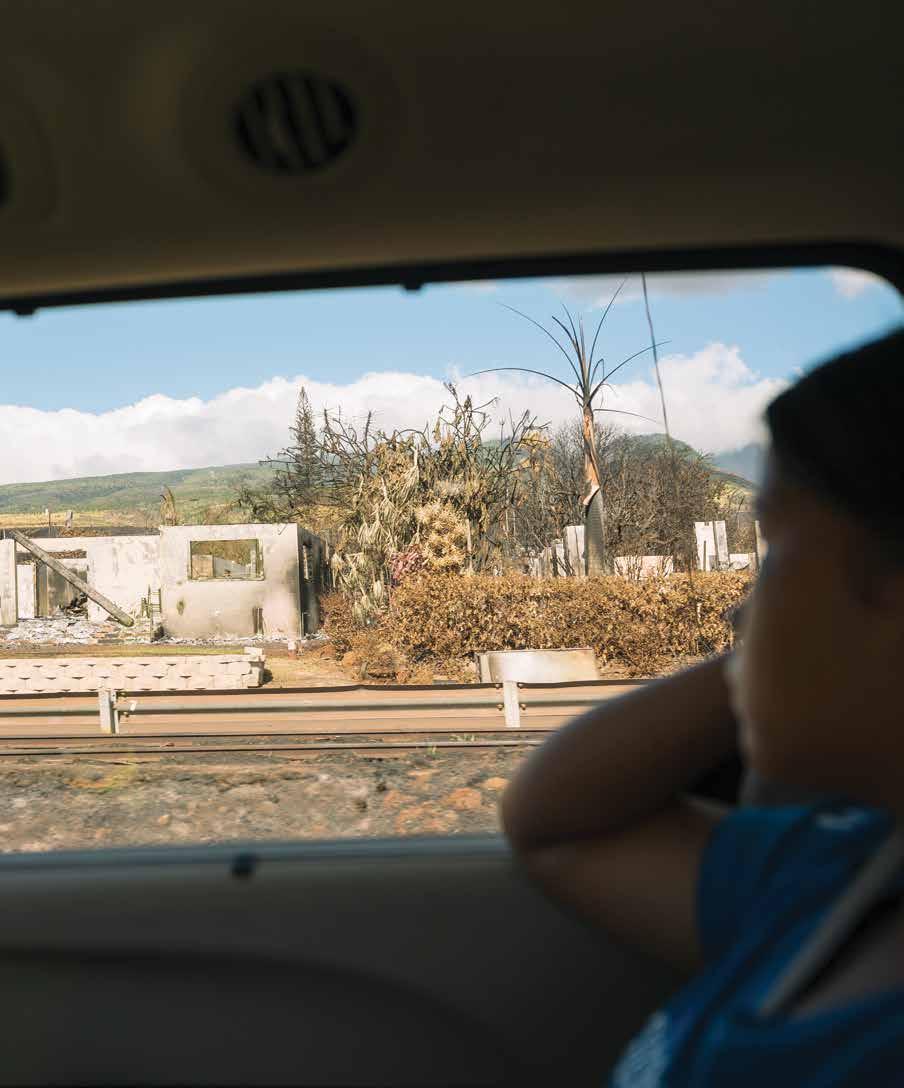
Hawai‘i photographers pay tribute to West Maui in the wake of a devastating blaze. 壊滅的な炎に見舞われた西マウイに哀悼の意を表す ハワイの写真家たち
Translation by Mutsumi Matsunobu 訳 = 松延むつみ

When wildfires ravaged West Maui in late summer of 2023, they would go on to be the deadliest in recent American history. From the ashes arose a longing to remember—to commemorate those lost, to recall the stories of places once brimming with life, to honor a vibrant history forever marked by tragedy. Some sites now exist only in memory: famed Front Street with its vestiges of Lahaina’s past as the royal capital of Hawai‘i; the island’s oldest Christian church, claimed along with three Japanese Buddhist temples. In these snapshots from before and after the blaze, local photographers capture what remains: the soul of West Maui, a community united in spirit and a land with a boundless capacity to heal.
2023年夏の終わり、マウイ島西部を襲った山火事は、近代アメリカ史上最悪 の犠牲者を出す大災害となった。灰と化した町には、忘れ難い無数の記憶への 渇望が芽生えていた。失われた命への哀悼、かつては活気に満ちていた場所の 物語、悲劇により永遠の傷痕をつけられた歴史への称賛。その昔ハワイの王都 として栄えたラハイナ、当時の面影を色濃く残すフロントストリート、マウイ島 最古のキリスト教会、3つの日本の仏教寺院など、いまや記憶の中にだけ存在 する場所もある。地元の写真家たちが撮影した炎に包まれる前と火災後のス ナップショットには、西マウイの精神、強い絆で結ばれたコミュニティ、無限の 治癒力を持つ土地の姿が捉えられていた。
100 ESCAPES Maui E
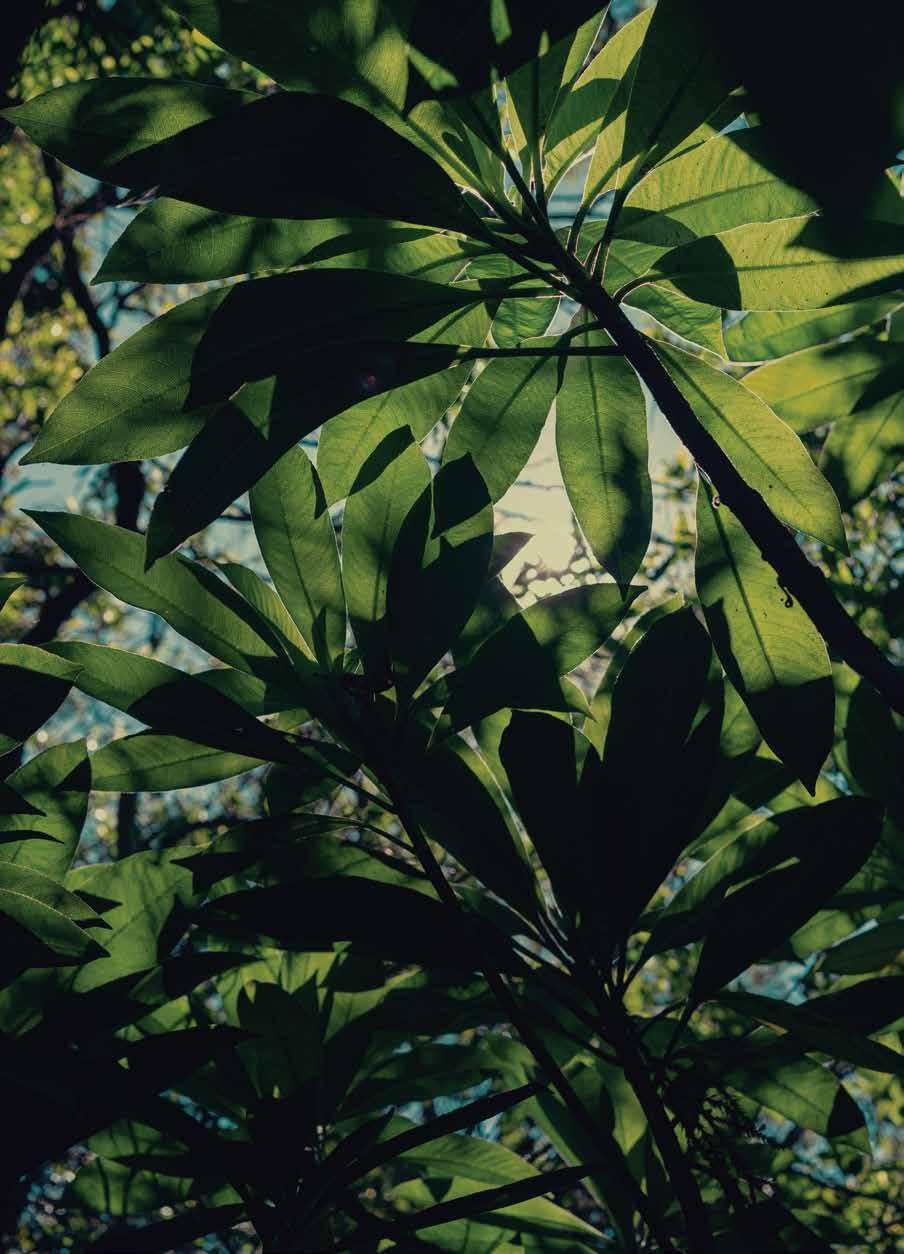
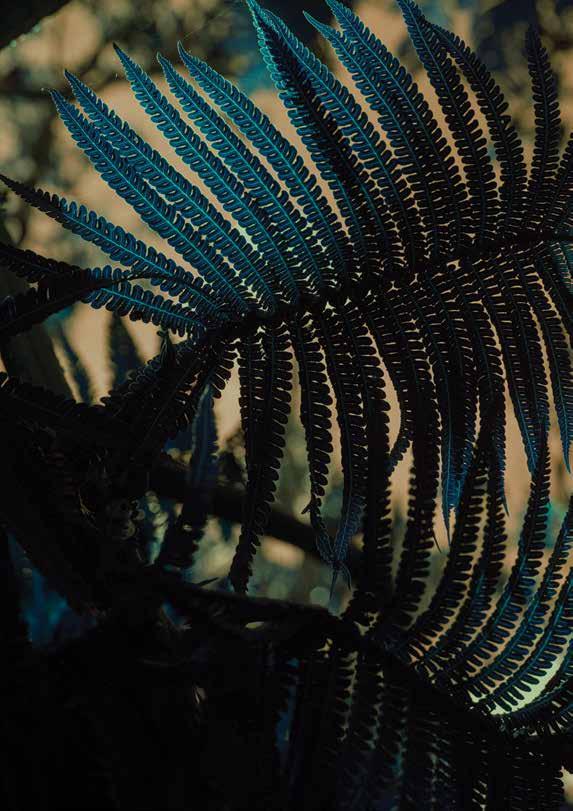
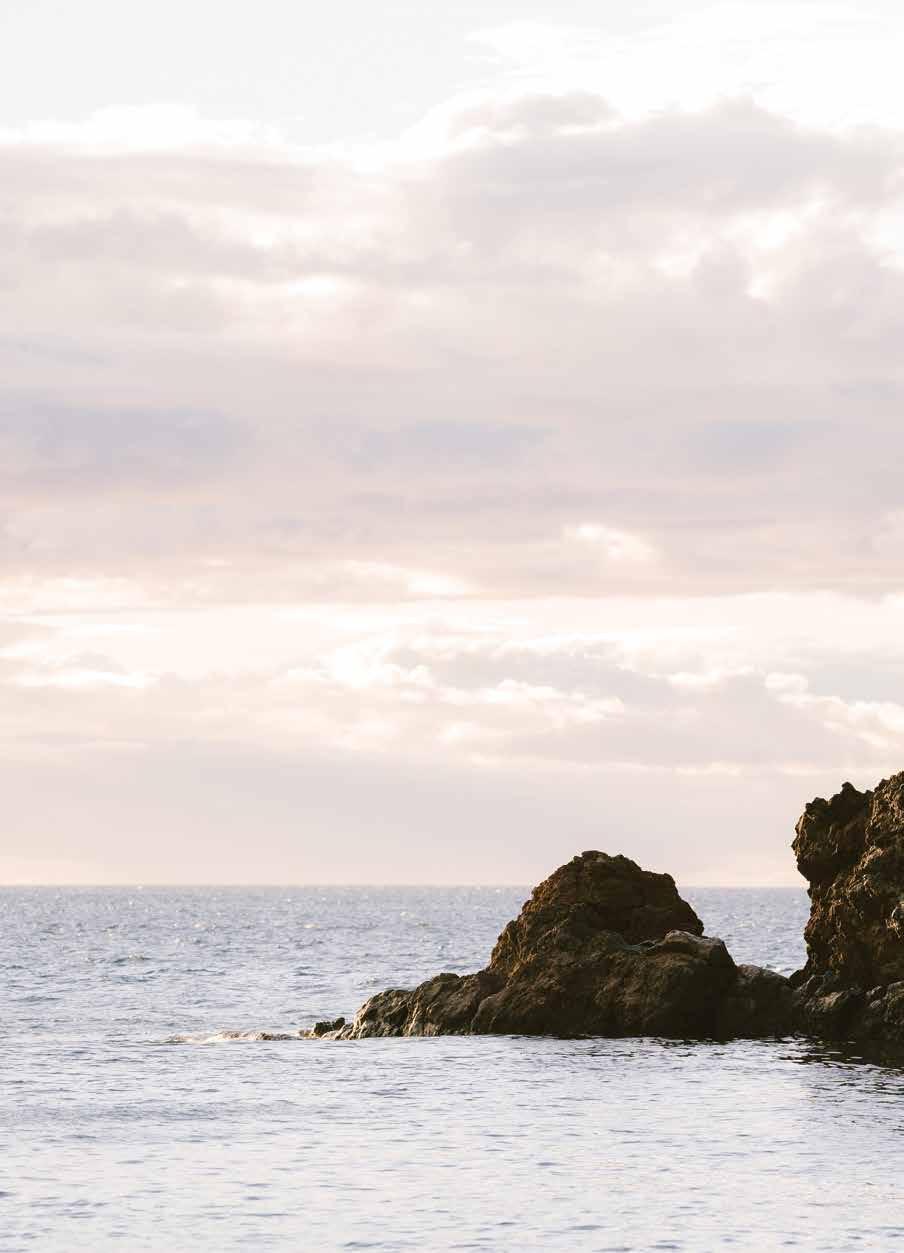
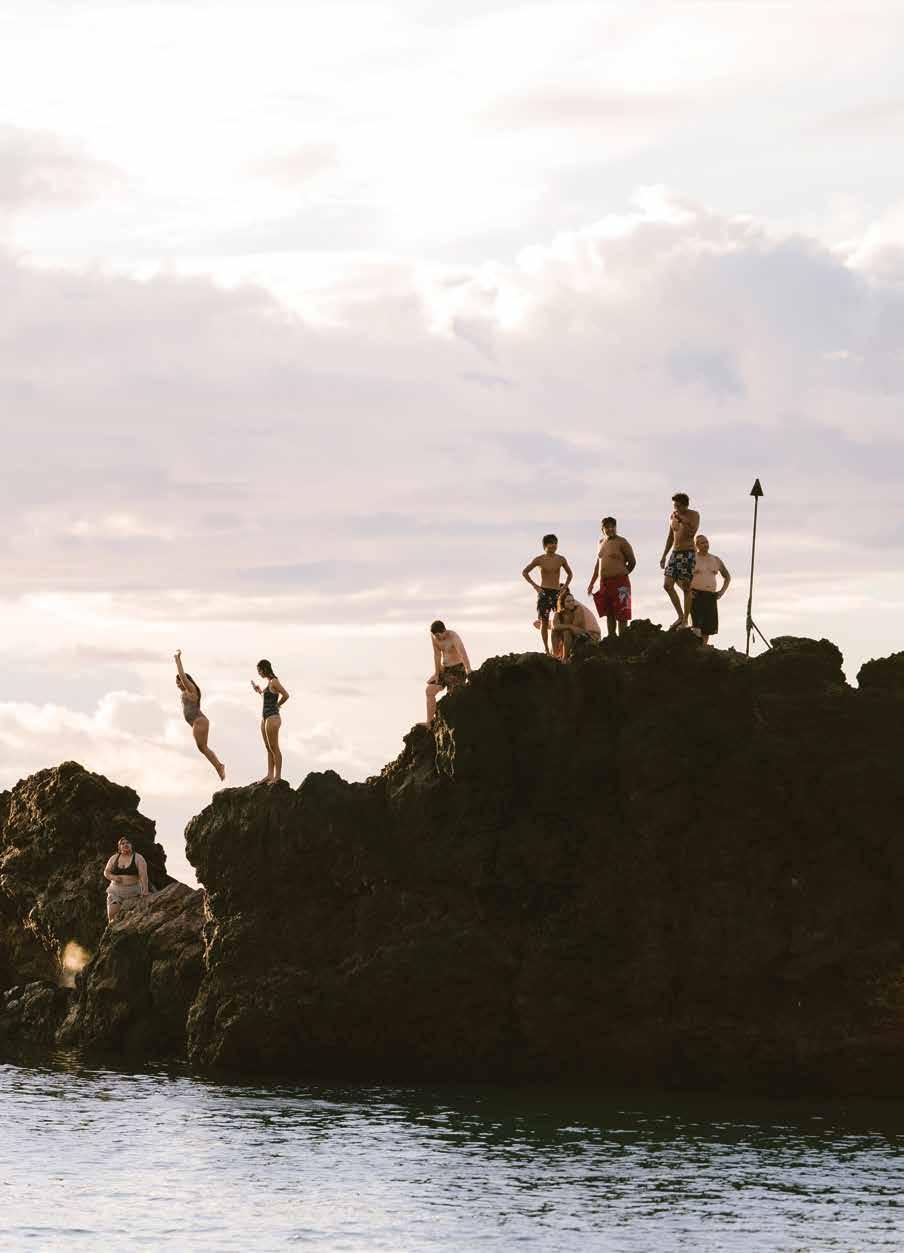
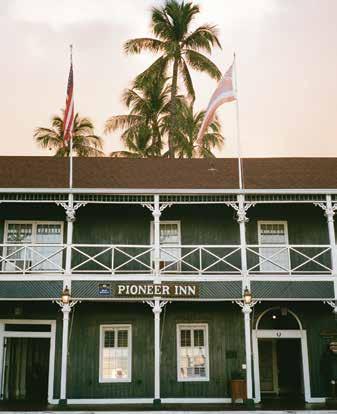
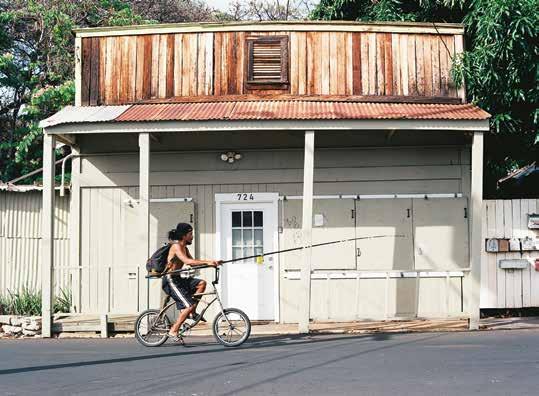
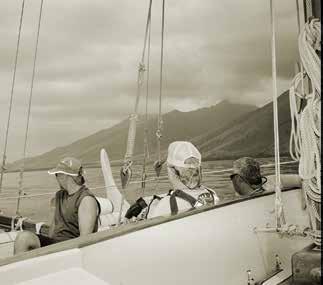


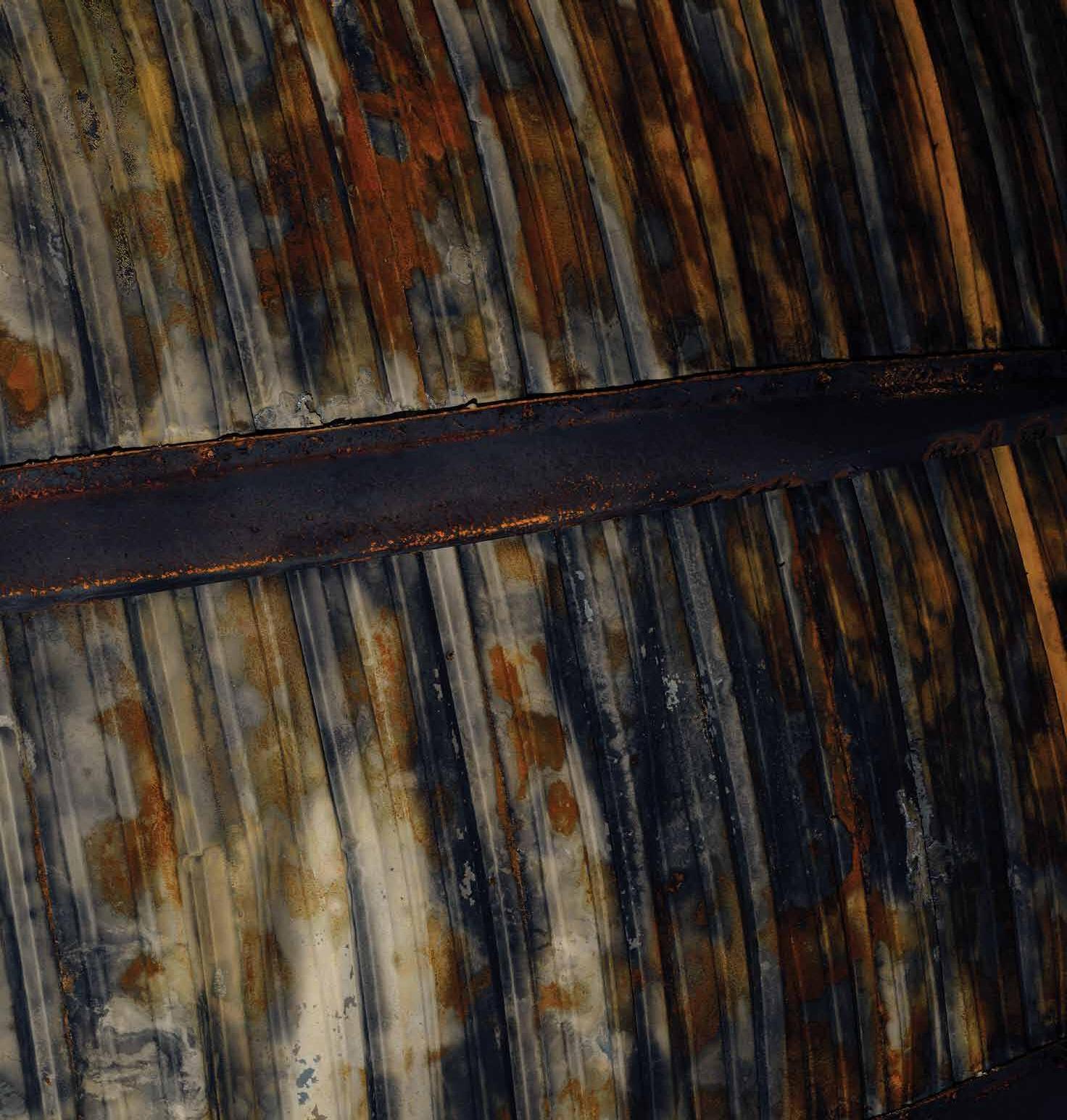
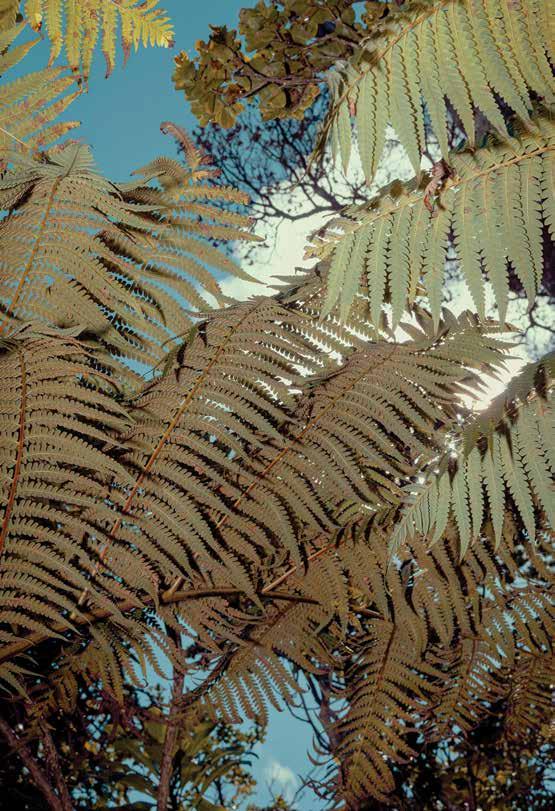

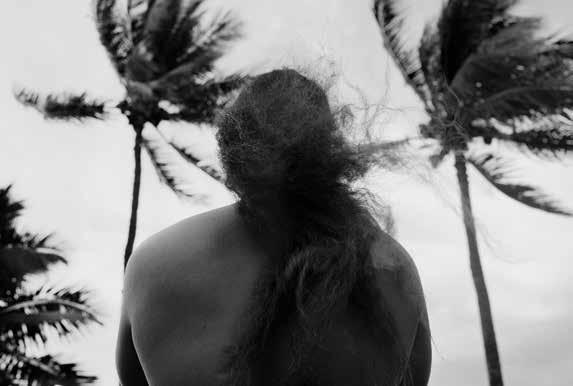
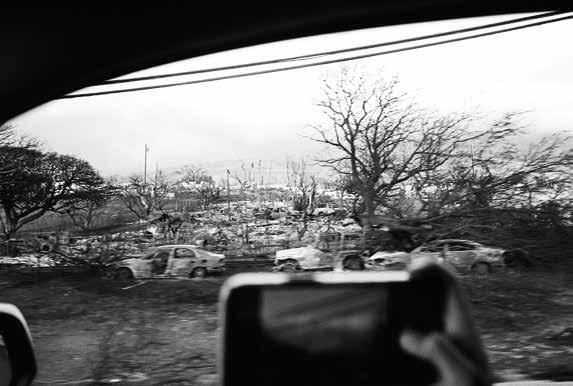

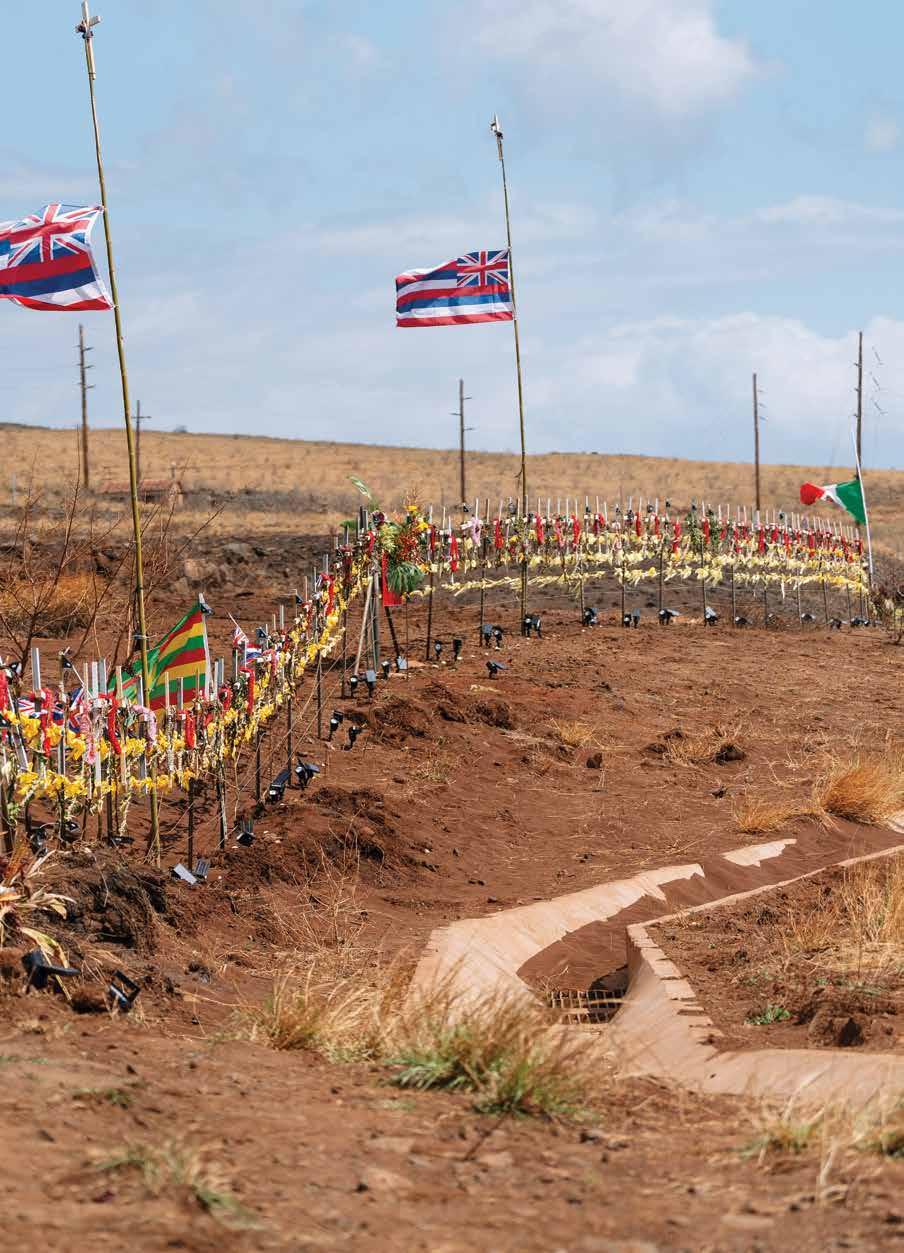
Ordinary Marvels
日常の中の驚き
文 = マーサ・チェング
写真 = ミシェル・ミシナ
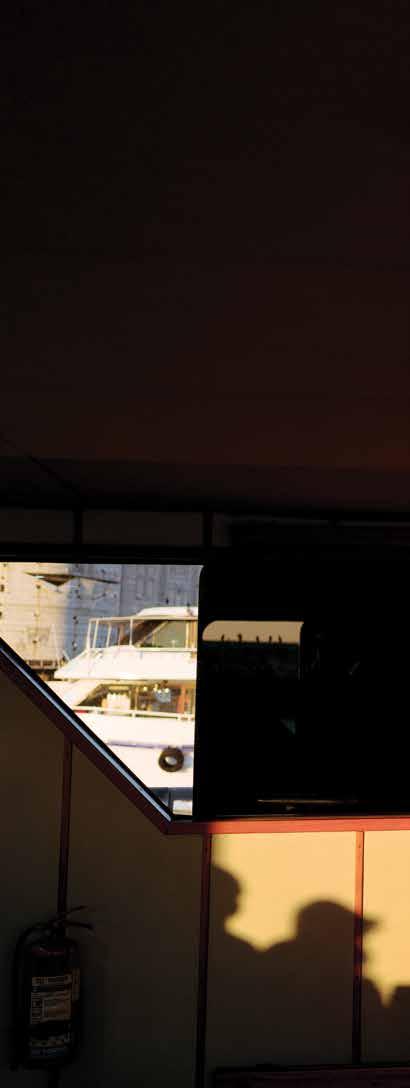
112
Text by Martha Cheng
E ESCAPES Istanbul
Images by Michelle Mishina
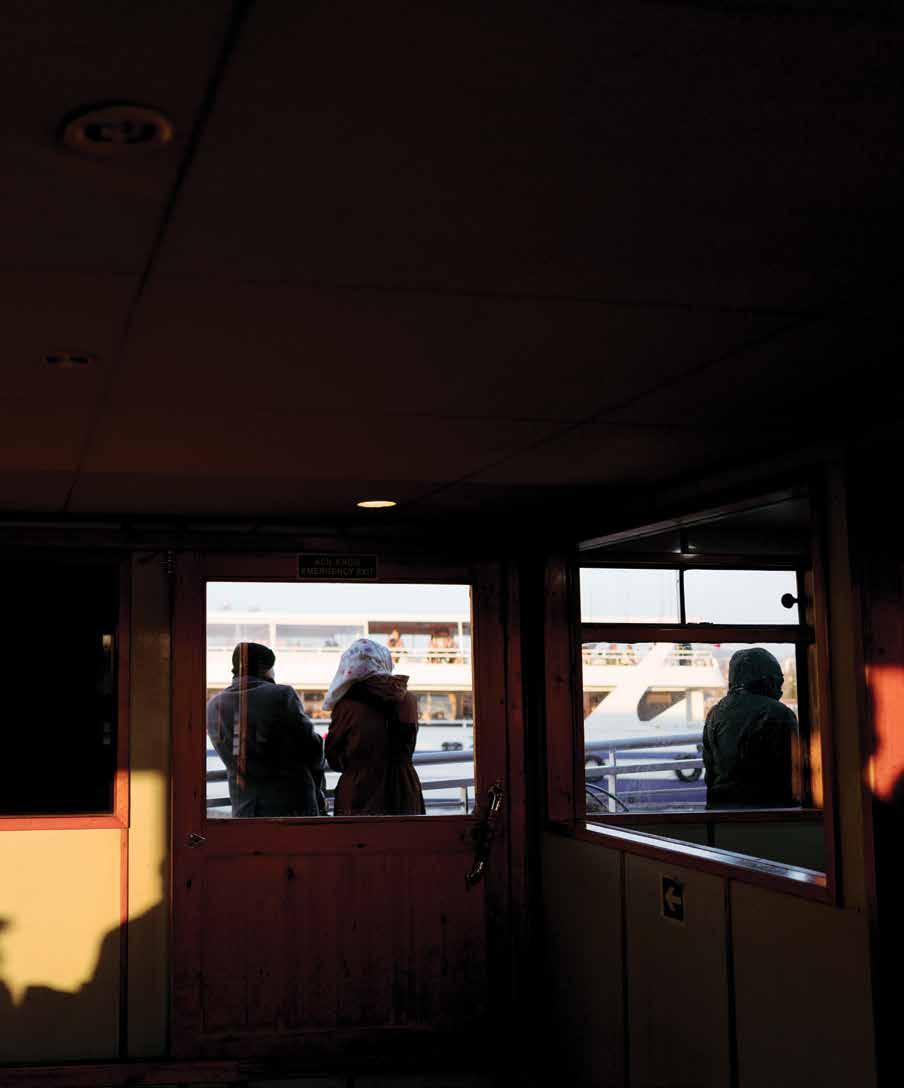
Eschewing the city’s grand sights, a writer revels in the everyday milieu of Istanbul.
荘厳な観光名所を抜け出して、イスタンブールで日常を 享受する旅
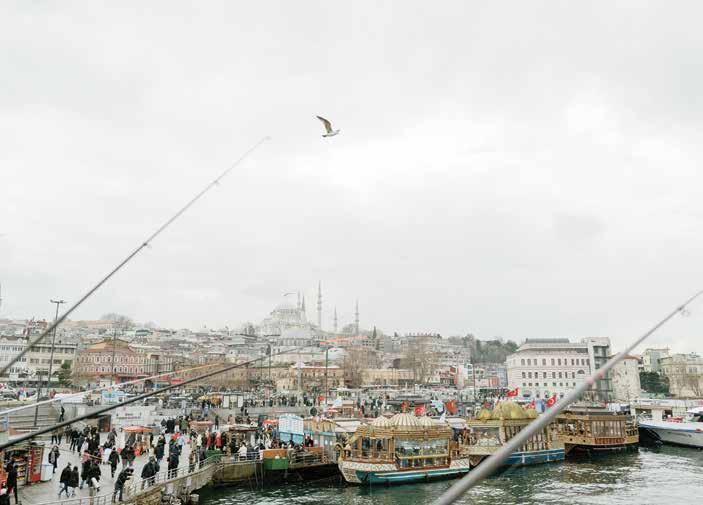
When given the choice, I like to arrive in a new city at night. In the darkness, the city offers itself to you in glimpses, doling out its charms in flickers of light, like a femme fatale’s entrance in a film noir. In Istanbul’s case, it was a glimpse of Taksim Square, slicked with rain, where I was initially deposited from the airport, then a wide lane lined with kebab shops, funneling into the narrow, labyrinthine streets of the hilltop Cihangir neighborhood. Before bed, a small taste of my surroundings: a meal of fat figs and tiny dumplings heaped with yogurt, seasoned with the anticipation of seeing a city that we were once thwarted from.
もしできるならば、見知らぬ街に到着するのは夜がいい。フィルム·ノワールの 謎めいた女性登場人物のファム·ファタールのように、暗闇の中、街はちらちら と光を放ちながらその魅力を垣間見せてくれるから。イスタンブールでは、それ は空港から最初にたどり着いた雨に濡れるタクシム広場だった。ケバブ屋の並 ぶ広い道が次第に狭くなり、迷路のような小道を進むと丘の上のジハンギル地 区に行き着く。就寝前に、よく熟したイチジクとヨーグルトをたっぷりかけた小 さな団子を食べ、ようやく訪れることのできた街への期待に胸を膨らませた。
数年前、私と友人はポルトガルとモロッコを巡る1か月の旅をし、帰途に イスタンブールに立ち寄ることにした。しかし、私たちが旅をしている間に起こ
114
Translation by Akiko Mori Ching 訳 = チング毛利明子
E ESCAPES Istanbul

A few years ago, a friend and I had booked flights to Istanbul as the culmination of a month-long trip through Portugal and Morocco. But at some point during our travels, the presidents of the U.S. and Turkey had a spat, and we were denied entry into Turkey when we attempted to board our plane from Paris to Istanbul. We’ll try again someday, we reassured ourselves. But then we had our own spat and falling out. The pandemic hit shortly after, and then she had a baby. Istanbul seemed to be on hold indefinitely. And then one day it wasn’t. She was to join me in the city later that evening.
In the early hours of dawn, when the adhan called and the darkness lifted, Istanbul revealed what we missed during our nocturnal arrival: the Bosphorus Strait in the distance, a city skyline pierced with the towering, slender minarets of Ottoman mosques. It was then we realized our plans extended no further than simply getting to Istanbul.
I’m embarrassed to admit that we didn’t see all the requisite sights. We lined up for the Hagia Sophia and briefly joined the hordes at the Grand Bazaar, but we mostly wandered the city’s streets, poking into modern boutiques and vintage shops, and spent hours in the luxury of uninterrupted conversation over expansive Turkish breakfasts, at baklava emporiums, at meyhanes where the servers apologized for tables that were available for “only” two hours. We fell into a stupor of post-pampered bliss at Cağaloğlu Hamam, one of the city’s most resplendent Turkish baths, built in 1741, where bathing attendants had guided us by the hand to a heated marble slab, lathered us in olive-oil soap, and washed our hair with linden shampoo. We relished the time capsule of 1924 Istanbul, a Russian restaurant established by émigrés that fled the Bolshevik revolution, dining on ice-cold lemon-infused vodka and beef stroganoff in an opulent room paneled with dark wood and mirrors.
A friend who has lived in Turkey for eight years shepherded us through her favorite places in Istanbul: Sehzade Erzurum Cag Kebabi, a kebab shop where skewered lamb is draped with lavash as diaphanous as a silk handkerchief, and Lezzet i Şark, which offers cheese-stuffed knafeh drenched in sugar syrup and prepared over coals. She took us on a ferry to the city’s Asian side, to Kadıköy market, before we escaped the rain into Wayana wine bar to sample Turkish wines made from native grapes. And then, with little room in our stomachs, we headed to Çiya Sofrasi, an unassuming
ったアメリカ大統領とトルコ大統領の諍いが原因となり、パリからイスタンブ ール行きの飛行機に搭乗しようとしたところ、アメリカ人である私たちはトルコ への入国を拒否されたのだ。私たちは、いつかまた一緒にトルコを訪れようと 自分たちに言い聞かせた。その後、今度は私たちが言い争いをしてしまい、疎 遠になってしまった。さらにはパンデミックが勃発し、友人は出産。イスタンブ ール行きは永遠に叶わないものかとも思われた。が、ある日、そうではなくなっ たのだ。その日の夜、私はイスタンブールで友人と合流することになっていた。
夜明けと共にイスタンブールの街にアザーン(礼拝への呼びかけ)の声 が響き、暗闇が姿を消すと、私たちが夜中に到着したときには見えなかったも のが見えてきた。遠くにボスポラス海峡を望み、オスマン帝国時代に建てられ たモスクの細長いミナレット(塔)が突き抜ける街のスカイライン。そのとき、私 たちの旅の目的は、ただイスタンブールに来ること、それ以外の何物でもなか ったことを実感したのだ。
実のところ、私たちは必見といわれる観光名所をすべて見て回ったわけ ではない。もちろんアヤソフィア見学の列に並んだり、グランドバザールの人の 群れに加わったりもするにはしたが、ほとんどは街の通りをぶらぶら歩き、流行 りのブティックやヴィンテージショップを覗いたりしていた。そして、トルコなら ではの充実した朝食を食べながら、バクラヴァ専門店で、また「2時間しか」テ ーブルが空いていないことを店員が詫びてくれるメイハネ(居酒屋)で、途切れ ることのないおしゃべりを楽しみながら贅沢な時間を過ごした。1741年に建 てられた、街で最も美しいトルコ式公衆浴場のひとつであるジャーロール·ハマ ムでは、係員が案内してくれた大理石の板の上でオリーブオイルの石鹸を泡立 てて身体を洗ってくれ、リンデンのシャンプーで髪を洗ってくれた。ハマムでさん ざん甘やかされた私たちは、その後ものんびりと至福の余韻に浸った。ボリシ ェヴィキ革命を逃れた移住者たちが開業したロシア料理レストランの濃い木 目の板と鏡のパネルで飾られた豪華な部屋で、氷で冷やしたレモン入りウォッ カとビーフストロガノフを堪能したときは、まるで1924年のイスタンブールに タイムスリップしたかのようだった。
トルコに8年住んでいる友人は、串刺しにしたラム肉をシルクのハン カチのように薄いラヴァシュで包んだケバブ屋「Sehzade Erzurum Cag Kebabi」や、チーズを詰めたクナーファを砂糖のシロップに浸して炭火で調理 する「Lezzet i Şark」など、イスタンブールのお気に入りの場所へ案内してく れた。フェリーに乗ってアジア側のカドゥキョイ市場へ行き、雨が降ってきたの でワインバー「Wayana」に入って地産のブドウから作られたトルコワインを試 飲した。その後、それほど空腹でもなかったが、「Ciya Sofrasi」に向かった。見 た目は控えめなレストランだが、Netflixの『シェフのテーブル』に出演したこと
116
E ESCAPES Istanbul

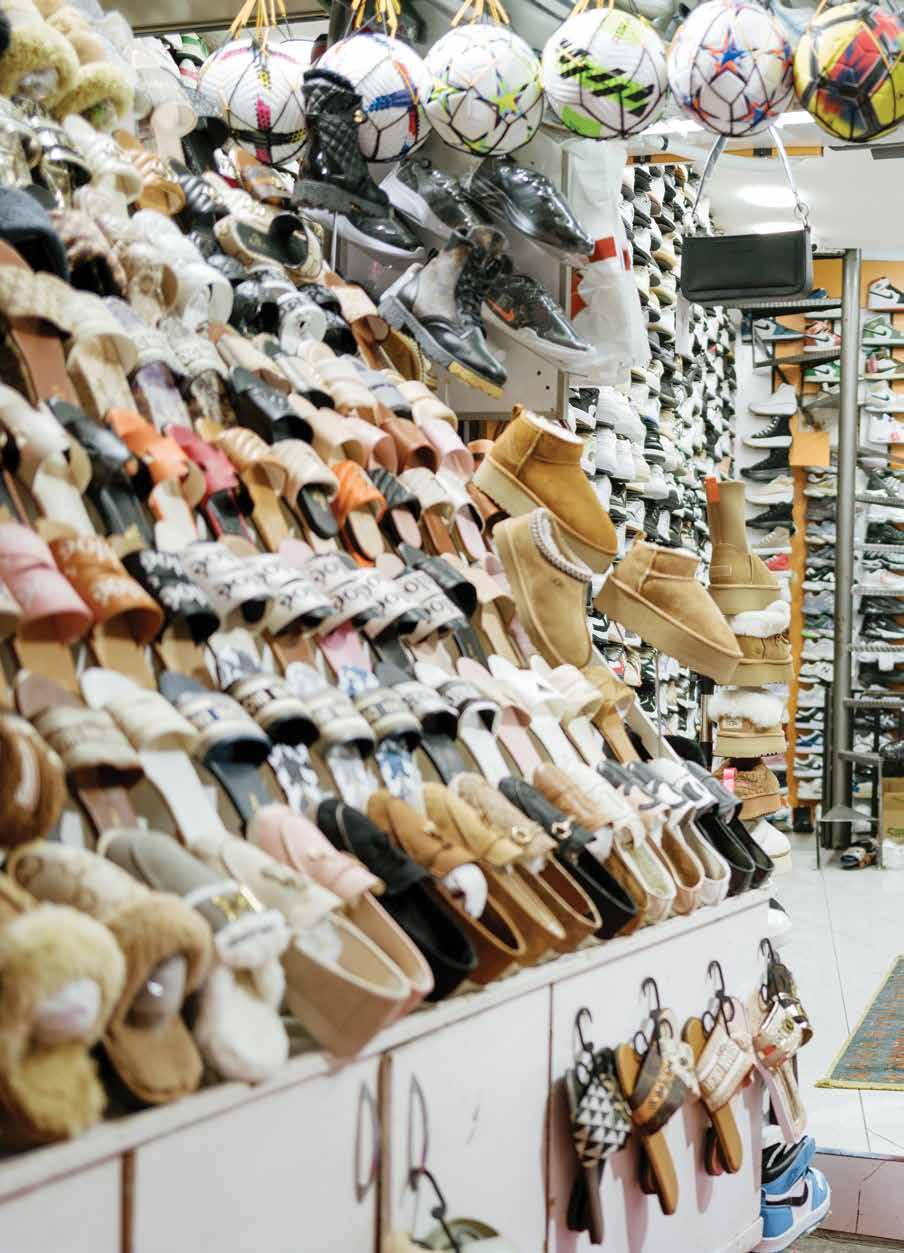
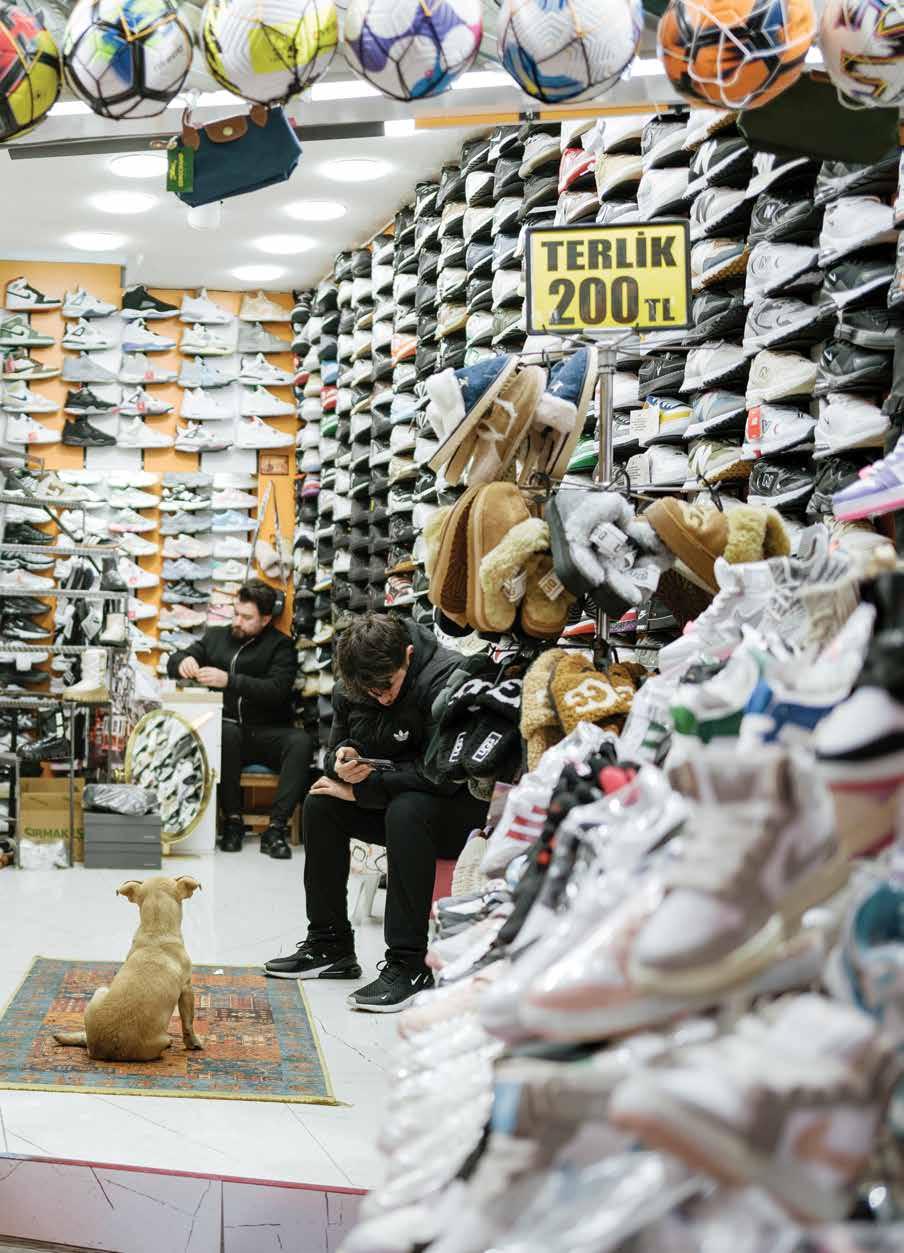

Istanbul reveals itself to the writer not through its famed destinations but in its quotidian corners.
restaurant where the proprietor—a past feature on Netflix’s Chef’s Table —is considered more of a culinary anthropologist than a chef for his efforts to preserve recipes in danger of disappearing. A counter filled with more than a dozen warm pots and trays offered up dishes like lamb stewed with quince and pomegranate juice, and stuffed sheep intestine, and, for dessert, crisp slices of candied pumpkin.
It is hard for me to make sense of my brief time in Istanbul—but perhaps with just a week, it is only possible to see the city in glimpses. It is, after all, a city spread across two continents; of a population almost twice that of New York City at 15 million people, more than a third of whom are migrants; and with a history that stretches back to the Byzantine era—the very origin of the term byzantine—but has seen rapid Westernization.
In this city, I saw men walk around with pinpricks of blood dotted across their scalps from hair transplants, and in a corner of an open-air market where pet food and pet pigeons are sold, I observed a woman haggle with a vendor for leeches to treat her ailments. There were the famously spoiled stray cats of Istanbul, napping on top of stacks of records,
もある店主は、消えゆくレシピの保存に尽力していることから、シェフでは なく料理人類学者と呼ばれている。温かい鍋やトレイでいっぱいのカウン ターには、カリンとザクロのジュースで煮込んだ子羊の料理や羊の腸詰め、 デザートのカボチャの砂糖漬けなどがずらりと並んでいた。
イスタンブールでの短い滞在の意味を理解するのは難しいが、わず か1週間の滞在では、この街をちらりと垣間見ることしかできないだろう。 なにしろイスタンブールは2つの大陸にまたがる都市で、人口はニューヨー クの2倍近い1500万人、その3分の1以上が移民である。「byzantine (『迷路のように入り組んだ』の意)」の語源でもある、ビザンチン時代の起 源にまでさかのぼる歴史を有しているが、急速な西洋化が進んでいるとい う一面もある。
この街で、植毛した頭皮に点々と血の跡をつけた男たちを見かけた り、ペットフードやペットの鳩が売られている青空市場の片隅で、病気を治 すヒルを求めて売り子と交渉する女性を見たりした。イスタンブール名物と でもいうべき甘やかされた野良猫たちが、山のように積まれたレコードの 上で昼寝をしたり、オートバイの座席の上で暖をとったり、ペットショップ の外に群がって餌を待っていたりするのも眺めた。トルコの有名な作家オ ルハン·パムクが自身の同名小説と連動して構想した、「無垢の博物館」
120
E ESCAPES Istanbul

Among Istanbul’s many historical sites is the Hagia
a former church and mosque completed in AD
Sophia,
537.
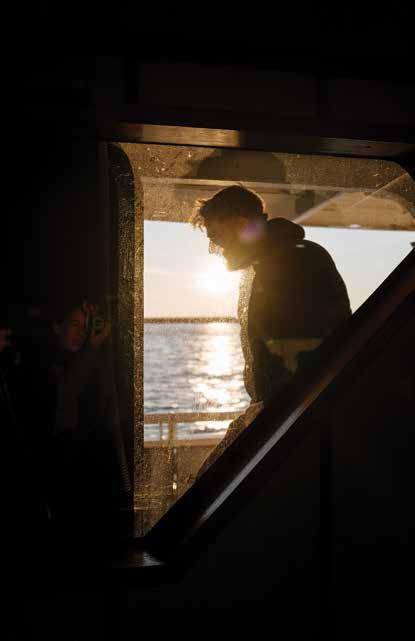
warming themselves on the seat of a motorbike, crowding outside of a pet store, waiting to be fed. There was the Museum of Innocence, which Turkey’s famous writer Orhan Pamuk conceived in concert with his novel of the same name—each exhibit corresponding with a chapter in the book. Before the entrance is Pamuk’s museum manifesto, attesting that “the ordinary, everyday stories of individuals are richer, more humane, and much more joyful” than “historical narratives of a society.”
And maybe this is why I don’t feel so guilty for eschewing the monuments for long conversations with my friend in quotidian spaces, for picking up where we left off in our travels and lives much altered. There was only one landmark that we spent hours with—the Bosphorus Strait. The public ferry took us along its path to the Black Sea, languorously passing historical mosques and palaces. The water had a way of calming the frenzy of the city, reminding us that it has outlasted all of the buildings, the empires that erected them, the lives within and those yet to come.
(それぞれの展示は小説の各章に対応している)の入口の前には、「社会の歴 史的な物語」よりも「個人の平凡で日常的な物語の方が豊かで、人間的で、ずっ と楽しい」という、パムクの博物館へのマニフェストが掲げられていた。
そして、多分これが、お互いの旅と生活が大きく変化して失った時間を取 り戻すために、有名な観光地を避け、ありふれた空間で友人と長い会話を交わ すばかりだったことに、それほど罪悪感をおぼえなかった理由なのかもしれな い。私たちが何時間も一緒に過ごした名所は、ボスポラス海峡だけだった。歴 史的なモスクや宮殿をのんびりと通り過ぎながら、公共フェリーに乗って黒海 へと向かった。その水は街の熱狂を鎮め、数々の建物やそれらを建てた帝国、 その中にある生活、そしてまだ来ぬ人々のすべてを包むように永らえているの だと、今一度私たちに思い出させてくれたのだった。
122
E ESCAPES Istanbul

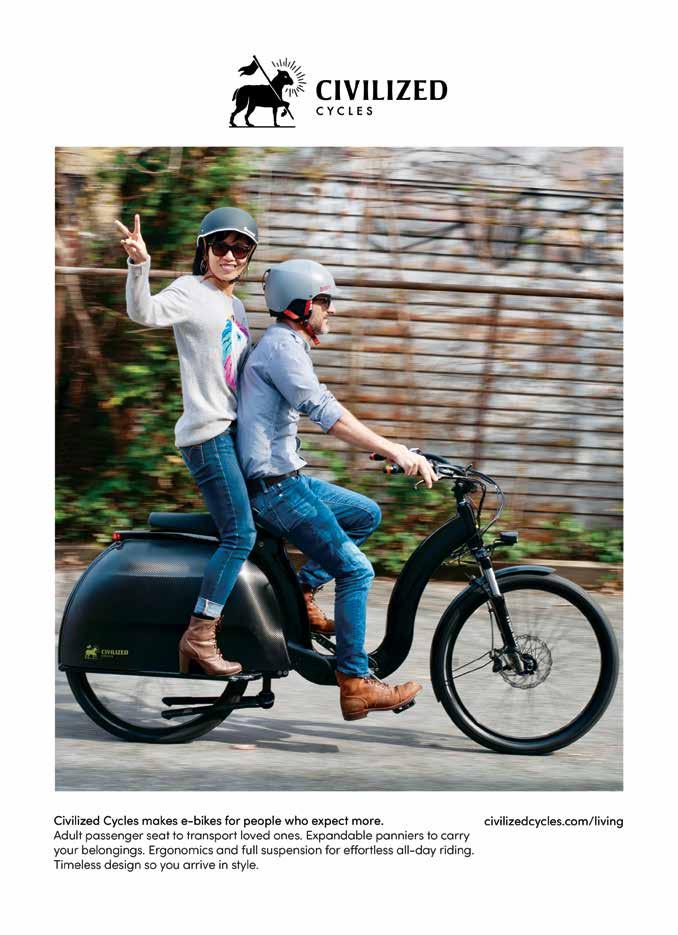
Civilized Cycles makes e-bikes for people who expect more. civilizedcycles.com Timeless design so you arrive in style.
FA RE
Culinary delights and 食 F
delectable hidden
gems
125
F
Leading Ladies
業界を率いる女性たち 文 = サラ·バーチャード
Text by Sarah Burchard
by Sean Marrs and IJfke Ridgley
写真 = ショーン·マース、アイフク·リッジリー
126
F FARE Chefs
Images
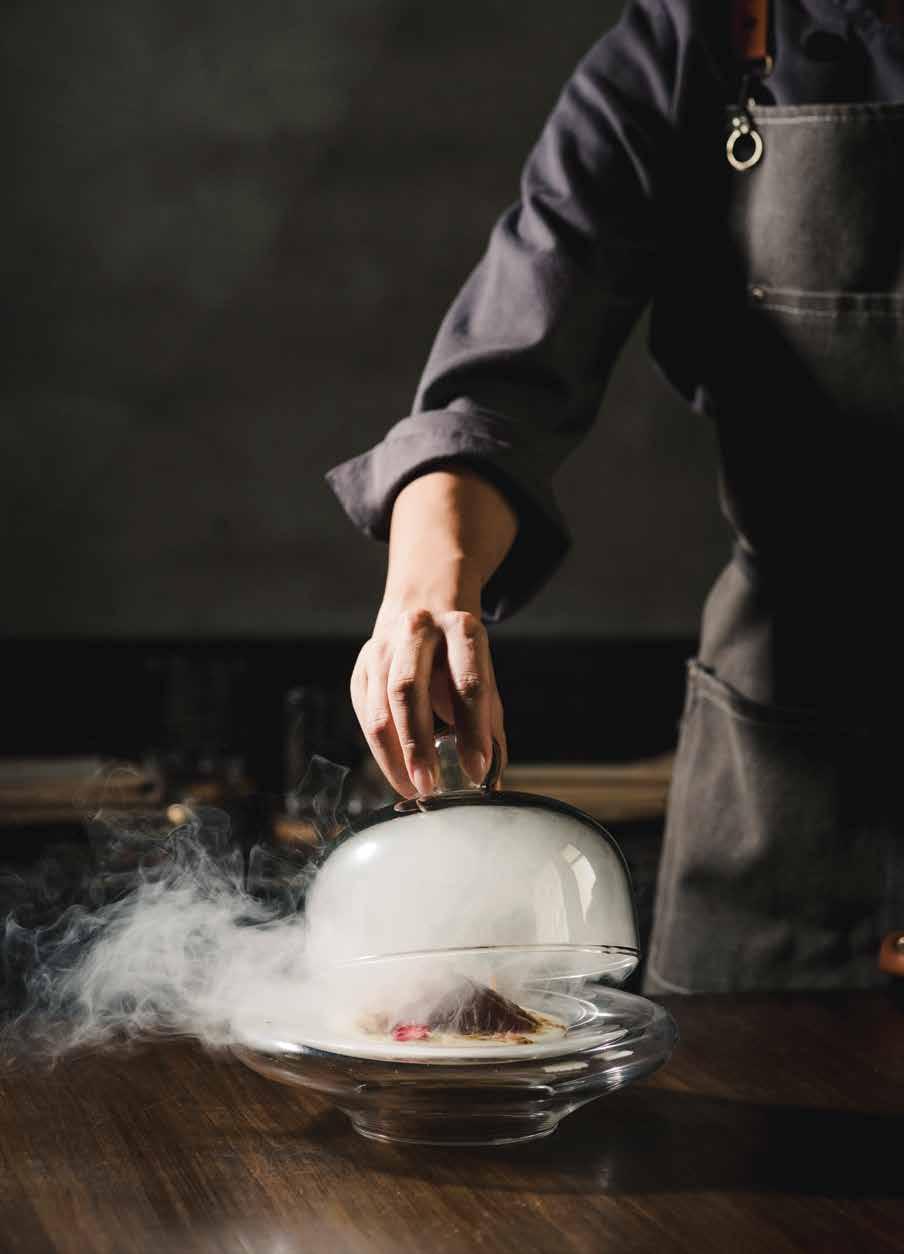
In an industry long dominated by men, these chefs have made a name for themselves in Hawai‘i’s culinary scene.
長きにわたり男性が中心だったハワイの料理界で頭角を現す 女性シェフの横顔
Translation by Akiko Mori Ching 訳 = チング毛利明子
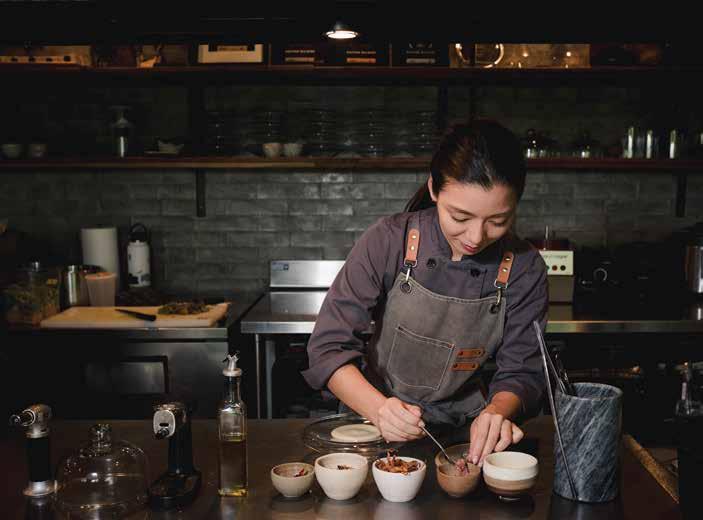
Tokyo native Nae Ogawa grew up around a family dinner table supplied with fresh fish her dad caught and produce her mom grew and foraged. Eventually, Ogawa began adding her own touches, picking wild mushrooms and chestnuts or making umeboshi with plums from their tree. It soon grew into a love of cooking that would later thrust Ogawa into Tokyo’s world-class kitchens. At 18, she began studying at Tokyo’s Hattori Nutrition College, among the top culinary schools in Japan. The college’s emphasis on shokuiku, a holistic approach to whole foods pioneered by
小川苗
東京生まれの小川苗は、父親が釣ってきた新鮮な魚や、母親が育てたり採って きたりした野菜が豊かに食卓を彩る家庭で育った。やがて小川は、自分自身で も、野生のキノコを採ったり、栗を拾ったり、自宅で実った梅の実で梅干を作っ たりするようになった。このような環境で育った彼女の料理への情熱は高まる ばかりとなり、後に東京の一流レストランの厨房に立つことになる。18歳にな った小川は、日本のトップクラスの料理学校の一つである東京の服部栄養専 門学校で学び始めた。同校は日本の医師が提唱した、全食品に対するホリステ
128
Nae Ogawa
F FARE Chefs

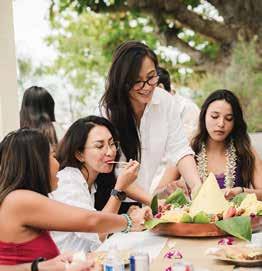
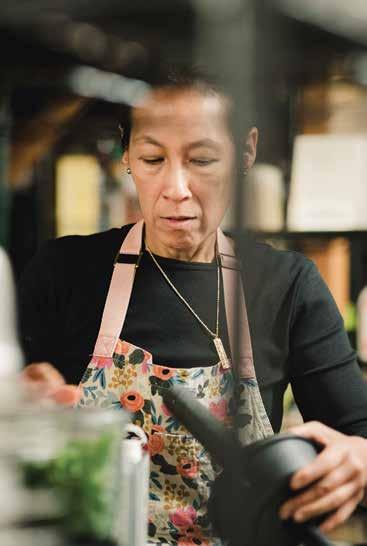 Clockwise from top right is the dining room at Nature Waikiki, Robynne Mai‘i of Fête, and private chef Regina Lapian.
Clockwise from top right is the dining room at Nature Waikiki, Robynne Mai‘i of Fête, and private chef Regina Lapian.
a Japanese doctor, meant that students were trained as both chefs and nutritionists. It left a lasting impression on Ogawa, who went on to work at Narisawa, a two-star Michelin restaurant in Tokyo with a focus on sustainable dishes; Manhattan’s upscale restaurant Bouley, whose approach to French nouvelle cuisine helped usher in the farm-to-table movement; and La Bourse et La Vie, a Parisian bistro known for French classics made with fresh, quality ingredients.
In 2017, she moved to Honolulu to become the opening sous chef at Paris Hawaii, which blended Parisian, Japanese, and Hawai‘i cuisine. The restaurant shuttered in 2020—a casualty of the pandemic but a blessing for Ogawa, who was soon tapped by Zetton Inc., the restaurant group that launched Paris Hawaii, to lead a new enterprise in the former restaurant’s Waikīkī space. At first, Ogawa had her doubts. “I was super good at [being a] sous chef, supporting somebody, and I was happy with it,” she says. But Zetton presented an offer she couldn’t refuse. As the new executive chef, she had carte blanche to reconceptualize the restaurant and create her own dishes.
Enter Nature Waikiki, whose menu reflects Ogawa’s Japanese upbringing, French culinary training, and love for nature. Each dish highlights at least one ingredient from local farms: a cheese platter features chèvre from Sweet Land Farm in Waialua; the harvest salad’s medley of root vegetables is grown at Kahumana Organic Farms in Wai‘anae. And she utilizes invasive animals such as ta‘ape (blue striped snapper) and axis deer in efforts to mitigate their negative impacts on the local ecosystem and demonstrate to guests how their food choices directly impact the environment. As she crafts new dishes, including a tasting menu that changes with the seasons, Ogawa routinely turns to nature for inspiration: “When I feel that the ingredients I choose have a positive impact on farmers or the environment, I feel a sense of fulfillment in what I do, and it motivates me.”
Regina Lapian
Upon putting down roots on O‘ahu in 2002, Regina Lapian realized she missed the foods of her hometown of Jakarta. Seeking out key Indonesian ingredients such as pandan and mangoes, she set to work on a word-ofmouth catering business anchored by recipes Lapian learned from her mother, a talented cook who owned a pub in Jakarta for 32 years. As she built up her
ィックなアプローチ「食育」に重きを置いており、学生たちは調理師だけでなく 栄養士になるためにも学んでいた。それに大きな影響を受けた小川は、サステ ナブルな料理に焦点を当てたミシュラン2つ星レストラン「Narisawa (ナリサワ)」、フレンチ·ヌーベルキュイジーヌの手法でファーム·トゥ·テーブル (農場から食卓へ)·ムーブメントの先駆けとなったマンハッタンの高級レスト ラン「Bouley(ブーレイ)」、新鮮で質の高い食材を用いたフレンチ·クラシック で知られるパリのビストロ「La Bourse et La Vie(ラ·ブルス·エ·ラ·ヴィ)」など の名店で経験を積んだ。
2017年、小川はホノルルに移り、パリの味と日本料理そしてハワイの料 理を融合させた「Paris. Hawaii(パリ、ハワイ)」の開店に際して、スーシェフに 就任した。このレストランは、コロナ禍の犠牲となり、2020年に閉店したのだ が、それが小川にとってはチャンスとなった。「パリ、ハワイ」を立ち上げたレスト ラングループ、株式会社ゼットンからワイキキの同レストランがあった場所で新 たな事業を立ち上げるようにと打診されたのだ。当初、小川は疑念を抱いてい た。「私はスーシェフとして誰かをサポートするのが得意で、それで満足してい ました」と言う。しかし、ゼットンからの申し出は断ることができないほど魅力的 なものだった。それは、新しいエグゼクティブ·シェフとして、レストランのコンセ プトを再構築し、独自の料理を創作する全権を与えるというものだったのだ。
「ナチュール·ワイキキ」のメニューには、小川の日本人としての生い立 ち、フランス料理を学んだ経験、そして自然への愛がたっぷりと注ぎ込まれて いる。チーズの盛り合わせにはワイアルアにあるスイート·ランド·ファームのシ ェーブルチーズ、ハーベスト·サラダにはワイアナエのカフマナ·オーガニック·フ ァームで栽培された根菜など、それぞれの料理には少なくとも1種の地産食材 を用いている。彼女はまた、地元の生態系への悪影響を軽減し、食の選択が環 境に直接影響を与えることを示すために、タアペ(ヨシズフエダイ)やアクシス ジカといった外来動物を食材として使用している。季節ごとに変わるテイステ ィングメニューなど、新しい料理を作るとき、小川はインスピレーションを得る ために自然に目を向ける。「自分が選んだ食材が農家や環境に良い影響を与 えていると感じると、自分の仕事にやりがいを感じ、モチベーションが上がる」 のだと言う。
レジーナ·ラピアン
2002年にオアフ島に根を下ろしたレジーナ·ラピアンは、故郷ジャカルタの料 理を恋しく思っていた。パンダンやマンゴーといったインドネシアの主要食材 を探し求め、母親から教わったレシピを思い出しながら料理した。ラピアンの
130
F FARE Chefs
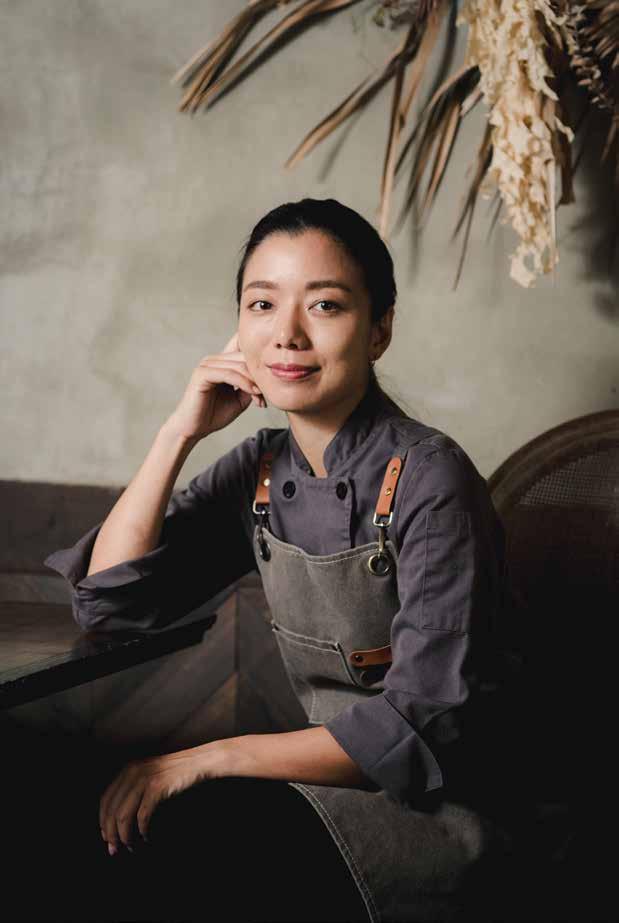
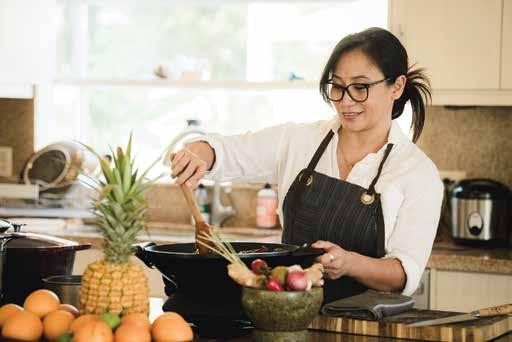
“It’s so sad to see no Indonesian restaurant here,” says Jakarta native Regina Lapian, who longs to one day expand her Hawai’i catering business into a brick-and-mortar Indonesian eatery.
private chef clientele, Lapian met Maya Soetoro-Ng, the maternal half-sister of former president Barack Obama. Soetoro-Ng, who works as a peace and leadership scholar at the University of Hawai‘i at Mānoa’s Matsunaga Institute, was born in Jakarta and found the tastes of her heritage reflected in Lapian’s cooking. With its colorful dishes full of spices and fresh ingredients, Lapian’s classic Indonesian fare, including dishes such as beef rendang, gado gado, nasi goreng, and pandan klepon, summoned authentic Jakarta cuisine to Hawai‘i.
Soetoro-Ng soon became like a sister to Lapian, and today Soetoro-Ng remains one of her biggest supporters. Through the years, she has arranged for Lapian to cater some of the Obamas’ more high-profile Hawai‘i engagements, including Michelle Obama’s birthday at the Shangri La Museum of Islamic Art, Culture & Design in 2022 and the 2018 Obama Foundation conference at the East-West Center, where Lapian’s dishes were served alongside local restaurant titans Alan Wong, Ed Kenney, and Andrew Le. Lapian also regularly caters events for the Matsunaga Institute, Soetoro-Ng’s Ceeds of Peace organization, and visiting Indonesian dignitaries. Still, Lapian never forgets her origins: “I feel like cooking for a good cause helps me give back to our community and connect to good people.”
母はジャカルタで32年間もパブを経営していた有能な料理人だったのだ。そ して母親のレシピを元に、ケータリング·ビジネスを始めると、口コミで大きな 評判となった。プライベート·シェフとして顧客を増やしていくうちに、ラピアン はバラク·オバマ前大統領の異父妹で、ジャカルタ生まれのマヤ·ストロ=イン グと知り合う。ハワイ大学マツナガ研究所で平和とリーダーシップの研究者と して働くストロ=イングは、ラピアンの料理には故郷の伝統の味が色濃く反映 されていることに気づいた。香辛料と新鮮な食材をふんだんに使った色鮮やか なラピアンの料理は、ビーフ·レンダン、ガドガド、ナシゴレン、パンダン·クレポン など、伝統的なインドネシア料理であり、ハワイに本場ジャカルタの味をもたら したのだった。
ストロ=イングはすぐにラピアンと姉妹のように親しくなり、今日でも彼 女はラピアンの最大の支援者の一人である。2022年にシャングリラ·イスラム 芸術文化デザイン美術館で開催されたミシェル·オバマの誕生日会など、オバ マ家のハワイでのイベントでは、ラピアンはケータリングを担当するようになっ た。2018年にハワイ大学内の東西センターで催されたオバマ財団の会議で は、ハワイのレストラン界の重鎮であるアラン·ウォン、エド·ケニー、アンドリュ ー·レらの料理と並んでラピアンの料理が供された。また、ラピアンはマツナガ 研究所やストロ=イングが発起人である団体「シード·オブ·ピース」、さらには インドネシアから訪れる要人たちのイベントでもケータリングを手がけている。 それにもかかわらず、自分の原点を忘れないラピアン。「大義のために料理をす ることで、コミュニティに恩返しができ、素晴らしい人々とつながることができる と感じています」と述べている。
132
F FARE Chefs
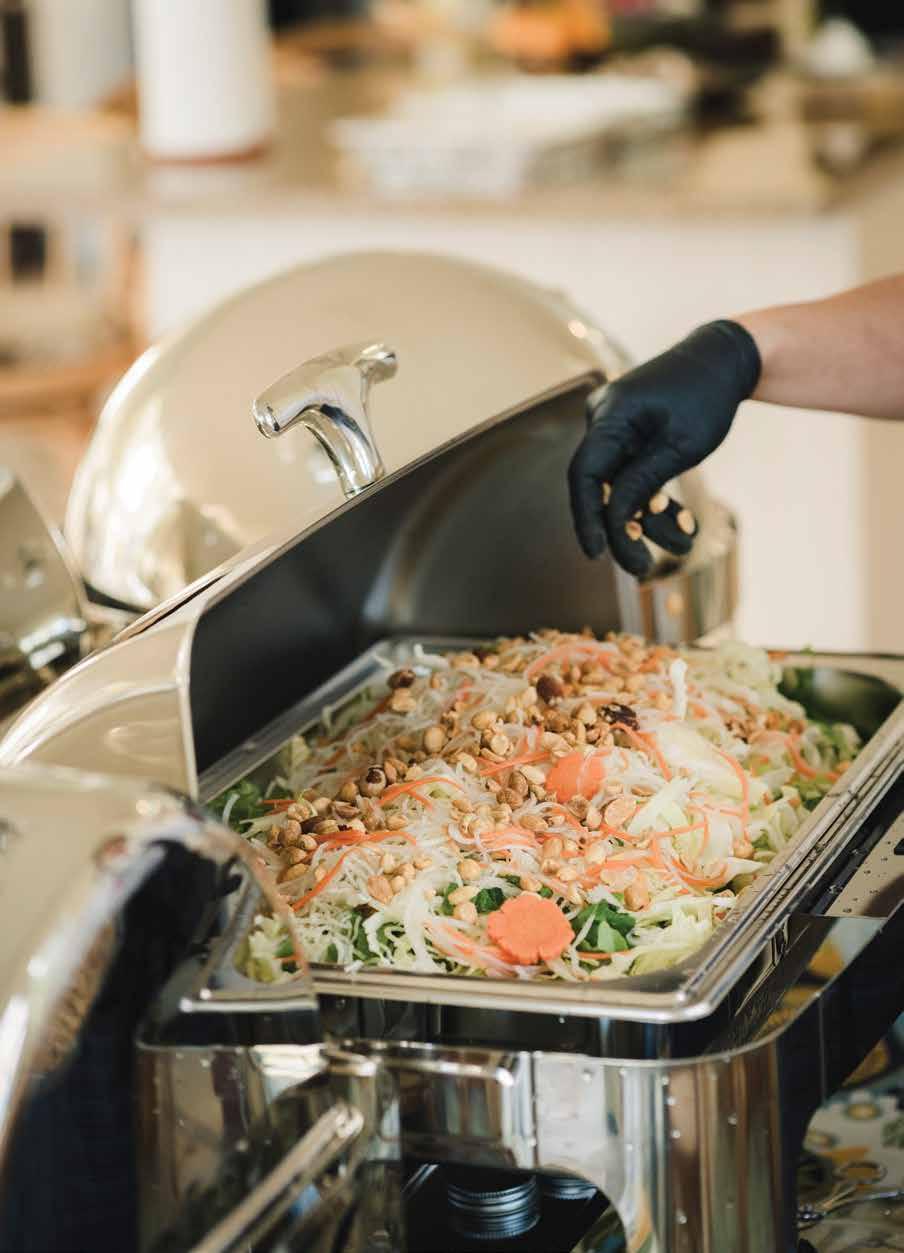
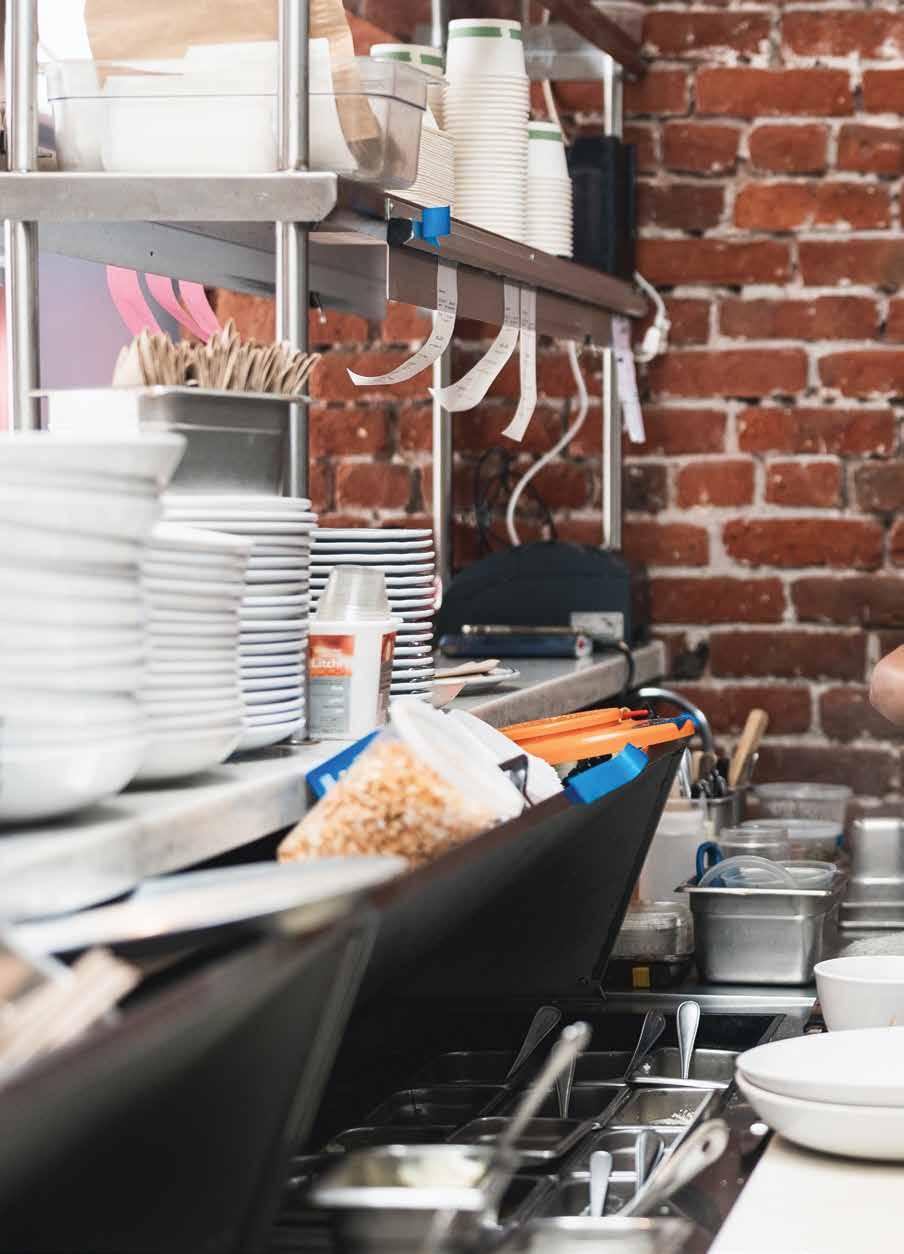
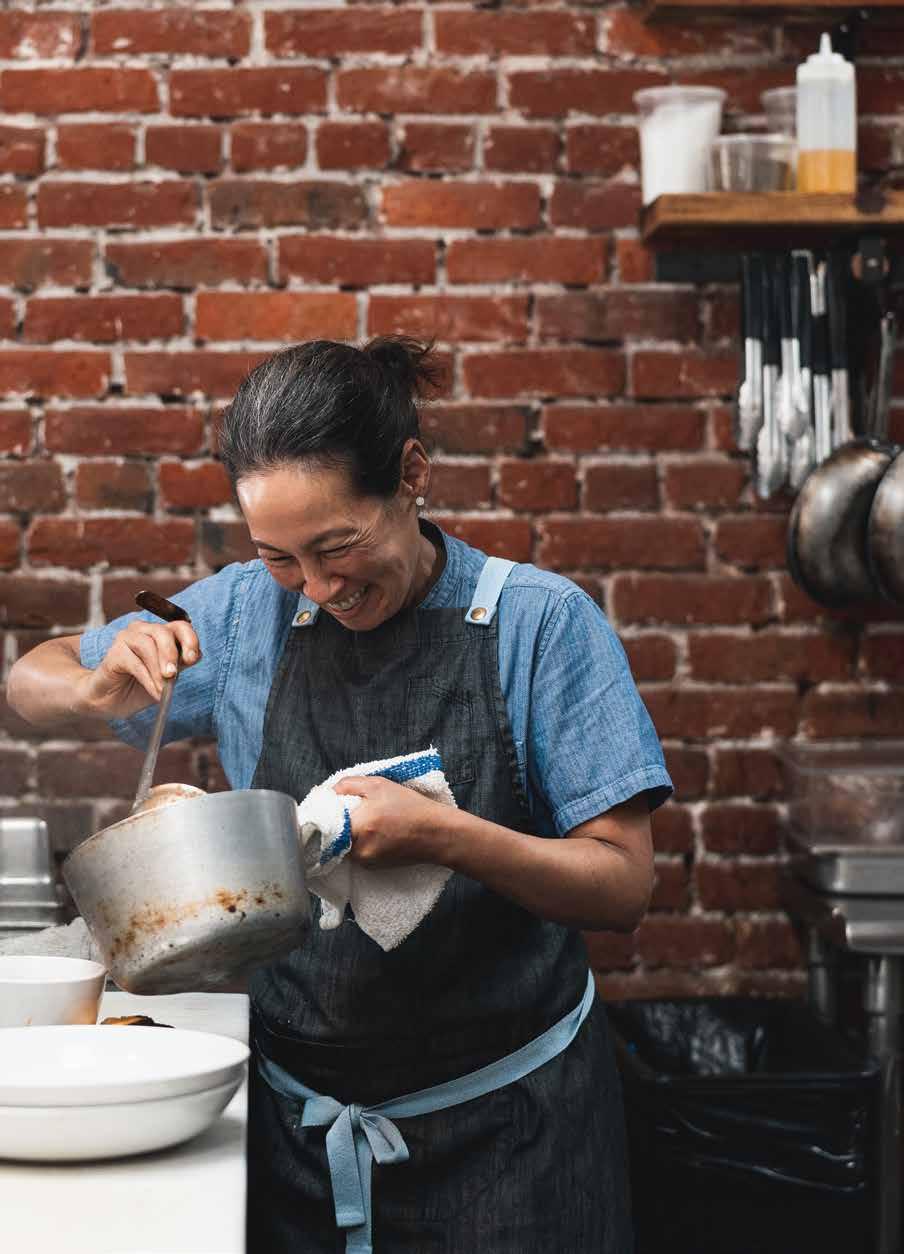
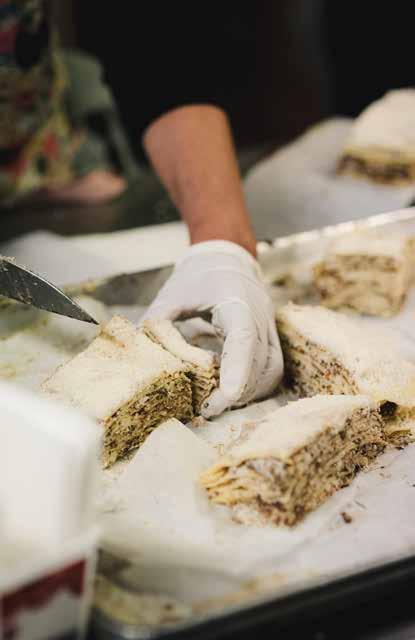 Robynne Mai‘i
Robynne Mai‘i
When Fête chef and co-owner Robynne Mai‘i won the 2022 James Beard Award for Best Chef in the Northwest and Pacific, the first Native Hawaiian female chef to receive the honor, the timing could not have been better. The pandemic had hit Hawai‘i’s food industry hard and almost shuttered the restaurant, a fixture of Honolulu’s Chinatown since 2016. The award brought worldly acclaim to Fête, drawing in a new crowd of acolytes.
The road to success, however, wasn’t an easy one. Despite an impressive résumé that includes cooking at famed restaurants, working as an assistant food editor for Gourmet magazine, and co-running the culinary program at the Art Institute of New York City, Mai‘i still faced sexism when she moved back home to Hawai‘i from New York to open Fête. “For the first three years, it was constant,” she says. “When you’re female and little and Asian, people make a lot of assumptions.”
Undeterred, Mai‘i pressed on. After all, Fête had become her life’s purpose. After years of struggling with infertility, she and her husband and co-owner, Chuck Bussler, decided to instead birth a restaurant in Mai‘i’s hometown of Honolulu. Today, Fête—which Mai‘i and Bussler fondly call their hapa baby—has become a local culinary institution celebrated for its seasonal, farm-to-table approach. The vast majority of Fête’s menu
ロビン·マイイ
レストラン「Fête(フェテ)」のシェフで共同経営者でもあるロビン·マイイは、米 国料理界のアカデミー賞と称されるジェームス·ビアード賞の2022年度北西 太平洋地区最優秀シェフ賞を受賞した。先住ハワイアンの血を引く女性シェフ としては初めてのことであり、最高のタイミングでの受賞だった。コロナ禍はハ ワイのレストラン業界を直撃し、2016年以来ホノルルのチャイナタウンで人々 に愛されてきたフェテも閉店寸前にまで追い込まれていたのだ。が、この受賞 により、同店には世界的な称賛と新たなファンがもたらされた。
しかし彼女にとって、成功への道は決して平坦なものではなかった。有 名レストランで腕を振るい、『グルメ』誌のアシスタント·フード·エディターとして も活躍、ニューヨークのアート·インスティテュートでの料理プログラムの共同 運営など華々しい経歴を有していたにもかかわらず、フェテをオープンするため にニューヨークからハワイに戻ったとき、マイイは性差別に直面したのだという。 「最初の3年間は常にそうでした。女性で小柄でアジア系だと、人々はさまざ まな先入観を抱いてしまうようですね」と、述懐する。
それでもマイイは前に進んだ。なにしろ、フェテは彼女の生きる目的だっ たのだから。何年も不妊治療に苦しんだ後、彼女は夫で共同経営者のチャッ ク·バスラーとともに、マイイの故郷ホノルルでレストランを誕生させることを決 意した。現在、マイイとバスラーが愛情を込めて「ハパ·ベイビー」と呼ぶフェテ は、旬の食材を使い、地産地消を目指し、地元料理の名店となった。そのメニュ
136
F FARE Chefs

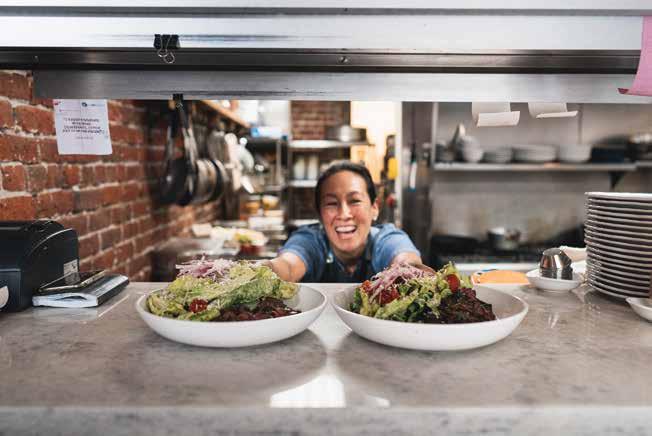
is sourced from farms, fisheries, and ranches across the state, an ethos of mutual support borne from Mai‘i’s years of being underestimated as a female chef. “You have the easy part,” she constantly reminds herself. “The hard part of the gig is done already.”
Now, two years after winning the James Beard Award, Mai‘i is ready to hand the reins to new executive chef Emily Iguchi and shift her focus to opening a second Chinatown location: a bakery and pastry shop in the former Little Village Noodle House space around the corner from Fête. Because in the end, even with all her newfound acclaim, the simple act of cooking is still what brings Mai‘i the greatest sense of fulfillment. “I really like the physicality and challenge of working with the food every single day,” she says. “It’s like yoga or being outside in nature—working with local ingredients is very close to that. It’s sort of like a wakeful meditation.”
ーのほとんどには、州内の農場や漁場そして牧場から仕入れた食材が使用さ れている。これは、マイイが女性シェフとして過小評価されてきた長年の経験の 中で、互いに支援することの大切さを学んだことによるものだ。「私が受け持つ のは楽な部分なのよ。この仕事の大変な部分はすでに終わっているのだから」 と、常に自分に言い聞かせているのだという。
ジェームス·ビアード賞を受賞してから2年経った今、マイイは新しいエグ ゼクティブ·シェフのエミリー·イグチにレストランを託す。そして、フェテのすぐ近 く、以前リトルヴィレッジ·ヌードルハウスがあった場所に、チャイナタウンで2軒 目の店となるベーカリー&ペイストリーショップをオープンすることに尽力して いる。新たな称賛を得たとはいうものの、結局のところ、料理というシンプルな 行為こそがマイイに最大の充実感をもたらしてくれるからだ。「毎日料理と向き 合うという、体を張ったチャレンジが本当に好きなのです。地元の食材を使うこ とは、ヨガや自然の中で過ごすようなもの。いわば目覚めの瞑想のようなものな のです」と、語っている。
138
Fête co-owner Robynne Mai‘i was the first Native Hawaiian female chef to be honored with a James Beard Award.
F FARE Chefs

Boeing 747-400 Nose Loader service and Ad Hoc charters on demand. Connecting LAX and HNL daily with daily connections to Neighbor Islands and weekly service to Pago Pago and Guam.
For more information, a free quote or to book online visit pacificaircargo.com or call 808.427.1235 AIR FREIGHT SPECIALISTS
THE PACIFIC
CHARTERS ACROSS
Luxury Redefined
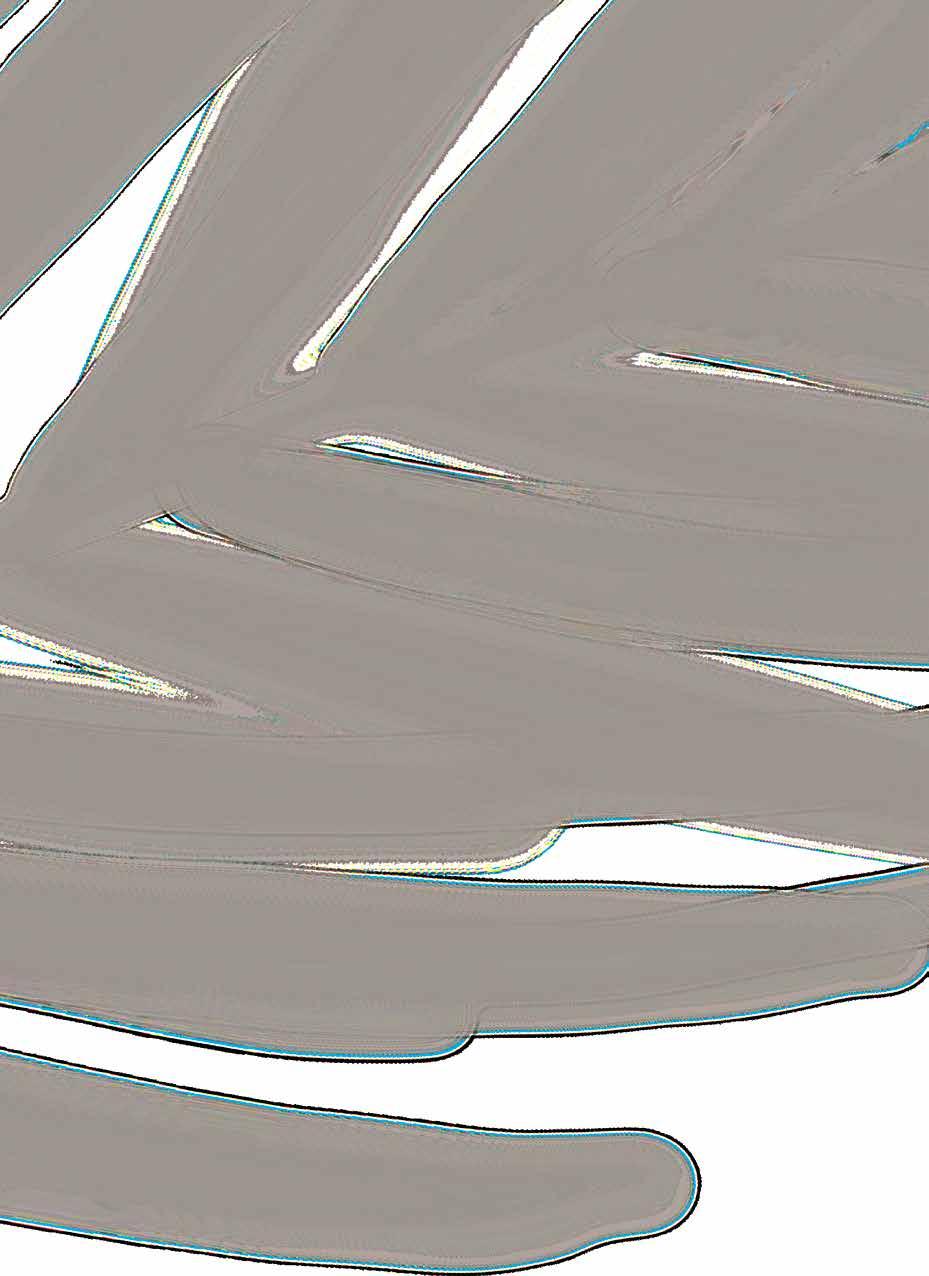
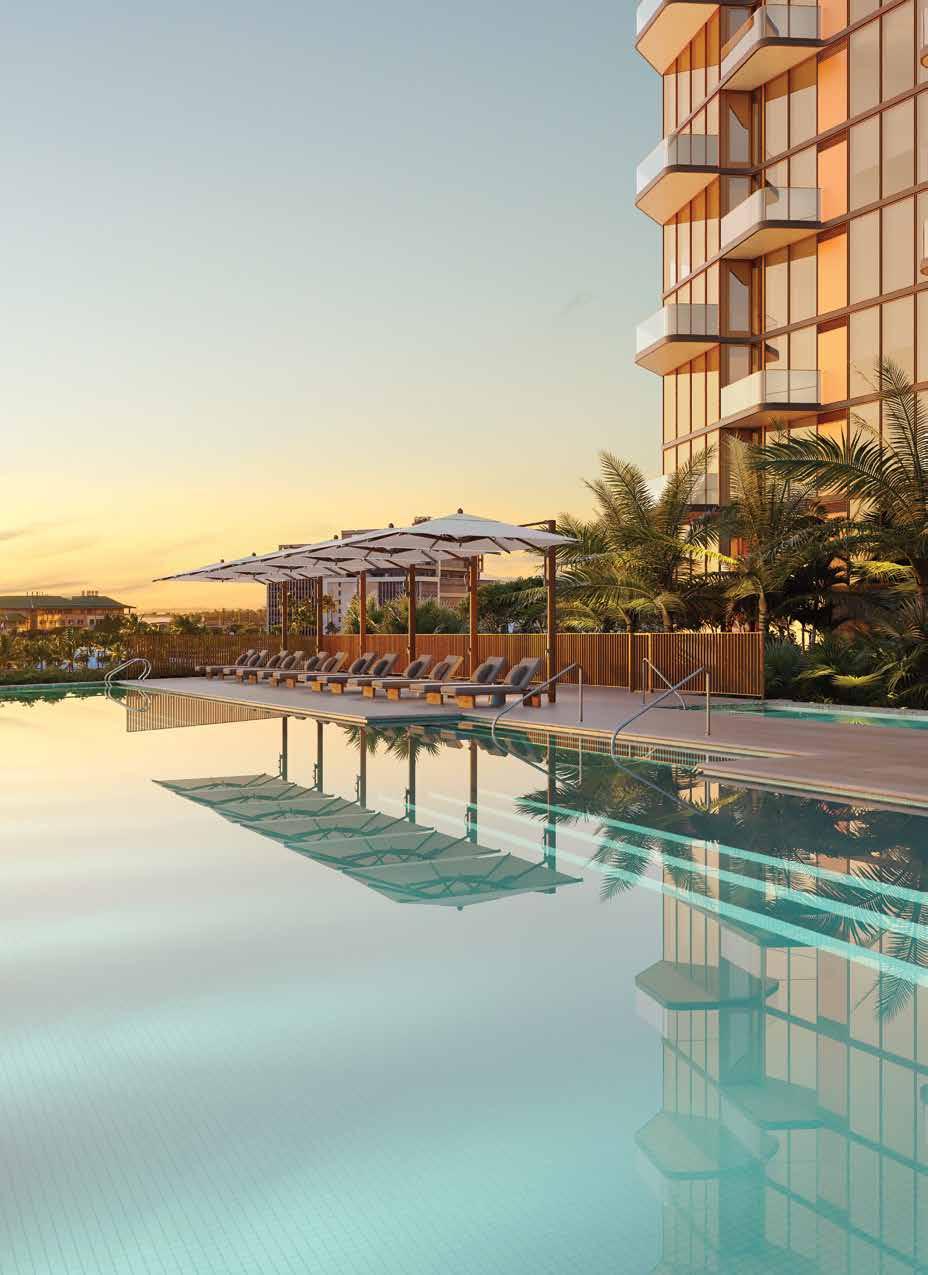
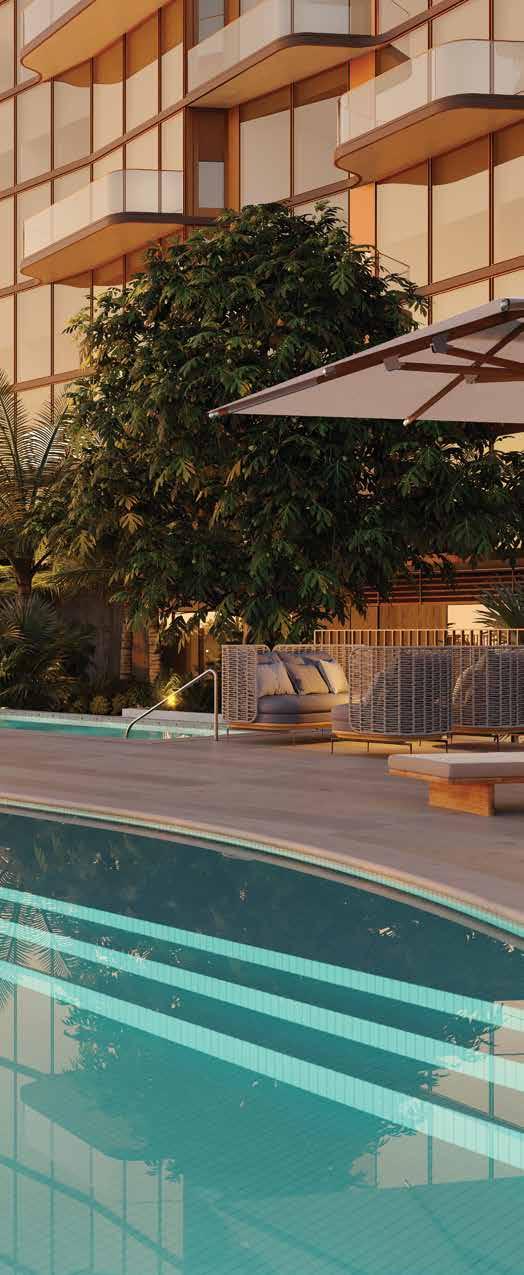
Discover a World of Possibilities

Envisioned to enhance the daily lives of residents, Ālia’s dynamic design, curated amenities, and premier location tastefully align to create an unparalleled living experience.
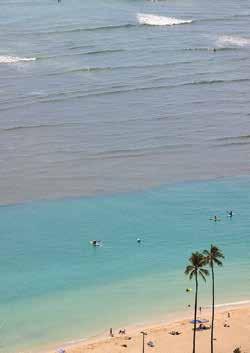

Naturally at Home
We believe that true luxury isn’t found in objects, but in the freedom of choice. It’s about nurturing your health, reconnecting with what’s important, and discovering that the life you’ve always dreamed of is within reach.
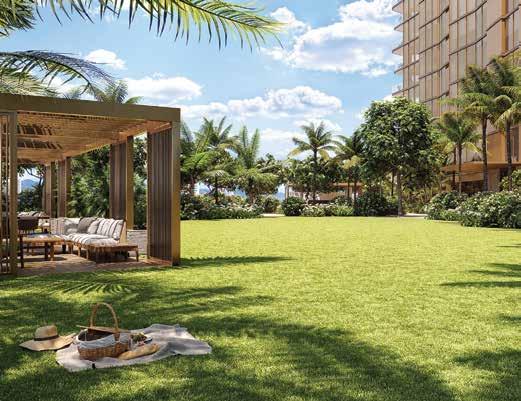
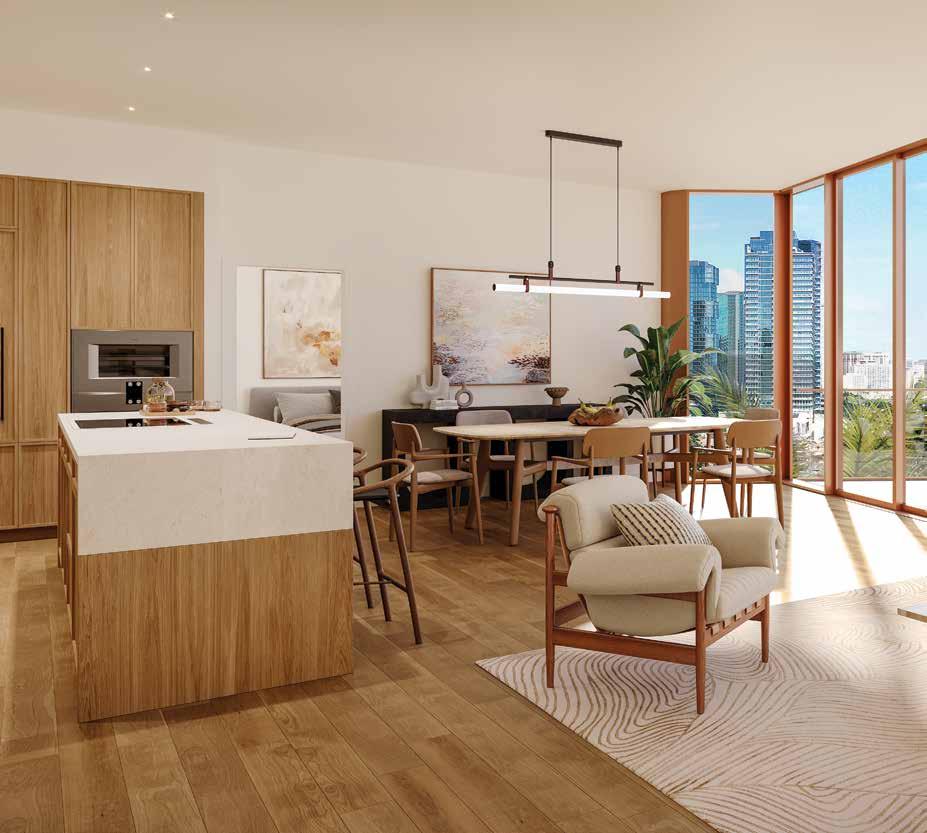
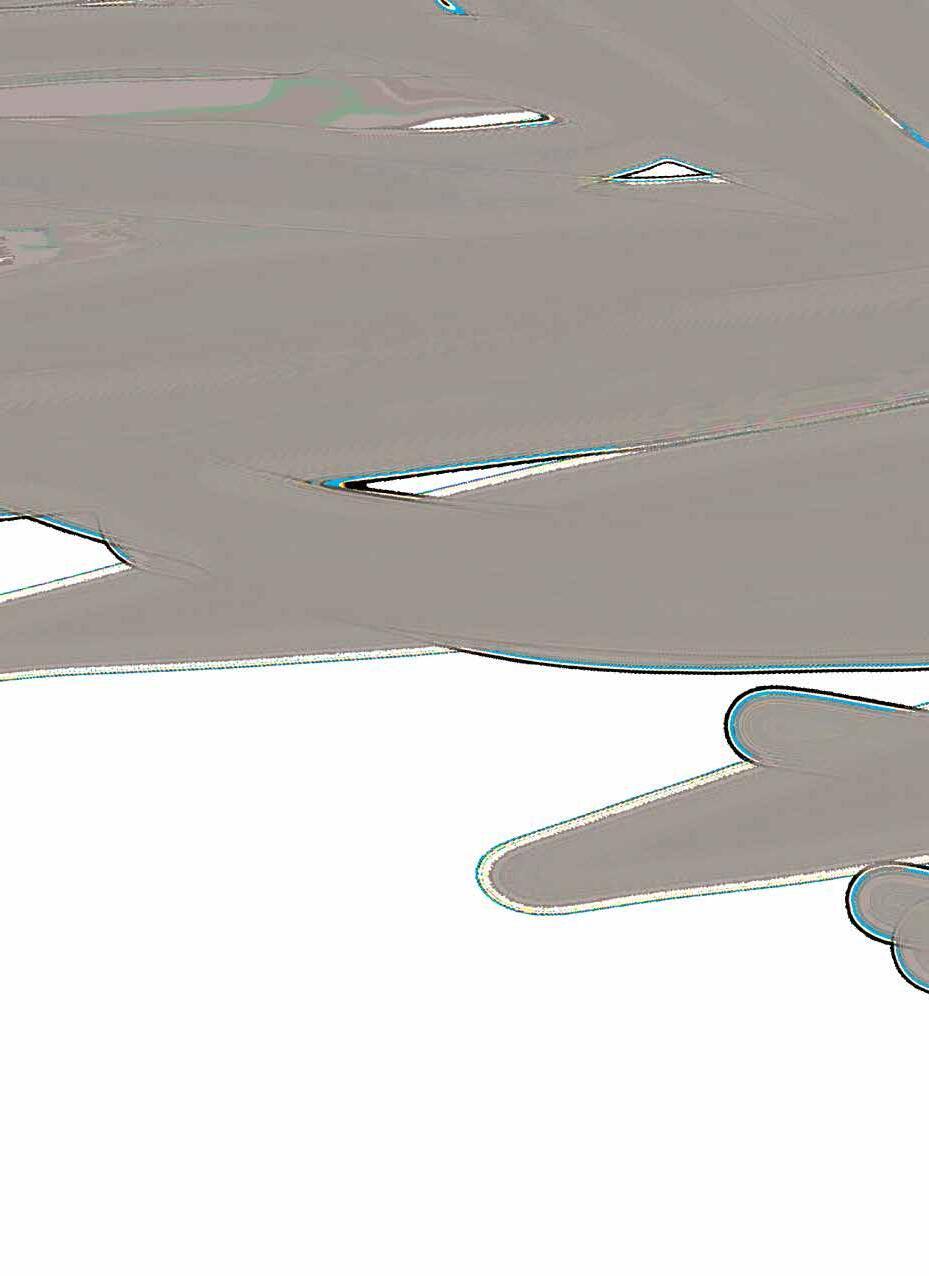
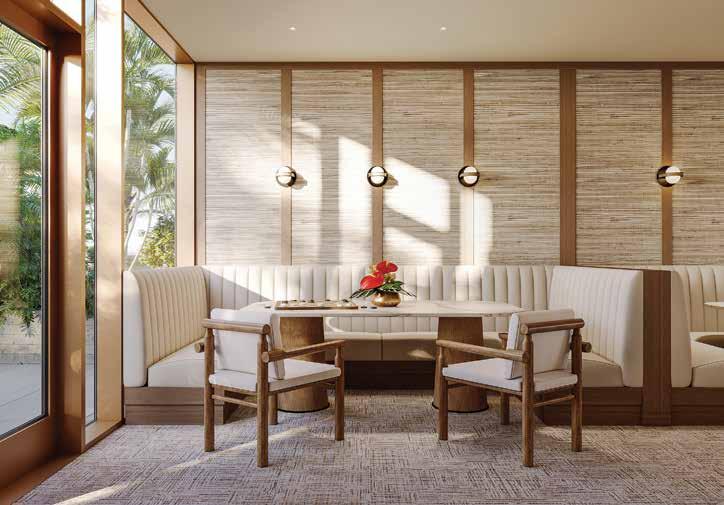
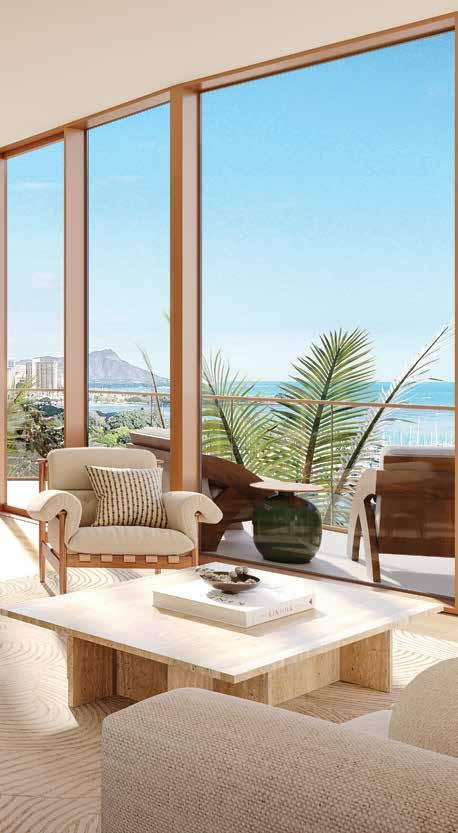
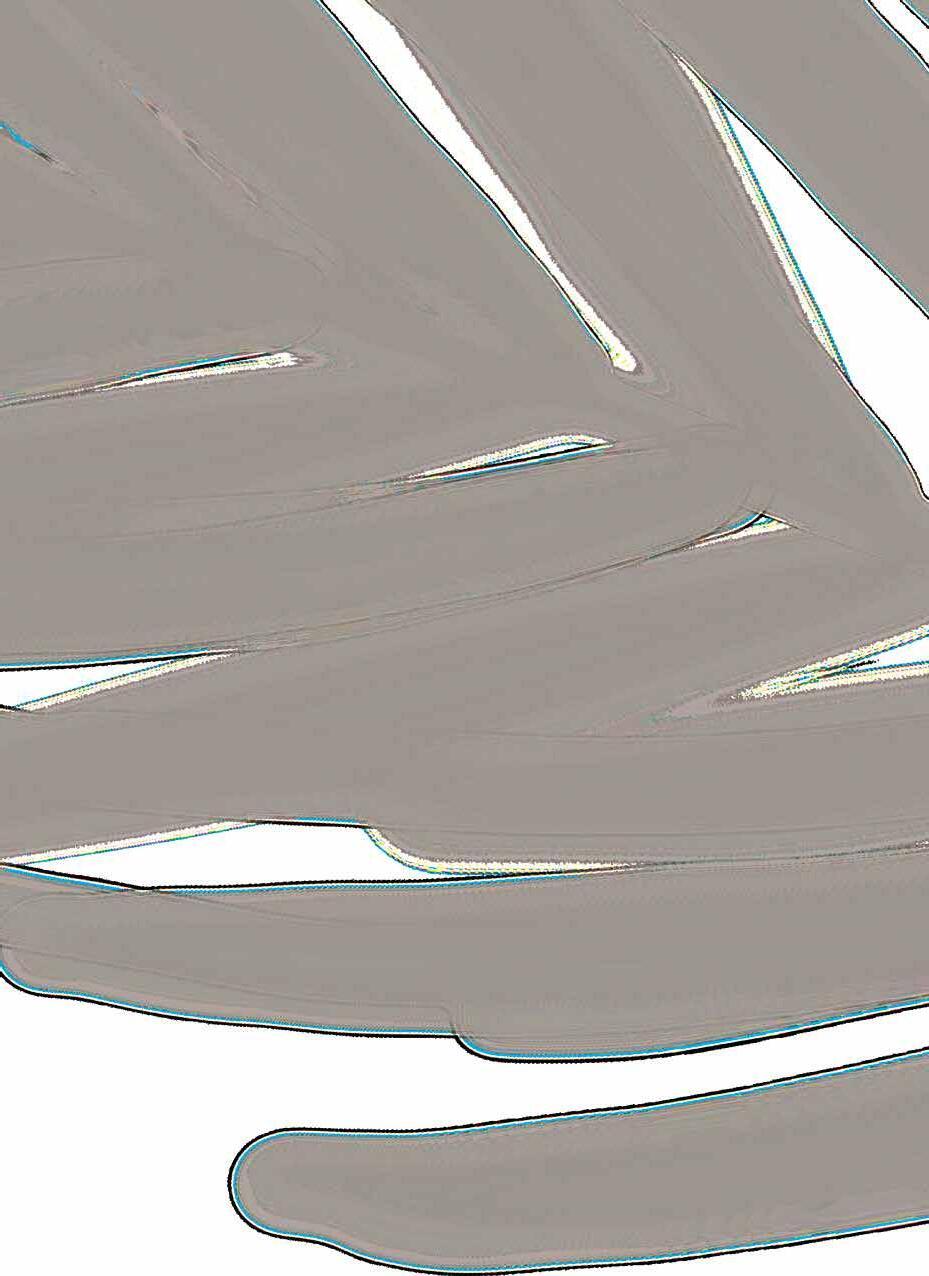
Ala Moana Center Sales Gallery 1450 Ala Moana Blvd., Suite 3860 Honolulu, Hawai‘i 96814 Mall Level 3 alia888alamoan a .com 1.808.466.1890 Co nnect with us on social: @alia888alamoa n a | #liveatali a Proudly developed by Exclusive Project Broker: Heyer & Associates, LLC RBO-17416 1288 Ala Moana Boulevard, Suite 108, Honolulu, Hawaii 96814 Courtesy to qualifying brokers; see Project Broker for details. DISCLAIMER: Alia (“Project”) is a proposed condominium project that does not yet exist, and the development concepts therefor continue to evolve and are subject to change without notice. All figures, facts, information, and prices are approximate and may change at any time. All renderings and other information depicted are illustrative only and are provided to assist the purchaser in visualizing the Project, and may not be accurately depicted, and are subject to change at any time. Visual depictions of the Project are artists’ renderings and should not be relied upon in deciding to purchase a unit, and the developer makes no guarantee, representation, or warranty whatsoever that the Project and units depicted will ultimately appear as shown. The developer does not own or control the land outside of the Project and does not guarantee the current or future use thereof. To the extent permitted by law, the developer disclaims all liability that may arise out of errors or omissions in the content of this ad, including claims for actual or consequential damages. This is not intended to be an offering or solicitation of sale in any jurisdiction where the Project is not registered in accordance with applicable law or where such offering or solicitation would otherwise be prohibited by law. Renderings by Steelblue. WARNING: THE CALIFORNIA DEPARTMENT OF REAL ESTATE HAS NOT INSPECTED, EXAMINED, OR QUALIFIED THIS OFFERING. Breathtaking ocean views, thoughtfully designed floor plans, and inspired amenities coalesce to create an unmatched residential experience.
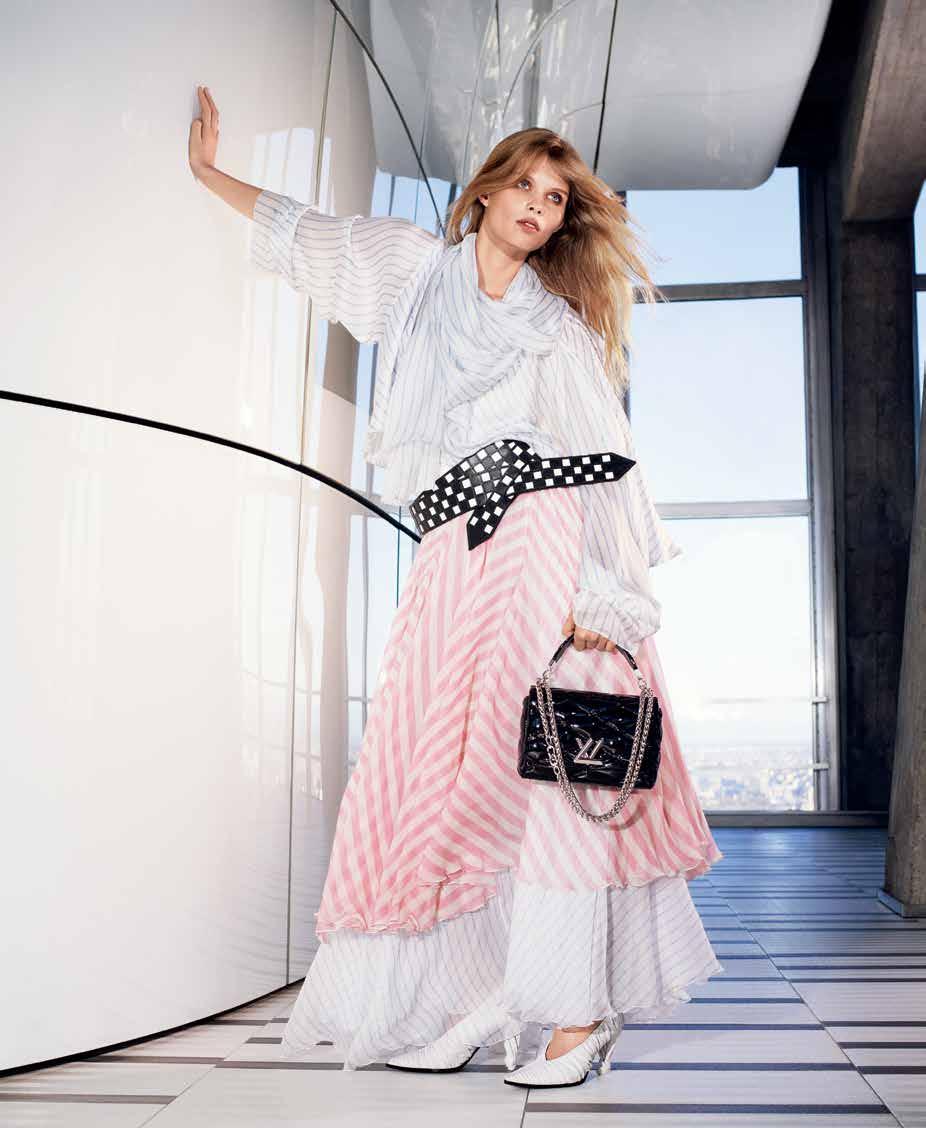




























































 Romare Bearden’s lithograph Pilate (1979).
© 2023 Romare Bearden Foundation / Licensed by VAGA at Artists Rights Society (ARS), NY.
Romare Bearden’s lithograph Pilate (1979).
© 2023 Romare Bearden Foundation / Licensed by VAGA at Artists Rights Society (ARS), NY.
 Faith Ringgold’s screenprint Wynton’s Tune (2004).
©2023 Faith Ringgold / Artists Rights Society (ARS), New York, Courtesy ACA Galleries, New York.
Faith Ringgold’s screenprint Wynton’s Tune (2004).
©2023 Faith Ringgold / Artists Rights Society (ARS), New York, Courtesy ACA Galleries, New York.

 Emma Amos’ etching Twined Flowers (2009).
© 2023 Emma Amos / Licensed by VAGA at Artists Rights Society (ARS), NY.
Emma Amos’ etching Twined Flowers (2009).
© 2023 Emma Amos / Licensed by VAGA at Artists Rights Society (ARS), NY.
















 Some of Hawai‘i’s most notable artists have been members of Honolulu Printmakers, one of the oldest printmaking collectives in the country.
Some of Hawai‘i’s most notable artists have been members of Honolulu Printmakers, one of the oldest printmaking collectives in the country.



















 This on-the-go papamū board from the company Hawaiian Checkers comes with ‘ili’ili playing stones, pictured here wrapped in a laua‘e-patterned bandana from Salvage Public alongside Hawaiian heirloom bracelets by HIE.
This on-the-go papamū board from the company Hawaiian Checkers comes with ‘ili’ili playing stones, pictured here wrapped in a laua‘e-patterned bandana from Salvage Public alongside Hawaiian heirloom bracelets by HIE.




 Mō‘īokekai Edwards is dressed in Salvage Public’s Naval shirt for a game of kōnane on the papamū stone board at SALT at Our Kaka‘ako.
Mō‘īokekai Edwards is dressed in Salvage Public’s Naval shirt for a game of kōnane on the papamū stone board at SALT at Our Kaka‘ako.











 Robert Graham Drift Away printed camp shirt from Neiman Marcus. ‘Ike frame eyewear from Salvage Public. Necklace, model’s own.
Zegna cashmere Oasi overshirt, pocket polo shirt, cotton-stretch 5-pocket pants, Konstantino Phidias silver and bronze tapered cross pendant, and sterling silver box chain, all from Neiman Marcus. ‘Ike frame eyewear from Salvage Public. Ring, model’s own.
Robert Graham Drift Away printed camp shirt from Neiman Marcus. ‘Ike frame eyewear from Salvage Public. Necklace, model’s own.
Zegna cashmere Oasi overshirt, pocket polo shirt, cotton-stretch 5-pocket pants, Konstantino Phidias silver and bronze tapered cross pendant, and sterling silver box chain, all from Neiman Marcus. ‘Ike frame eyewear from Salvage Public. Ring, model’s own.


 Robert Graham sport coat and Pleiades button-down shirt from Neiman Marcus. Rings, watch, and bracelet, model’s own.
Robert Graham sport coat and Pleiades button-down shirt from Neiman Marcus. Rings, watch, and bracelet, model’s own.


 “No Worry” wool jacquard crewneck knit, Hawaiian Petroglyph swim shorts, Laua‘e Echo cotton/silk bandana, and ‘Ike frame eyewear, all from Salvage Public. Konstantino two-tone coin pendant and sterling silver pave spinel signet ring from Neiman Marcus. Bracelet, ring, and watch, model’s own.
“No Worry” wool jacquard crewneck knit, Hawaiian Petroglyph swim shorts, Laua‘e Echo cotton/silk bandana, and ‘Ike frame eyewear, all from Salvage Public. Konstantino two-tone coin pendant and sterling silver pave spinel signet ring from Neiman Marcus. Bracelet, ring, and watch, model’s own.
 Robert Graham Shere Khan printed camp shirt, Konstantino silver chain necklace, and Prada square acetate sunglasses, all from Neiman Marcus.
Robert Graham Shere Khan printed camp shirt, Konstantino silver chain necklace, and Prada square acetate sunglasses, all from Neiman Marcus.


 Robert Graham Pleiades button-down shirt from Neiman Marcus. Ring and bracelet, model’s own.
Loose-fitting shirt in verdigris silk twill with Étriers print and shorts with elastic waist in licorice plume nubuck calfskin from Hermès of Paris. Obake necklace, rings, watch, and bracelet, model’s own.
Robert Graham Pleiades button-down shirt from Neiman Marcus. Ring and bracelet, model’s own.
Loose-fitting shirt in verdigris silk twill with Étriers print and shorts with elastic waist in licorice plume nubuck calfskin from Hermès of Paris. Obake necklace, rings, watch, and bracelet, model’s own.




































 Clockwise from top right is the dining room at Nature Waikiki, Robynne Mai‘i of Fête, and private chef Regina Lapian.
Clockwise from top right is the dining room at Nature Waikiki, Robynne Mai‘i of Fête, and private chef Regina Lapian.





 Robynne Mai‘i
Robynne Mai‘i















